Northern Madagascar, 2022
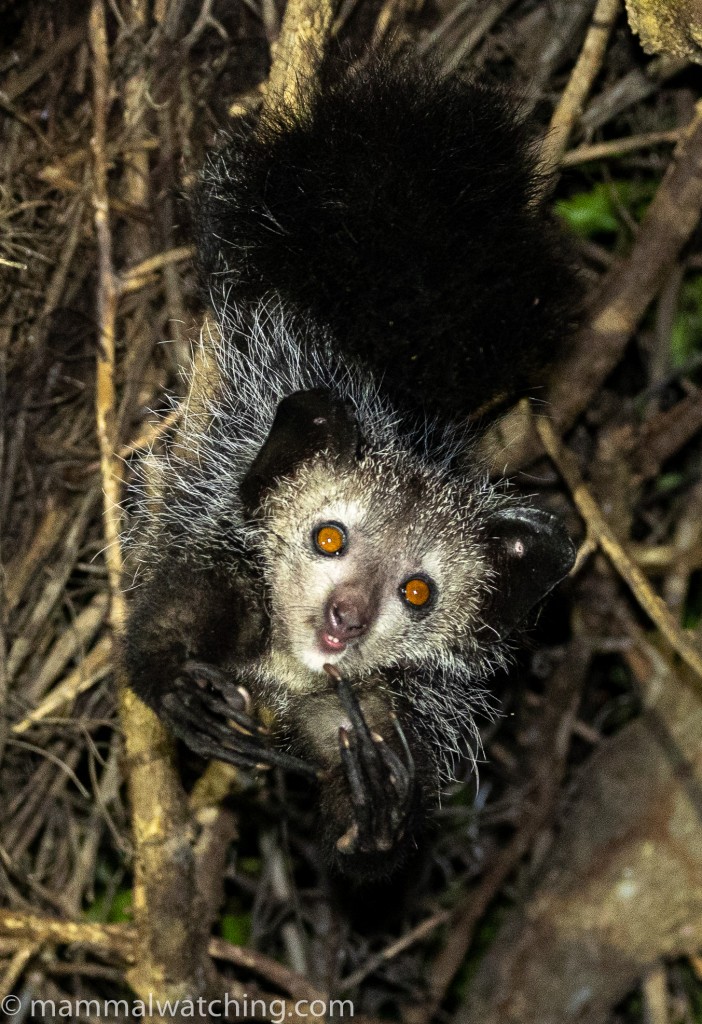
Aye-aye (Daubentonia madagascariensis)
I spent a very happy two weeks in Madagascar in 2010. I reported back “in short, Madagascar is as good as it gets”. Why it took me 11 years to return is almost as inexcusable as the last season of Game of Thrones.
In my defense I was planning to visit in 2020, inspired by a burning desire to see an Aye-Aye. Justin Brown’s 2019 trip report was additional motivation as was Mac Hunter’s report from the same year. But COVID, and Madagascar was off limits for more than two years. Within days of the island reopening its borders I was emailing guides to reignite the trip I had planned for 2020.
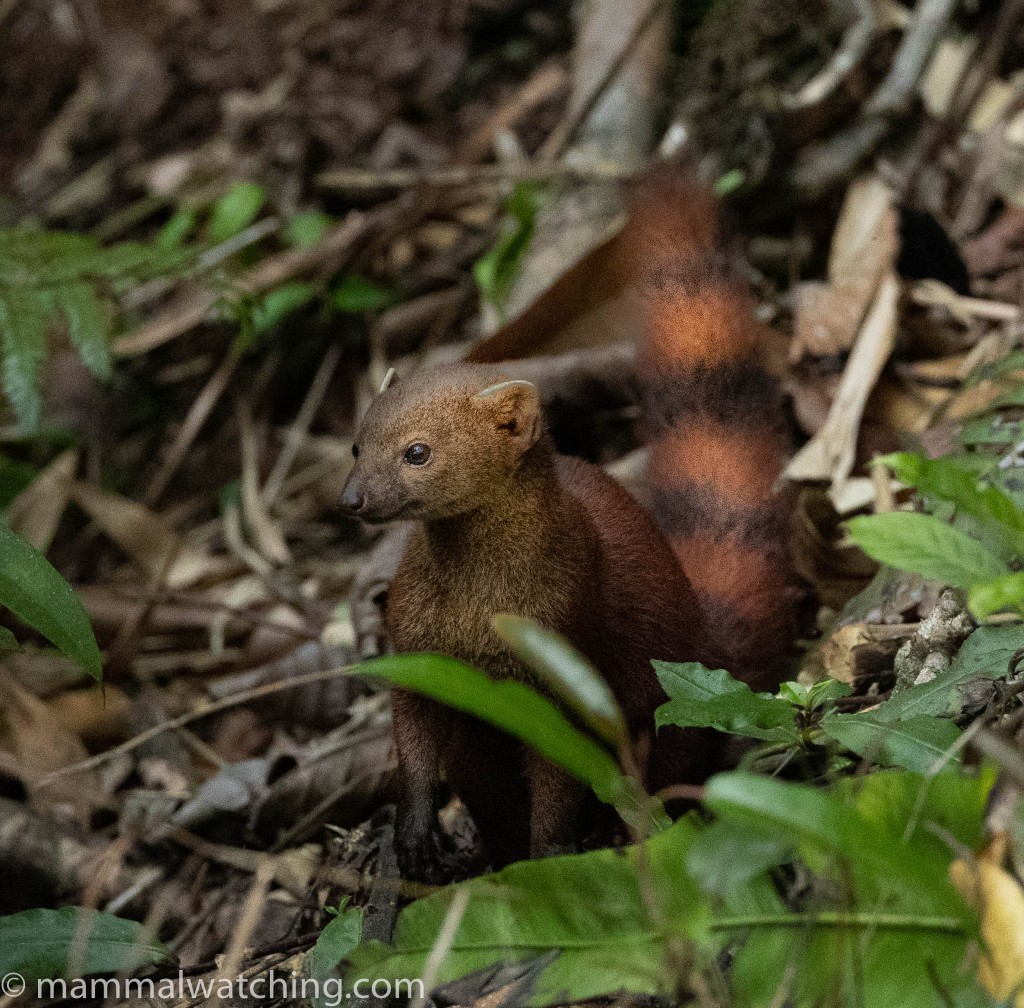
Ring-tailed Vontsira (Galidia elegans)
There are some excellent local operators and guides in Madagascar. But even back in 2019 when I started thinking about a trip I had found it difficult to find someone who would answer my many annoying questions. The trouble is, I suppose, that the good guides are usually on the road with clients and have little bandwidth for pre-trip planning.
I needed a recommendation. And Mogens Trolle was kind enough to provide one from a colleague at the Natural History Museum of Denmark. I should talk to Patrick Richard Randrianantenaina.
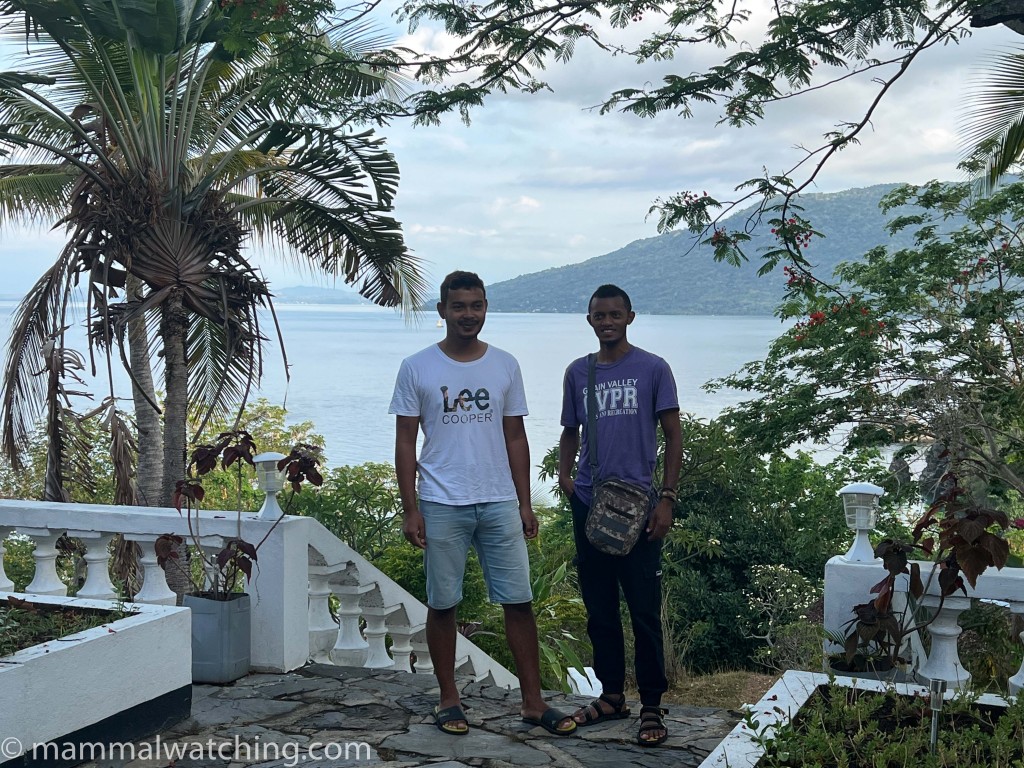
Patrick on the right, and our driver Chan in Ankify.
Patrick grew up in Ranomafana National Park. His dad – Richard Randriamampionona – also works in the park and has helped numerous scientists with research projects. So Patrick has an excellent network of biologist friends around the country. Tick.
One look at his Instagram feed shows he loves looking for wildlife. Tick. He speaks perfect English. Tick. And he replied quickly – and in detail – to all my emails. Tick. Tick. Tick.
More on Patrick later but I will not hesitate to use him for my next trip. In every place we also used local guides. This is (rightly in my opinion) compulsory in most places. It was vital to us finding many of the mammals and also allowed us to make a direct – and very tangible – demonstration to the locals of the financial value of the mammals. Like it or not, without ecotourism many Madagascan species seem doomed to extinction.
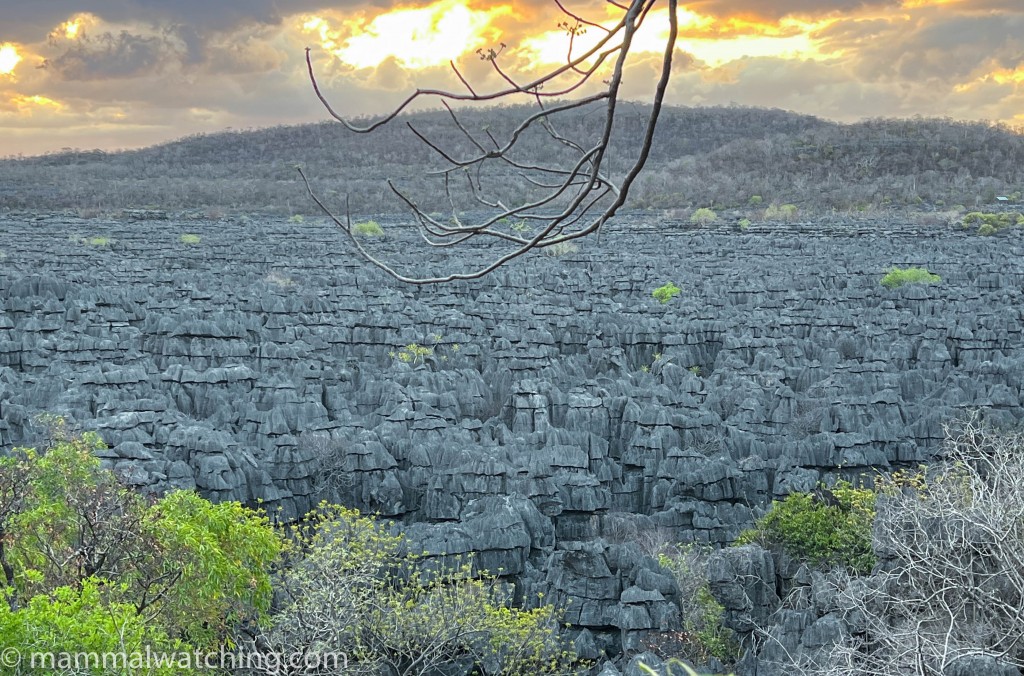
Spectacular tsingy scenery, Ankarana National Park
The Itinerary
October and November – late in the dry season – seems an optimal time to visit the north. Warmer temperatures mean some of the mammals are more active (though you would need to wait for the rain to see tenrecs). The rains usually start in late November and roads can quickly become impassable (the picture below is the after affect of a light shower). I opted for a trip starting in late October. And I built an itinerary around seeing as many new lemurs as possible in the far north of the island, with a particular focus on Aye-Ayes and the Sifakas.
Fine tuning the itinerary required a bit of back and forth. Patrick, like many of the guides I talked to in Madagascar, is used to travelling with people from strange cultures who still cling to primitive beliefs including “rest days” and sightseeing. By the end of the trip I like to think Patrick was beginning to get it. But its a process.
Planning, even while we were there, was frustrated by the lack of reliable estimates of travel times between sites: primarily because every drive depends on the vicissitudes of the current road conditions and Patrick had not visited the region since before COVID.
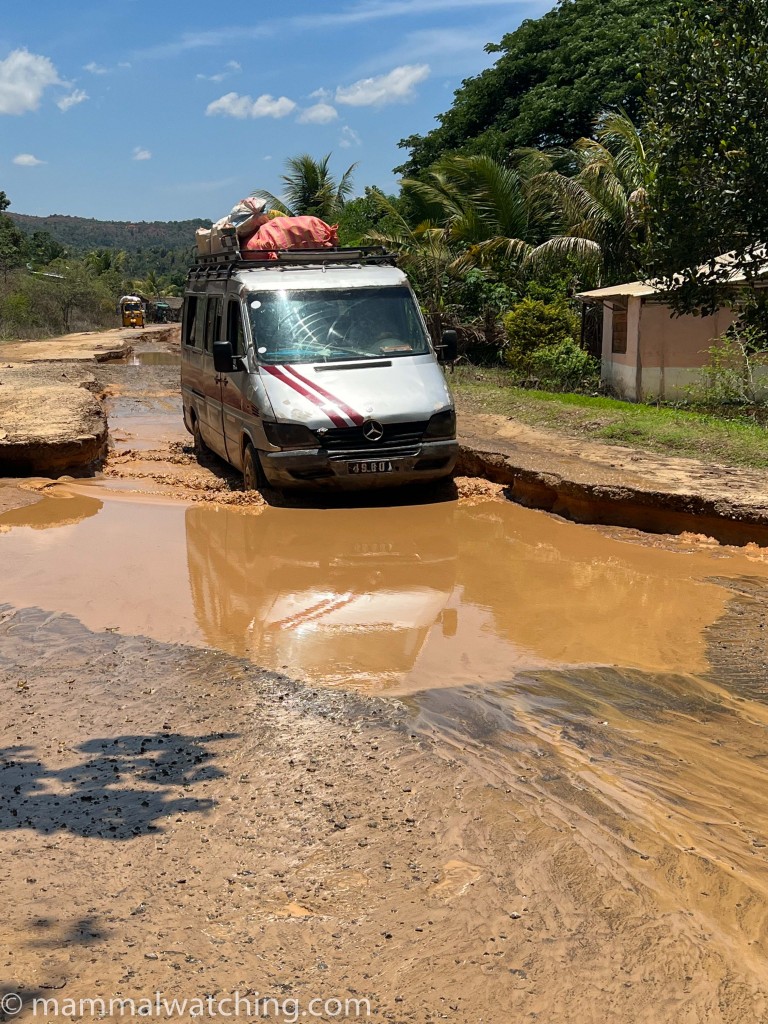
Highway near Ambanja
To make things still more complicated, flying internally on Tsaradia – the domestic airlines – is difficult to plan because we were warned the schedule can change frequently. Moreover they have only 4 aircraft, and so many destinations are only served two or three times a week. Nearly all flights go to/from Antananarivo (Tana).
I had heard many stories about the airline’s infamous unreliability. But they seem to have lifted their game. None of my flights were delayed. Nor did I hear of anyone else having flight delays when I was there. Indeed some took off and landed on the very minute they were supposed to. We could almost have been in Japan.
Booking tickets online was a different story: more France than Japan. French credit cards seem to work fine. US credit cards do not. I got so frustrated I almost sent my money by cell phone to the personal number of oe the women working for the airline’s customer service. She had kindly offered to purchase the ticket for me. At least I think she was being kind and I got cold feet when she asked for a “gift”. After multiple attempts I got a UK debit card to work.
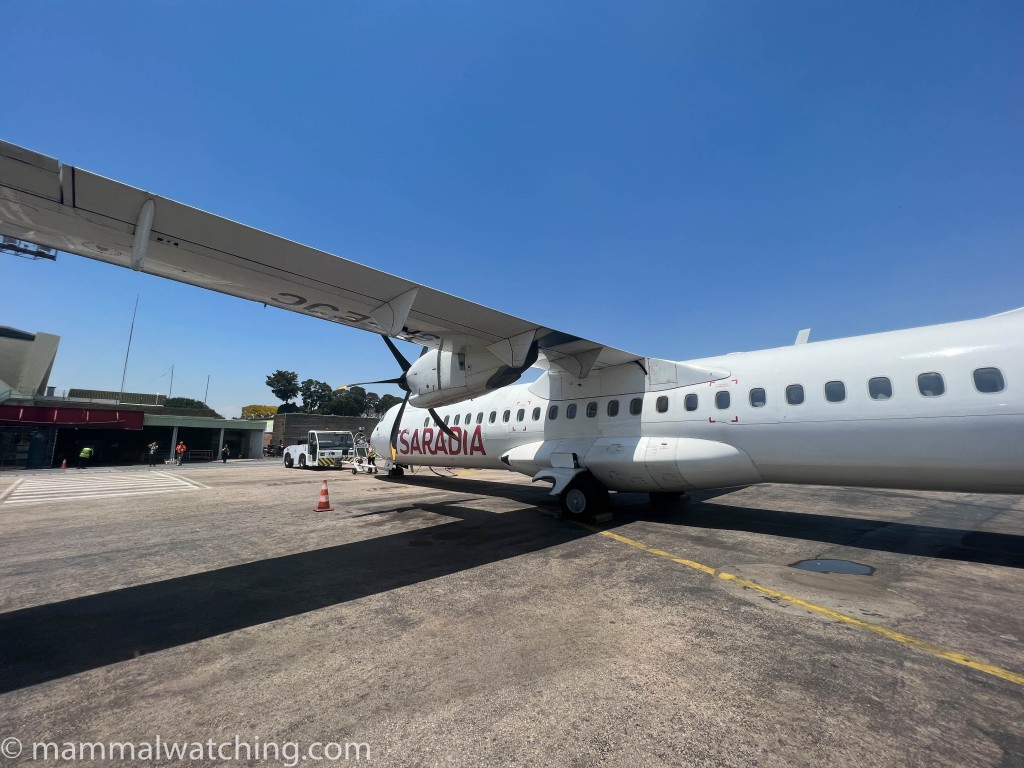
One of Tsaradia’s four aircraft
This all sounds very complicated I know. But the good news about mammalwatching in Madagascar is that the amount of research, and the skill of the local guides, means it is much, much easier to find most of the key mammal species here than in almost any other place I can think of. Just 24 hours in a park is often enough to pretty much clean up. So a successful trip here is as much about the logistics and planning as anything else.
After much back and forth the final itinerary for the northern part of the trip went like this. In hindsight I would not have done it any differently.
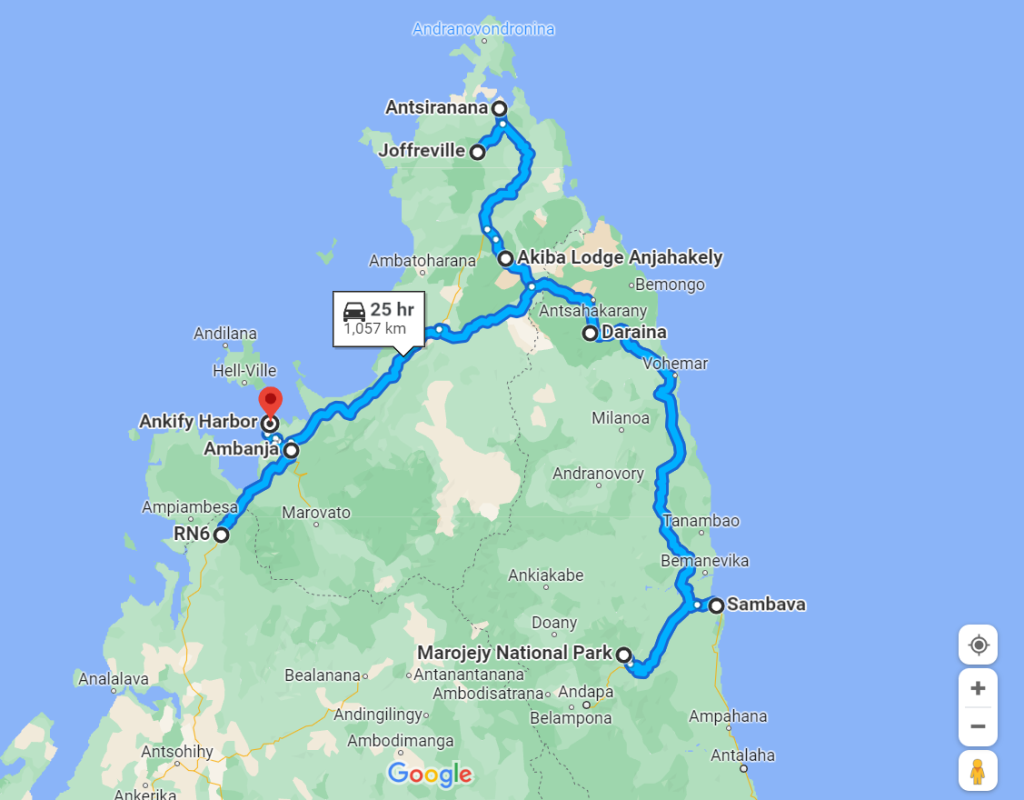
Day 1: Fly Tana to Diego Suarez. An hour’s drive to Montagne D’Ambre NP. Afternoon into night walk.
Day 2: Morning walk at Montagne D’Ambre. 4 hour drive to Andrafiamena Forest. Night walk,
Day 3: Spend the day in Andrafiamena then a 2 hour drive to Ankanara NP.
Day 4: Spend the day in Ankarana Special Reserve exploring bat caves and then a night walk.
Day 5: A 2 hour drive to Camp Tatersall (Daraina Reserve). Afternoon and night walks. Aye-aye stakeout.
Day 6: A full day’s drive to Sambava town.
Day 7: A 2 hour drive to Marojejy NP and a 4 hour hike to Camp 1. Night walk,
Day 8: A 3 hour hike to Camp 2 in Marojejy then searching for Silky Sifakas.
Day 9: A 4 hour hike back to the park entrance then an 8 hour drive to Ambilobe town.
Day 10: Morning rest then a 3 hour drive to Ambanja town. Spotlighting around abandoned plantations.
Day 11: Full day driving to Andamoty ( to see Blue Eyed Black Lemur) then to Ankify.
Day 12: Speedboat to Nosy Be. Whalewatching and night walk.
Day 13: Fly to Tana.
The rest of the group flew home from Tana but I stayed on for a few extra days to return to Kirindy and Ranomafana National Parks and Kianjavato Forest. I will cover that in my next report.
The other stuff: food, hotels, vehicle, books.
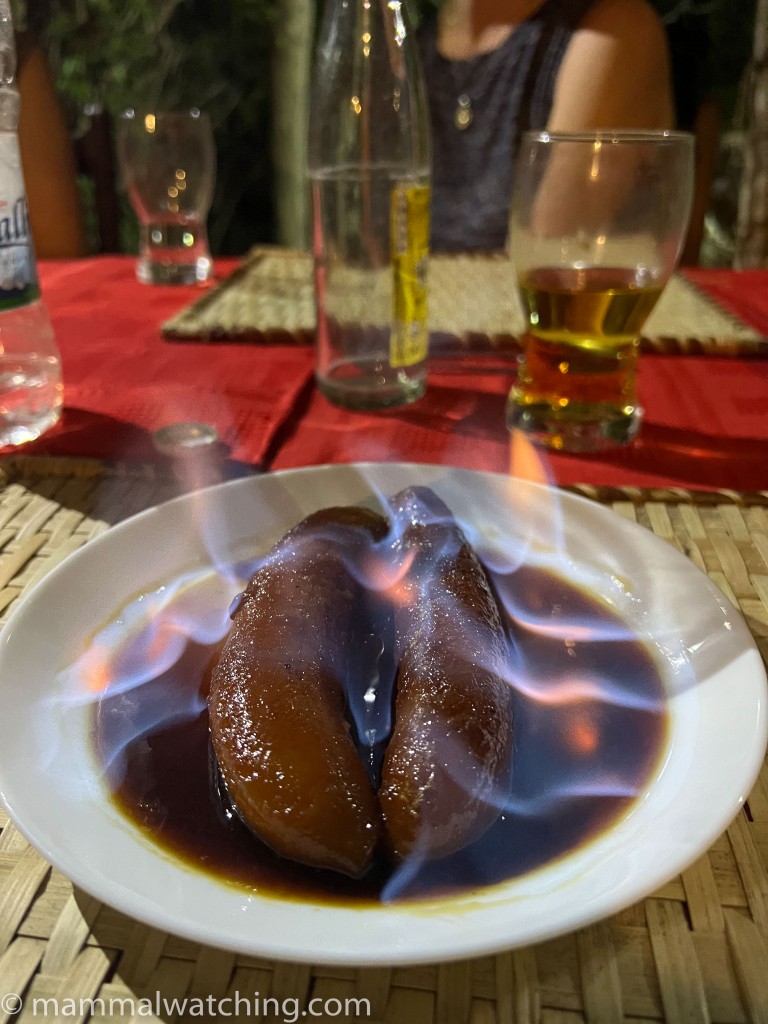
No Madagascan menu is complete without flambeed bananas
The food in Madagascar is good, especially if you like steak and bananas. Zebu steak au poivre was a daily staple, as were flambeed bananas. Diversity was not a strong point on most menus and if you chose to eat in many places after 7pm you are running the gauntlet of “is there anything left to eat” with menu items often disappearing in real time once we had ordered them. My birthday meal started life as Chicken Cordon Bleu with french fries. Over the course of 30 minutes it morphed into Steak au Poivre with fries, then Steak au Poivre with a shared portion of fries, to Steak au Poivre with bread. Half an hour later I got some Steak sans Poivre. Luqman broke into the closed bakery section to find some cake in the fridge.
We chose accommodation primarily on its convenience to mammalwatching. It was always clean, always friendly and sometimes very comfortable. A couple of times we ended up staying in pretty basic places when more luxurious – and only slightly more expensive – options would have been equally convenient. Patrick is used to catering for backpackers.
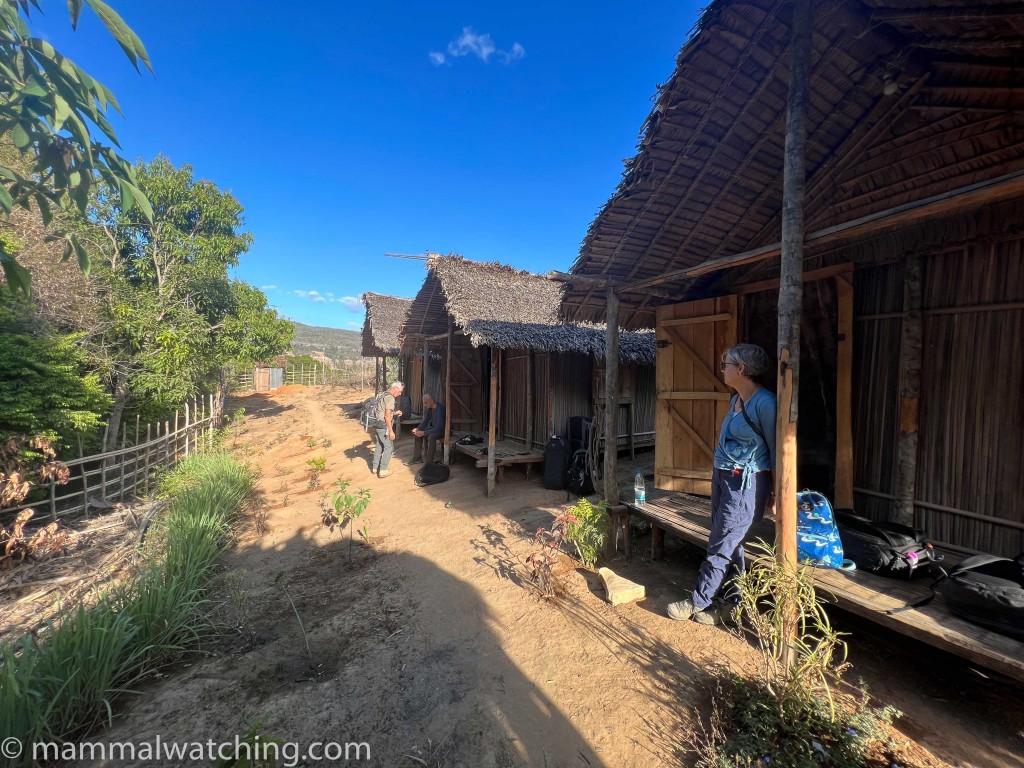
This was not the luxury lodge in Andrafiamena.
Patrick organised a 4WD minibus for us. I have been in more comfortable vehicles but the choice in the north is limited. Do not expect AC. As soon as we stopped the back of the bus turned into a sauna which provoked frequent comments from whoever was frying in the rear seat along the lines “just get in the bloody car <insert mammalwatcher here> we need to move NOW”.

Ian, Tracey and Jean-Michel make the most of the unpopular back seat of the bus. Photo Luqman Patel
I used the very useful Lynx Mammals of Madagascar field guide, along with the second edition of Conservation International’s Lemurs of Madagascar to both plan the trip and try to ID what we saw (the park guides are excellent but most of them are not up-to-date with the latest taxonomy … which has been changing very quickly with many new species discovered this century. Nick Garbutt’s new Mammals of Madagascar is about to be released and a greatly expanded Lemurs of Madagascar is in the pipeline too.
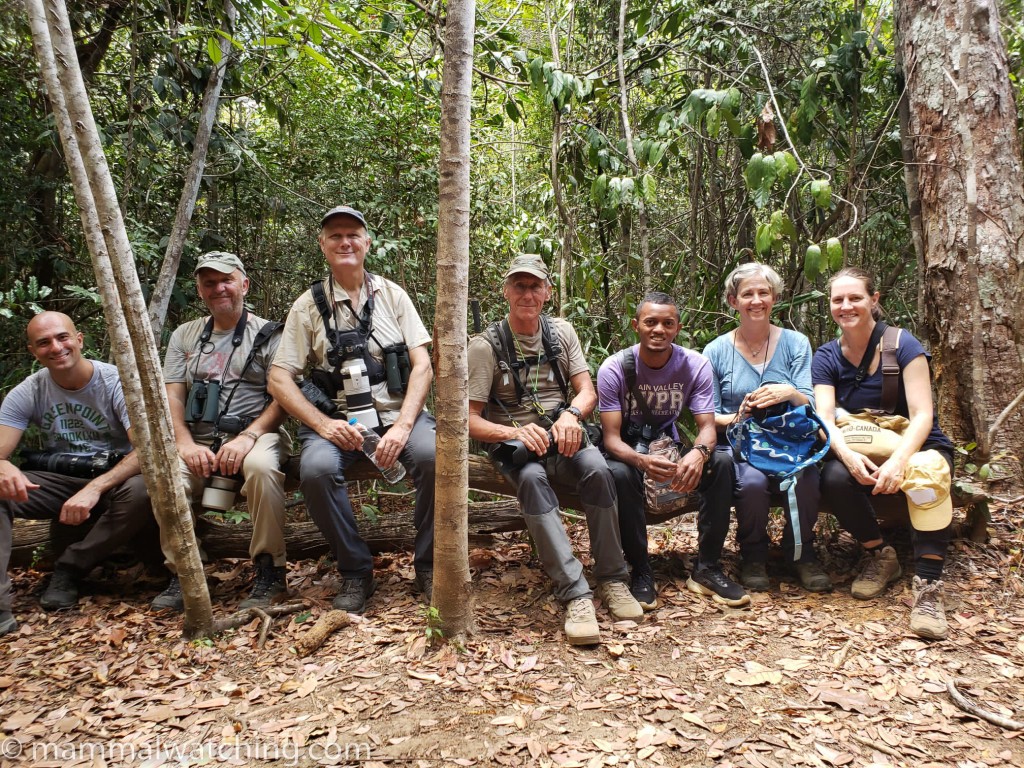
From the left: Luqman, me, Ian, Jean-Michel, Patrick, Tracey and Amber.
And so six months after first talking to Patrick, Amber and I were in Tana Airport checking in for an early morning flight north to Diego Suarez with Jean Michel-Bompar, Luqman Patel, Ian Thompson and Tracey Watchurst.
Montagne D’Ambre National Park
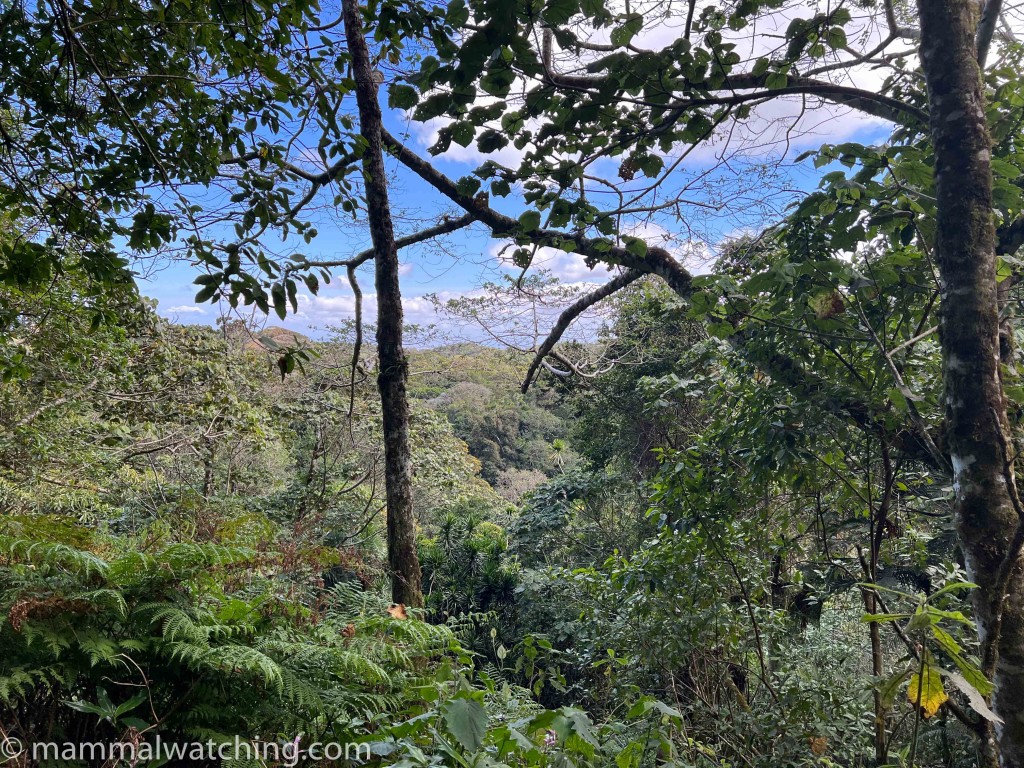
Key Species: Crowned Lemur; Sanford’s Brown Lemur; Amber Mountain Mouse Lemur; Amber Mountain Dwarf Lemur; Amber Mountain Fork-marked Lemur.
We spent our first night at the comfortable Domaine de Fontenay in Joffreville. The excellent Enyse was our local guide.
We arrived at the park at 3pm and as the sun was starting to set we found our first lemurs of the trip: Crowned Lemurs. This is a species we would see in several other places.
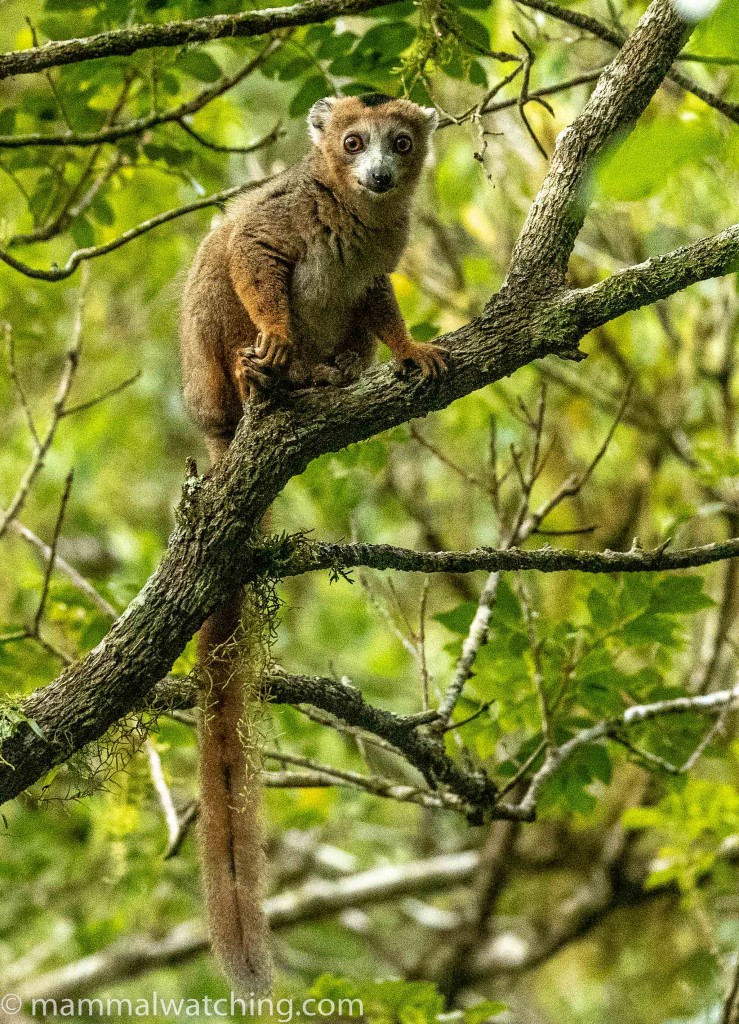
A male Crowned Lemur (Eulemur coronatus)
I believe most if not all of Madagascar’s National Parks prohibit people from entering after dark. But they are more relaxed about people entering in the afternoon and leaving an hour or two after dark. This was a strategy we used several times and it was effective in find nocturnal mammals. As soon as the sun set we saw the first of several Amber Mountain Dwarf Lemurs.
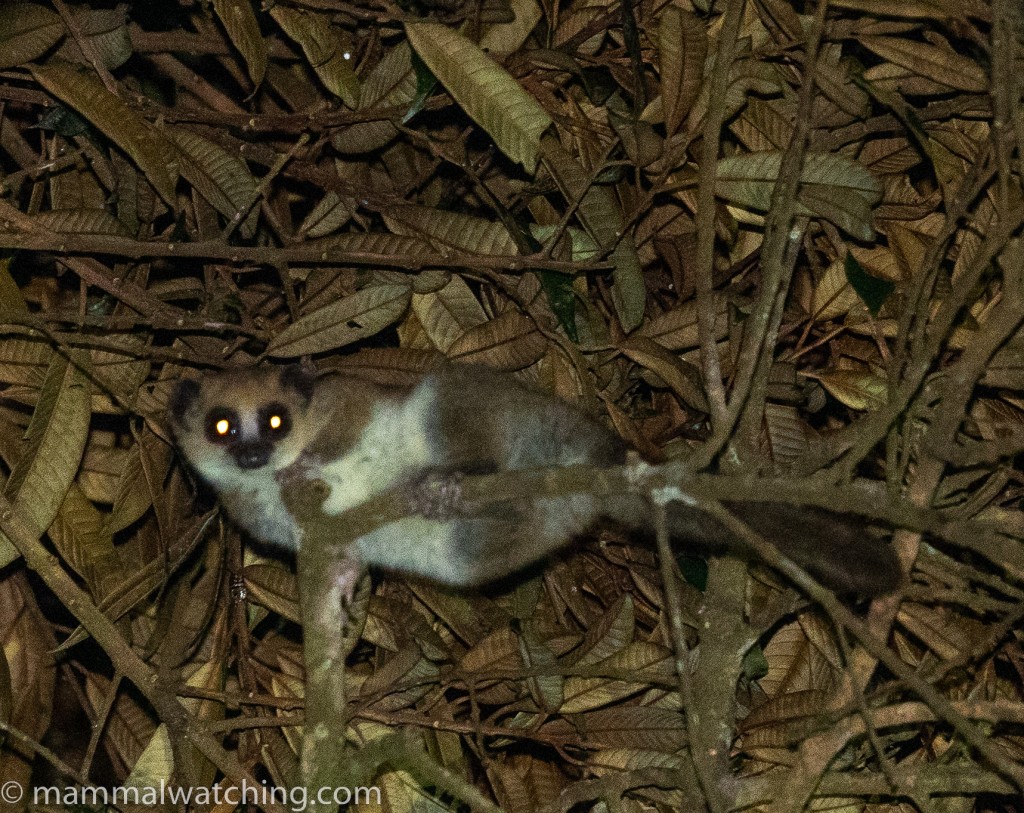
Montagne d’Ambre Dwarf Lemur (Cheirogaleus andysabini)
And then we heard – then saw – several Amber Mountain Fork-marked Lemurs.
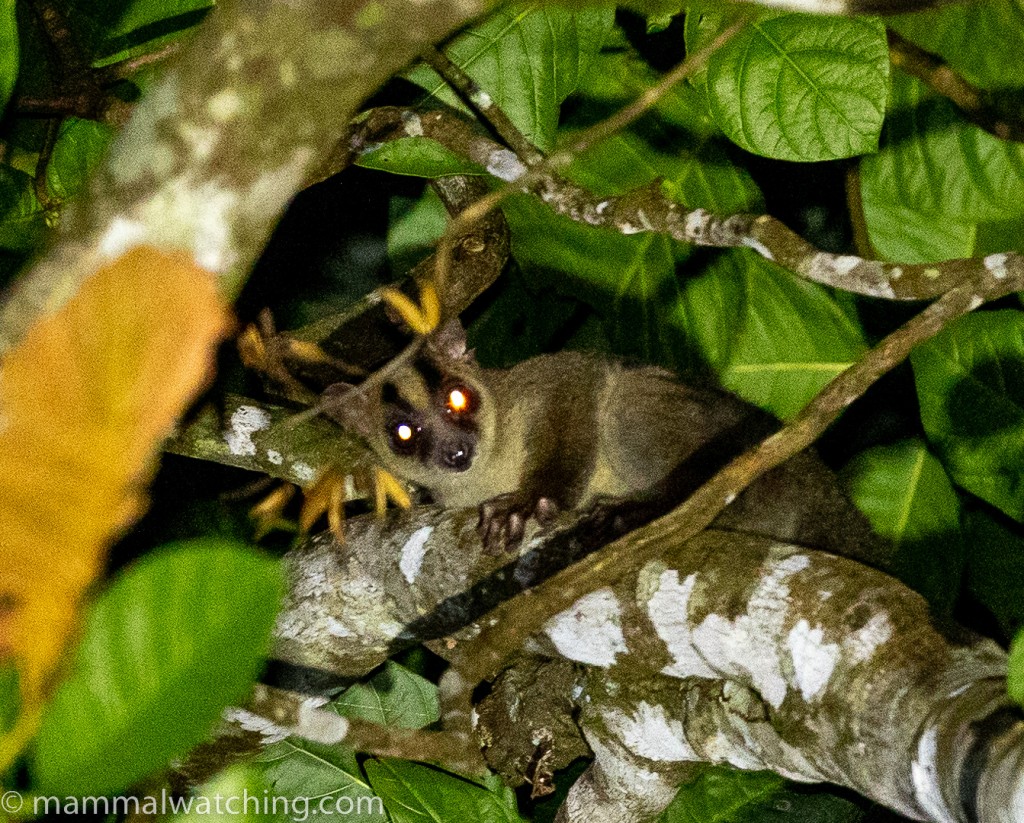
Montagne D’Ambre Fork-marked Lemur (Phaner electromontis)
Our last nocturnal target species here – Arnhold’s Mouse Lemur – took longer to find. But I tried not to stress as Enyse was confident we would find one close to where we left our car. We did.
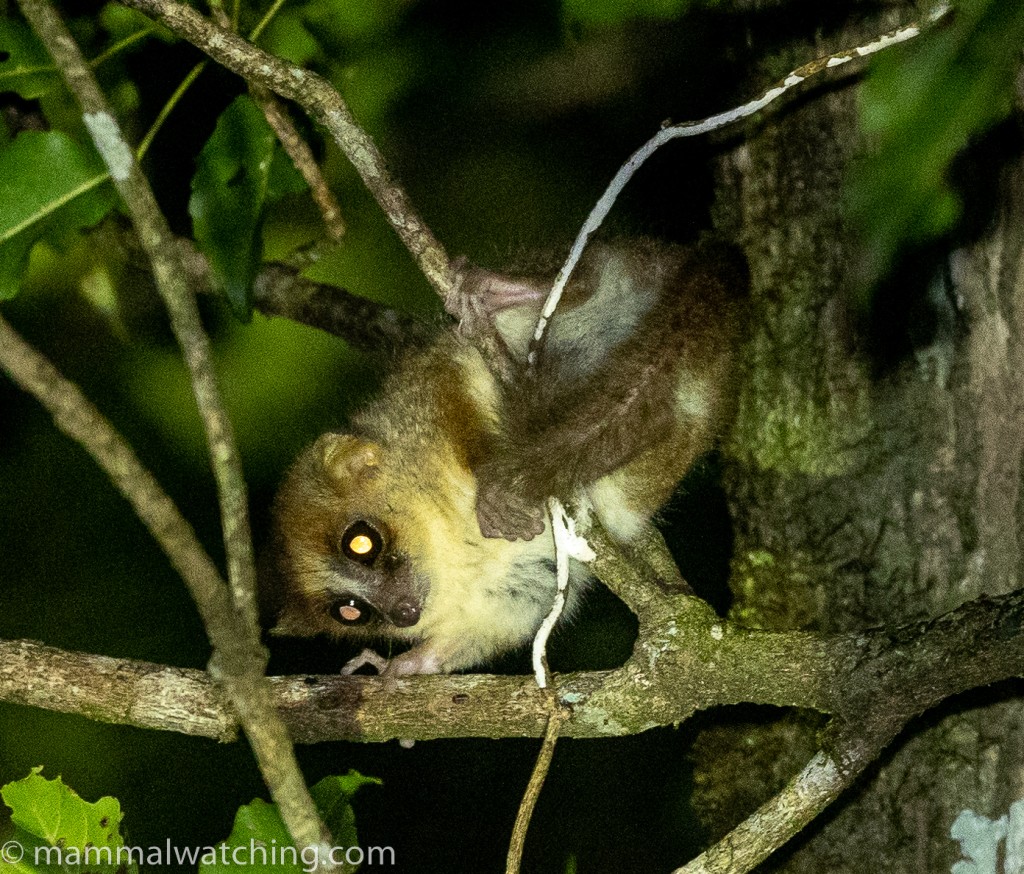
Arnhold’s Mouse Lemur (Microcebus arnholdi)
Back in the park the following morning it took a couple of hour’s walking the trails to find our first Sanford’s Brown Lemurs. The fifth and final key target for the park.
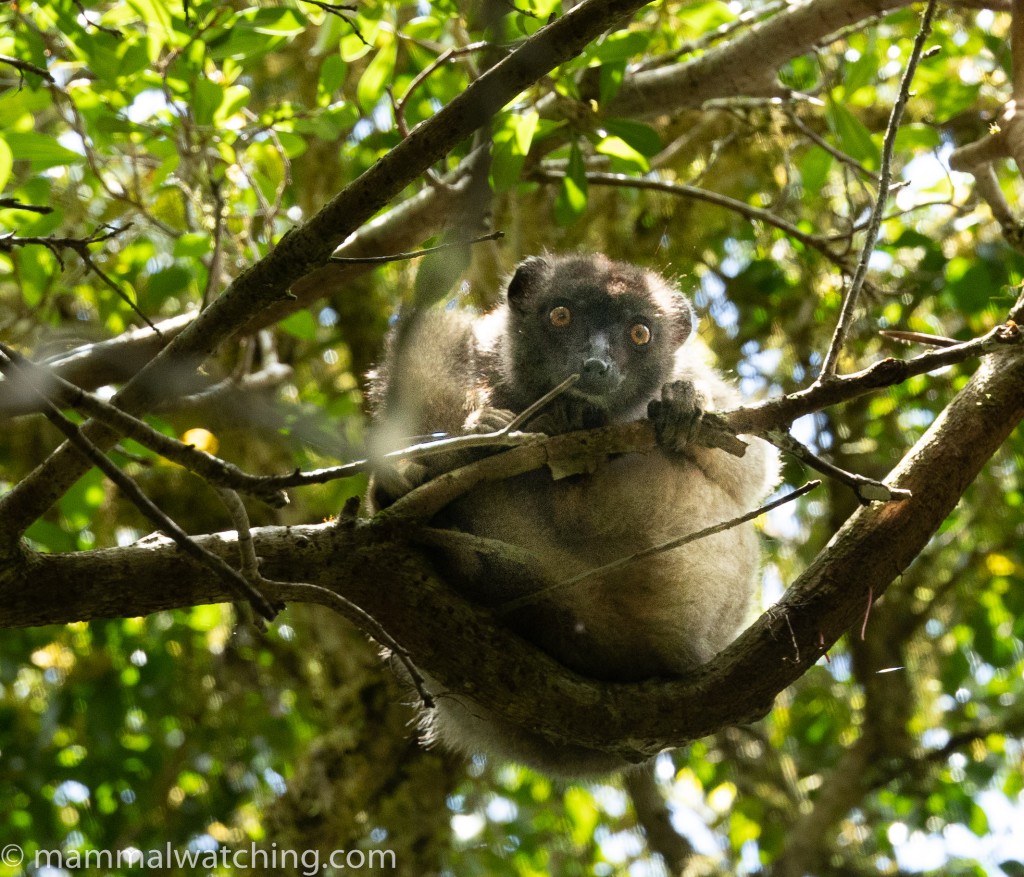
Sanford’s Brown Lemur (Eulemur sanfordi)
But we were not done yet. Amber Mountain, I learned when we got there , is a good place to see the beautiful Ring-tailed Vontsira or Ring-tailed Mongoose. Animals are quite often seen in the picnic area scavenging for leftovers. We made sure we were at the picnic area by midday. But after an hour there was no sign of a Vontsira and we returned to the minibus. We were on our way out when a security guard flagged us down. “Vontsira. Bushes. Now.”
We scrambled out of the bus and charged to the other end of the campsite. A Ring-tailed Vontsira was warily lurking just inside the forest. It was even more beautiful than I had imagined. If a Genet and a Red Panda ever got together…
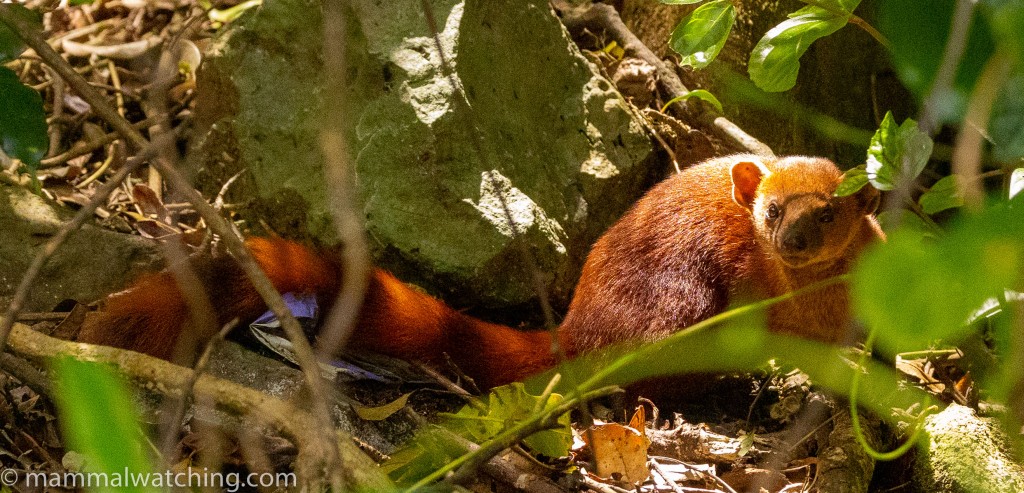
Malagasy Ring-tailed Mongoose (Galidia elegans)
Andrafiamena-Andavakoera Protected Area
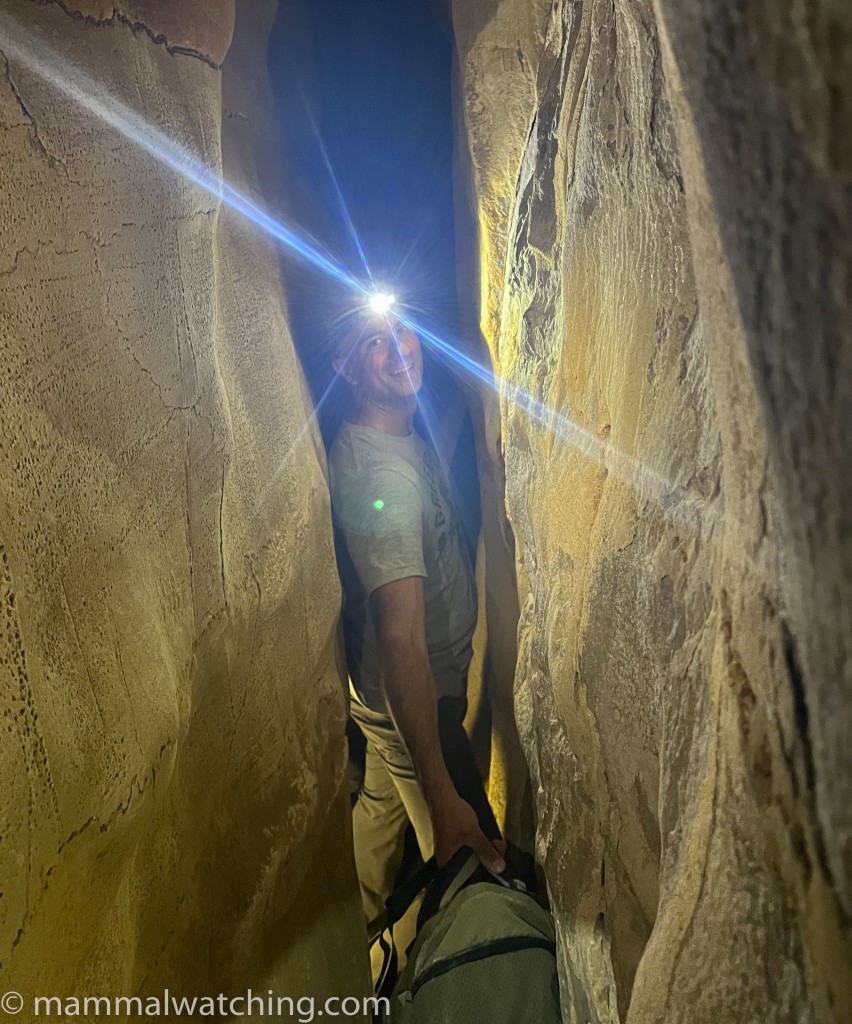
Key Species: Ankarana Sportive Lemur; Tavavatra Mouse Lemur; Perrier’s Sifaka.
A tasty, but long and slow, lunch meant we left Joffreville two hours later than we had hoped. The first of many lunch-borne delays. It was a four hour drive to Andrafiamena Reserve, and the last hour is on a very rugged road. A road that seemed even more rugged when driven in the pitch dark.
We had expected to stay at the beautiful Black Lemur Lodge in the reserve. As we arrived Patrick plucked up the courage to let us know that though he had tried to reserve us rooms at the lodge we had never got closer than the waiting list. The last minute cancellations he had hoped for had not materialised. We could have our meals at the lodge but we would stay in the local hotel next door. This news did not go down all that well when we saw how lovely the lodge was.
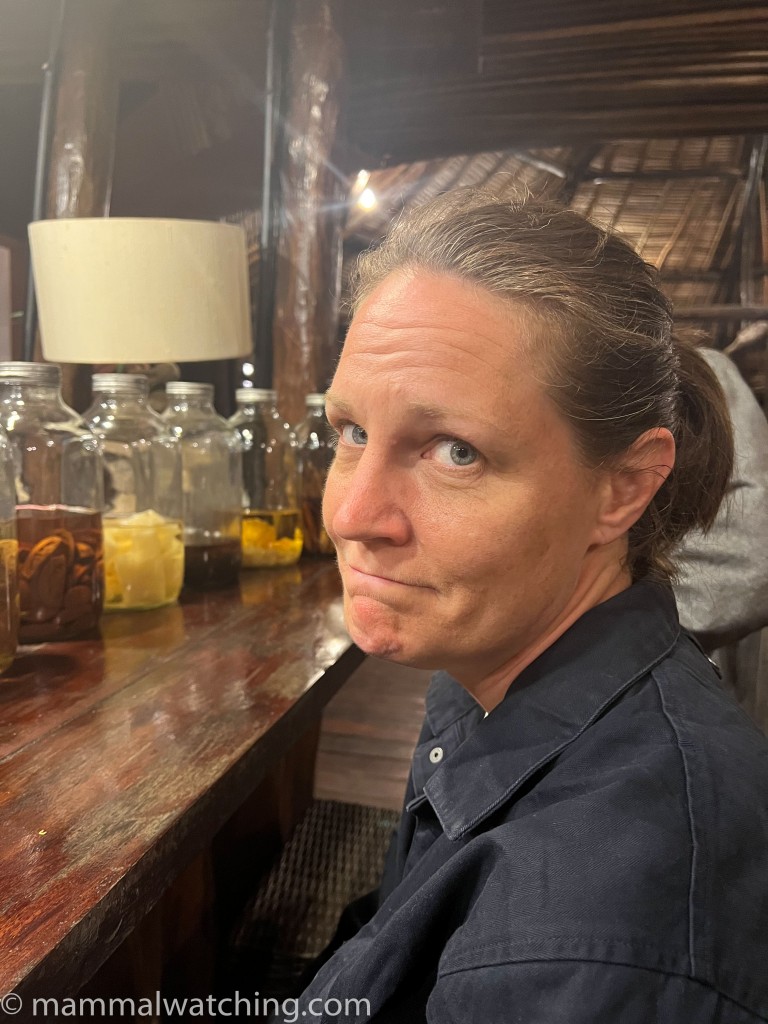
Amber’s “no room at the inn” face
The local “hotel” – 3 wooden rooms in the village with the soundproofing of a paper bag – was clean and comfortable. But it was not the Black Lemur Lodge.
A night walk in the park did not produce anything beyond this Black Rat and some very distant – sportive lemurish – eyeshine.
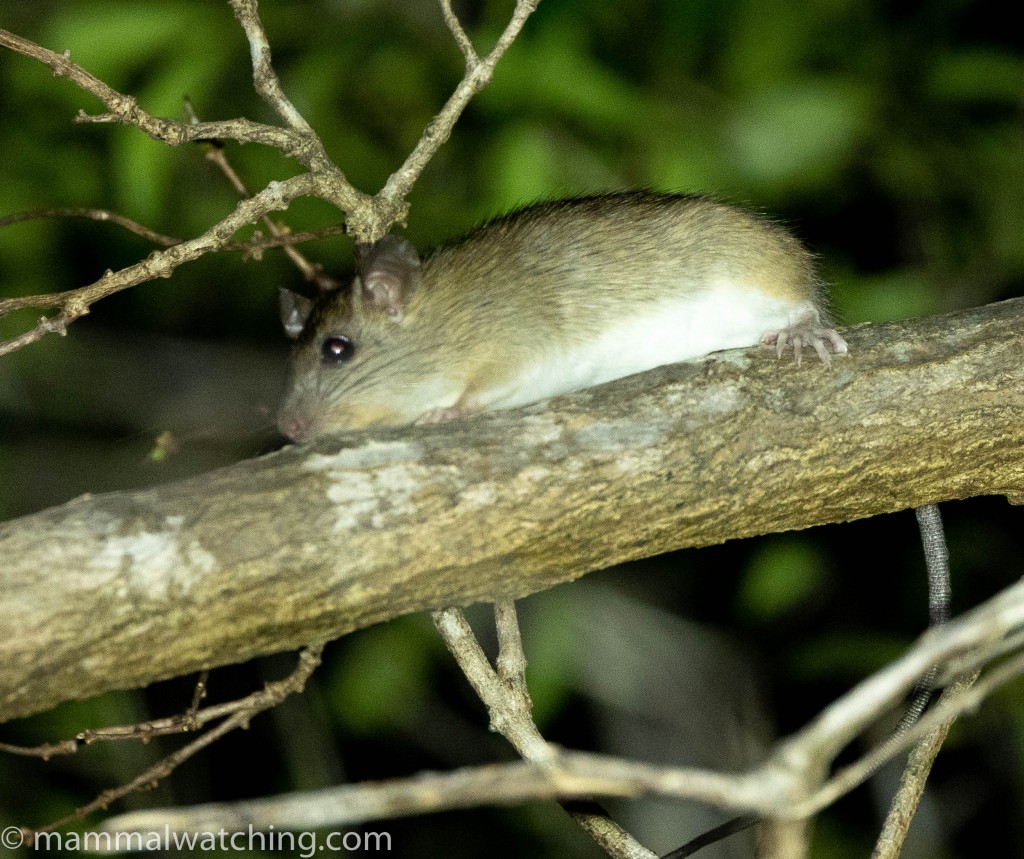
House Rat (Rattus rattus)
But after dinner the 15 minutes walk from the lodge to our ‘hotel’ did produce a pretty little Tavaratra (or Northern) Mouse Lemur.
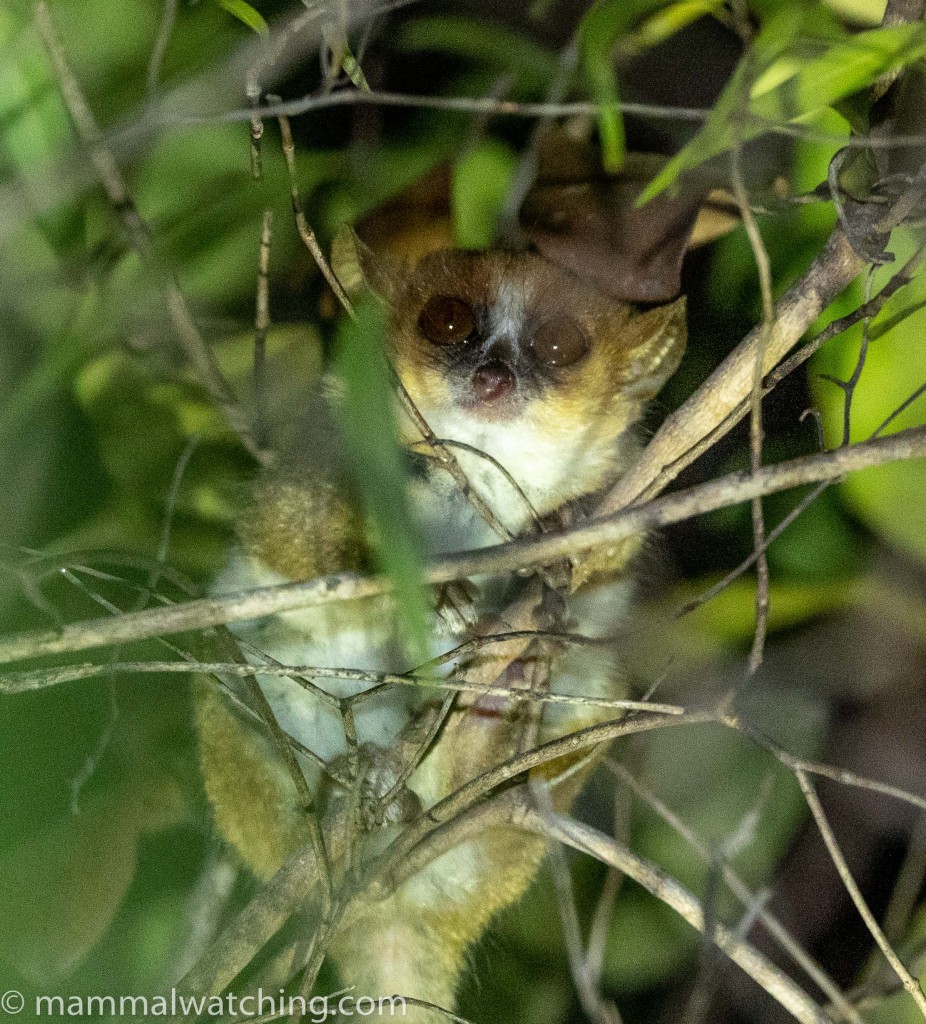
Tavaratra Mouse Lemur (Microcebus tavaratra)
The next morning our local guides Fernando and Misianjara quickly found us an Ankarana Sportive Lemur.
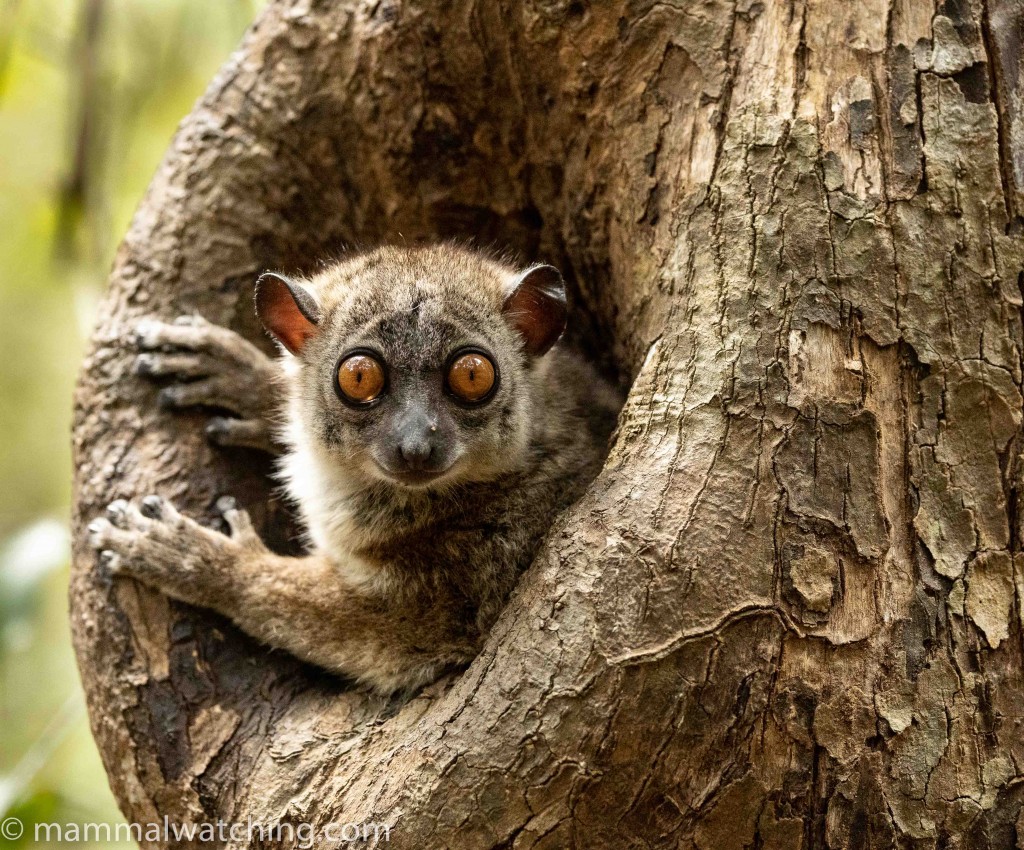
Ankarana Sportive Lemur (Lepilemur ankaranensis)
But the Perrier’s Sifakas are the main event here. This critically endangered lemur has a tiny distribution and a very low population density. The guides will know where the animals are each morning and they led us to an habituated family. We spent an hour with them.
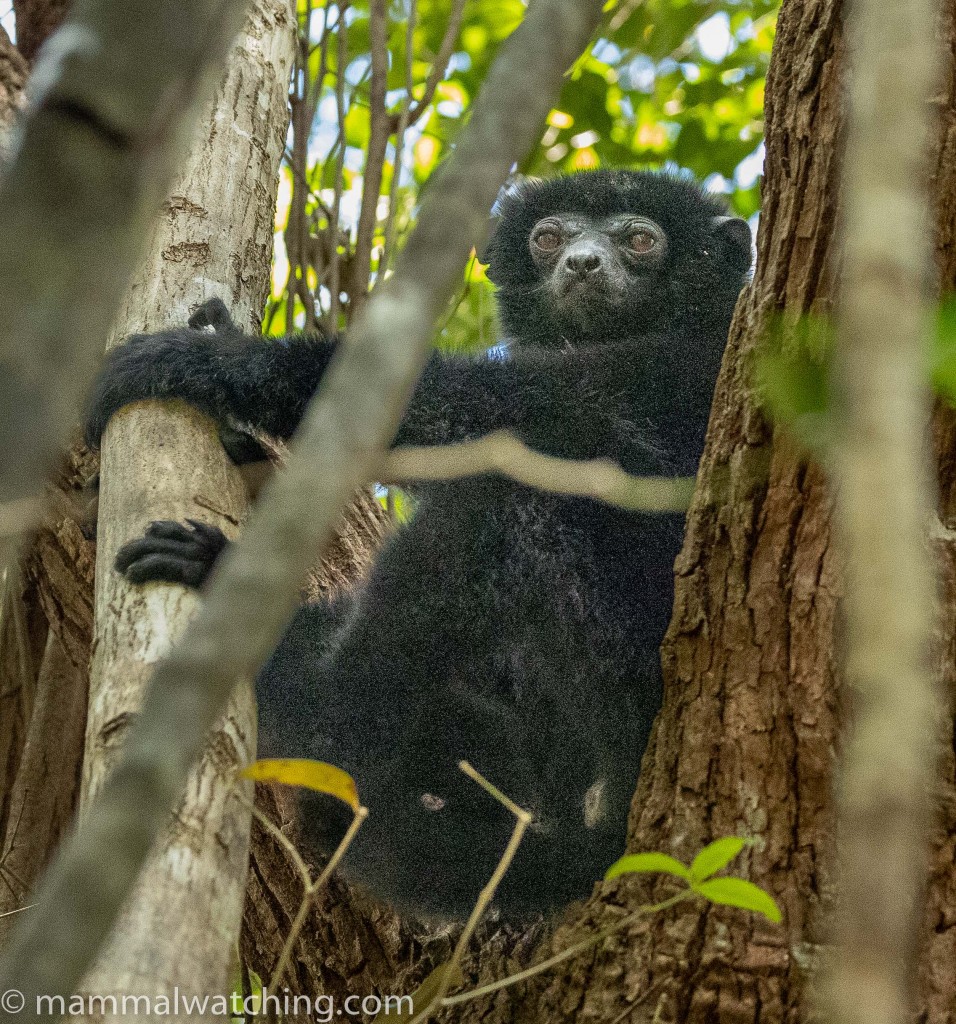
Perrier’s Sifaka (Propithecus perrieri)
After lunch we visited a bat cave just outside the village. There was more to explore than we were expecting and we spent a couple of hours squeezing through some very tight passageways. If I’d eaten as much as a KitKat inside I would still be in there.
We found at least two species of bentwing bats roosting inside. Both had forearms around 37mm but the tragus of each – the flap of skin that projects over the inner ear and is important to echolocation – differed in shape. A big thanks to Steve Goodman, a biologist with 30 years experience of Madagascar, for his help with the IDs of these and other bats we saw.
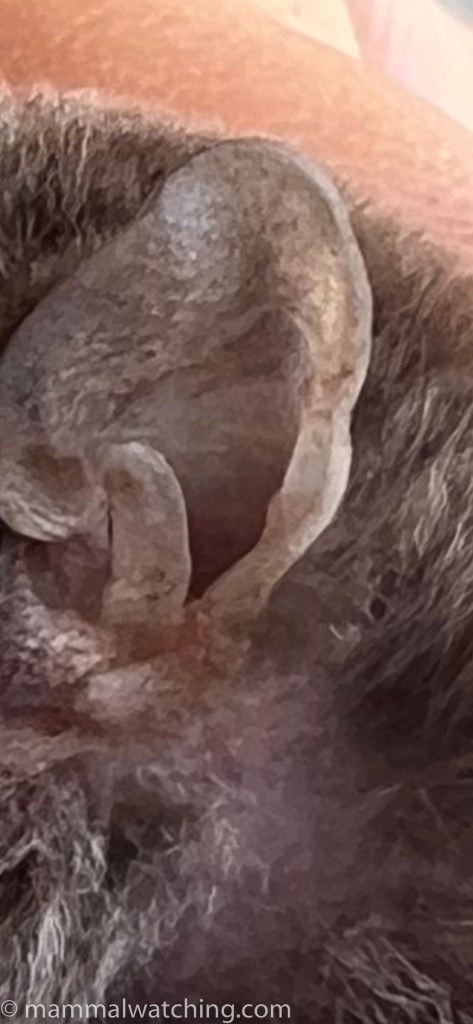
A miniopterus tragus
This is Griveaud’s Long-fingered Bat, with a relatively short, blunt tragus.
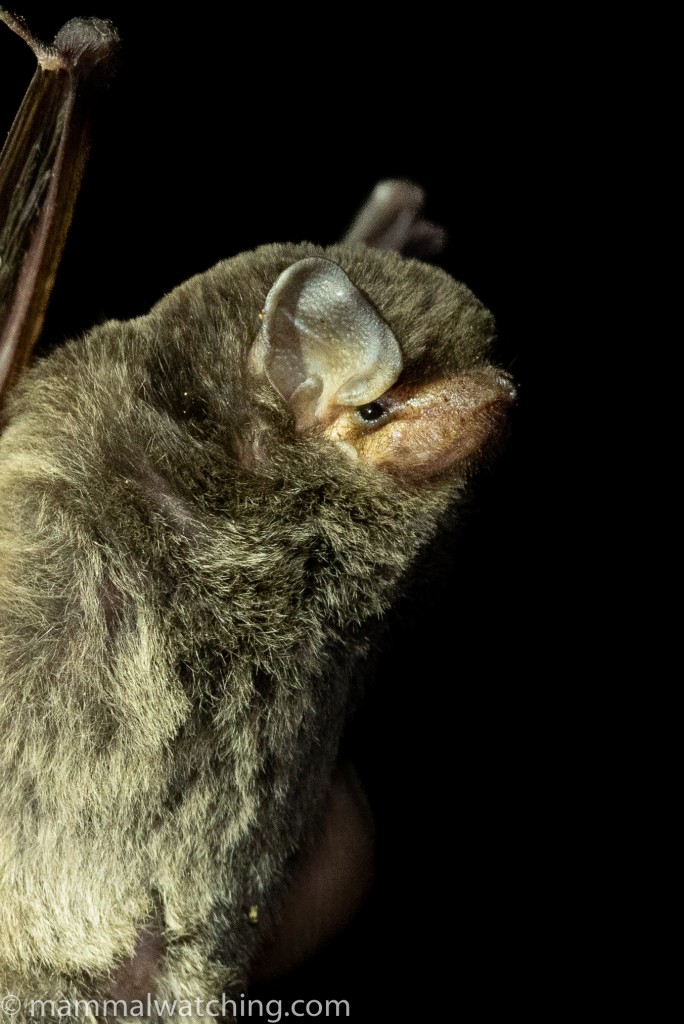
Griveaud’s Long-fingered Bat (Miniopterus griveaudi)
And this is Aellen’s Long-fingered Bat, with a longer, finer tragus.
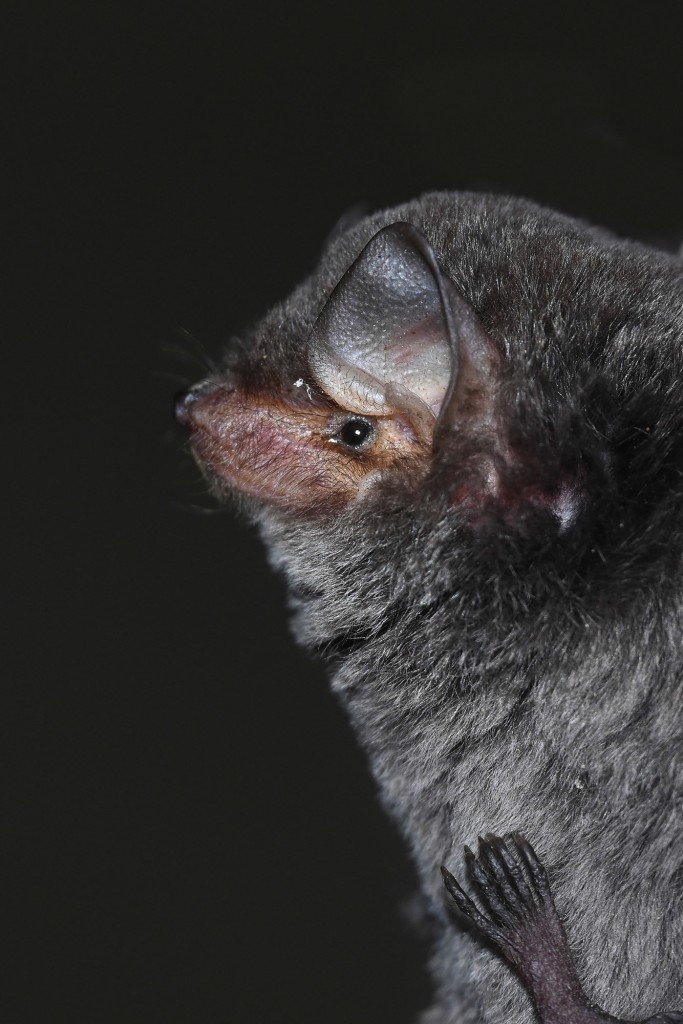
Aellen’s Long-fingered Bat (Miniopterus aelleni). Photo Jean-Michel Bompar.
And this bentwing bat might be different again: it looks quite like a Madagascan Long-fingered Bat but we cannot know for sure.
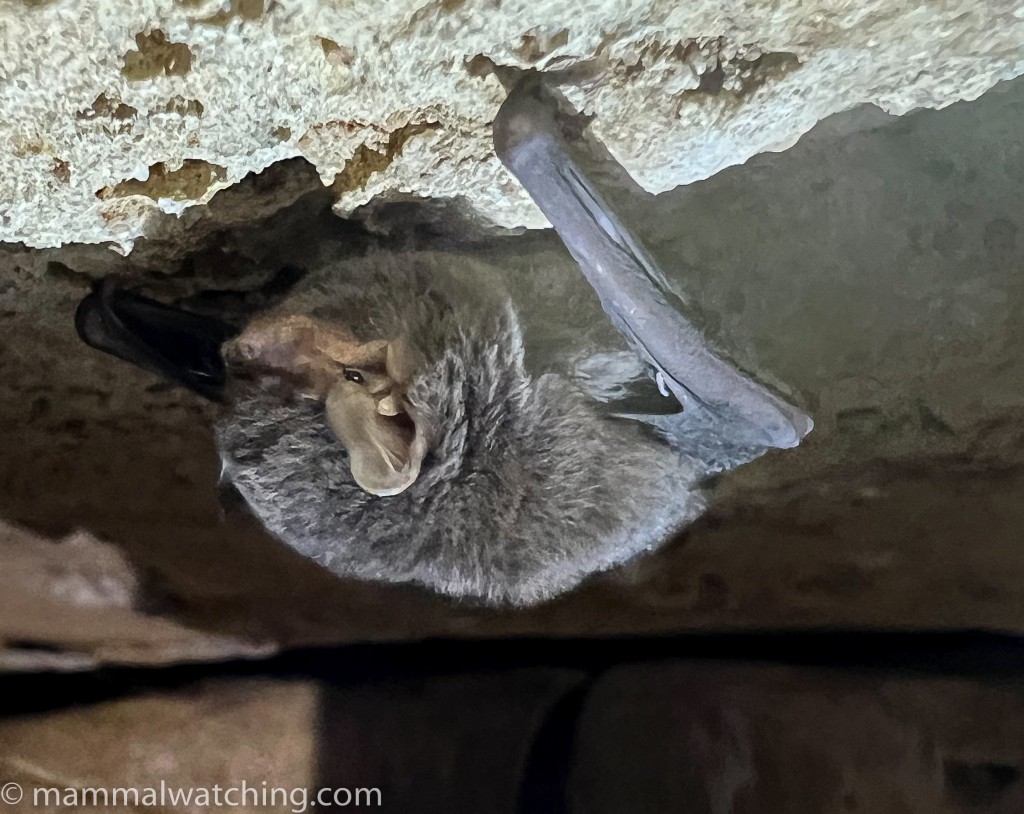
Possibly a Madagascan Long-fingered Bat (Miniopterus brachytragos)
I was delighted to see these colourful Malagasy Mouse-eared Bats.
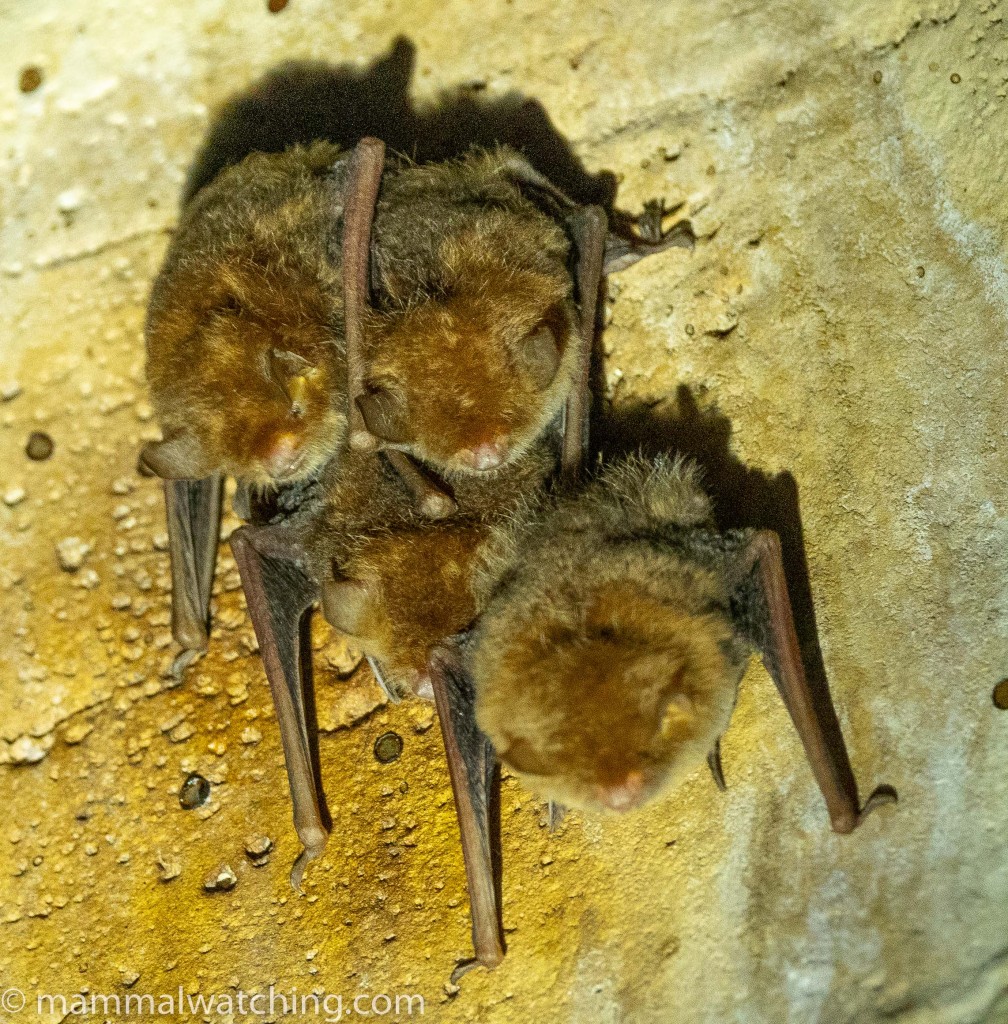
Malagasy Mouse-eared Bats (Myotis goudotii)
A distinctively marked species that is unmistakeable.
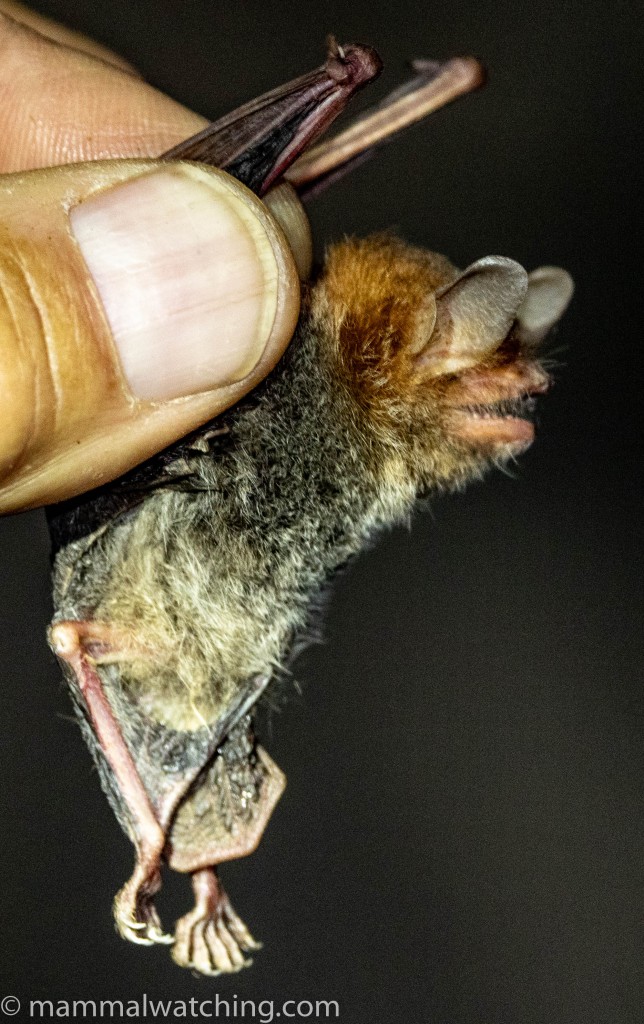
Malagasy Mouse-eared Bats (Myotis goudotii)
We were on the road a little after 4pm and reached Ankarana Special Reserve at sunset.
Ankarana Special Reserve
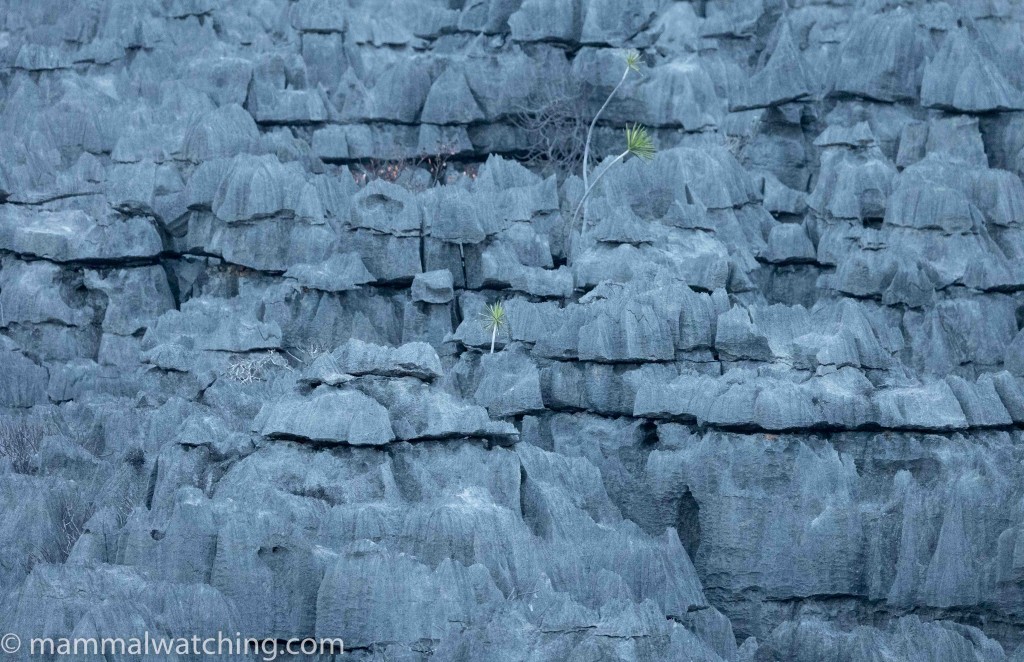
Key Targets: Ankarana Dwarf Lemur; bat caves.
Ankarana Special Reserve is only a couple of hours drive from Andrafiamena. We were relieved that we were – as planned – staying in the very comfortable Relais d’Ankarana Lodge.
We spent a morning exploring well-known and enormous bat caves near the park entrance.
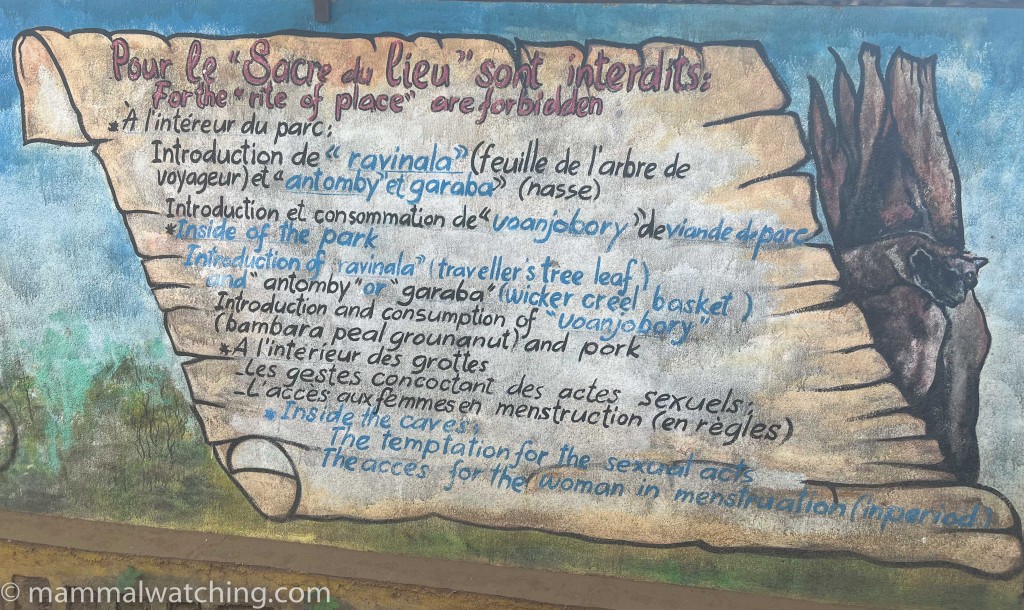
Many species have been recorded in the caves and we found only four of them. Two very large caves lead from an opening on a hillside.
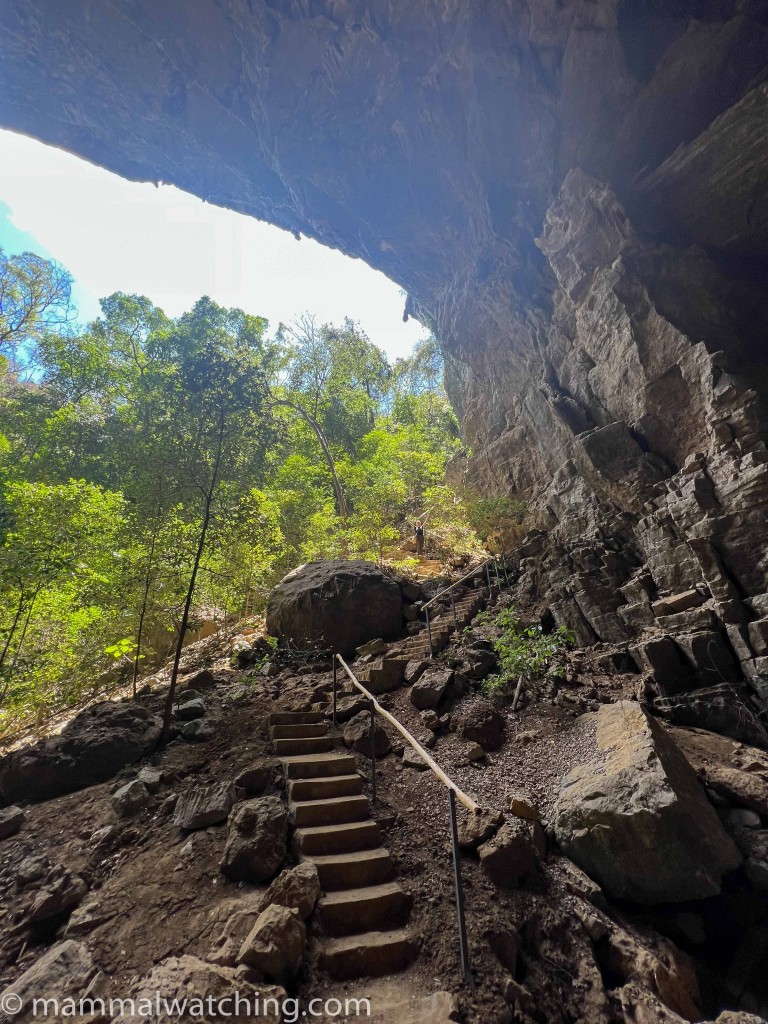
The lower system was home to hundreds of Madagascan Straw-coloured Fruit Bats roosting near the entrance.
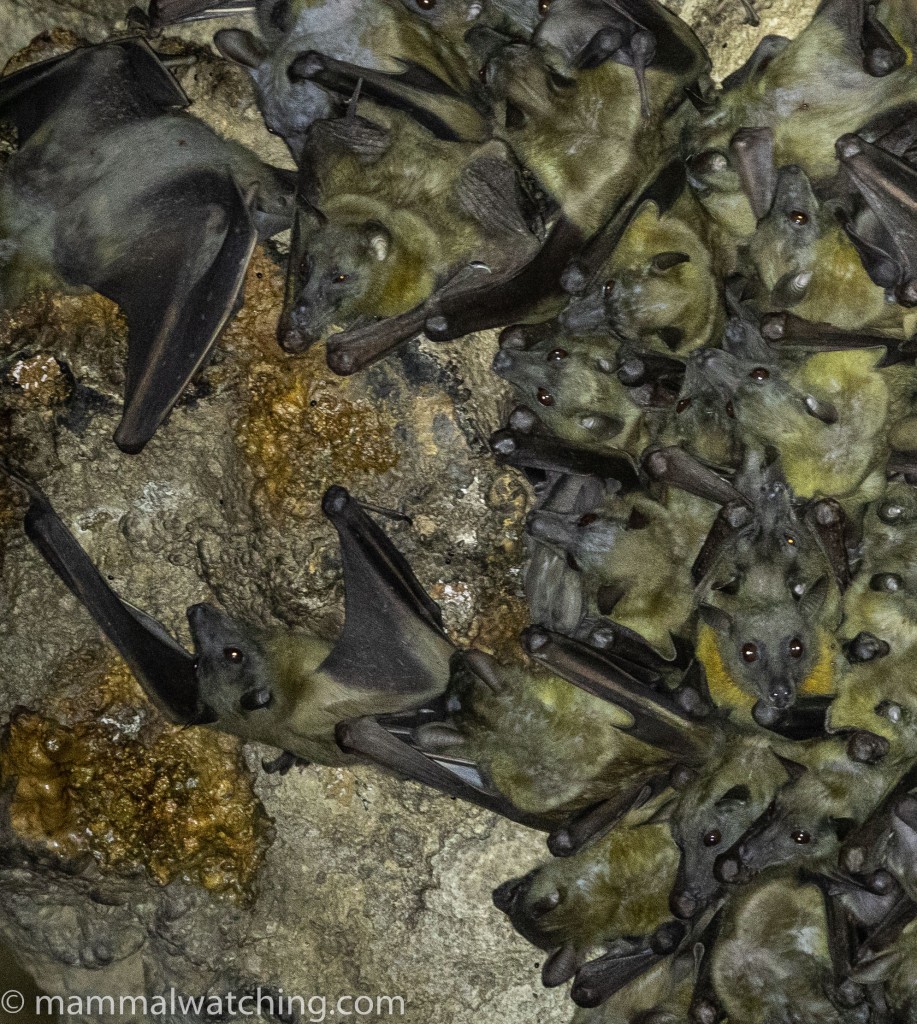
Madagascan Fruit Bat (Eidolon dupreanum)
Thousands of Madagascan Rousettes were deeper inside the chamber.
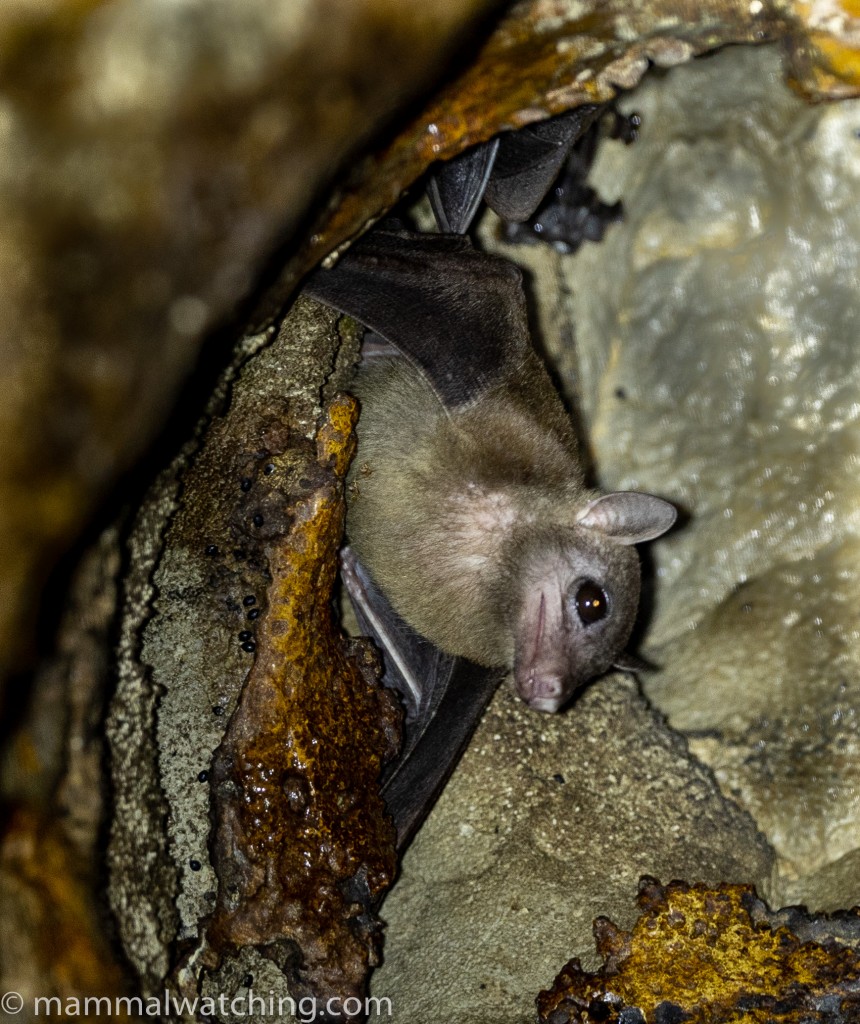
Madagascan Rousette (Rousettus madagascariensis)
The upper system of caves is more complex and we spent an hour or two wandering through the labyrinth. I had hoped we might find sheathtail and trident vats in here but there were we only saw bentwing bats.
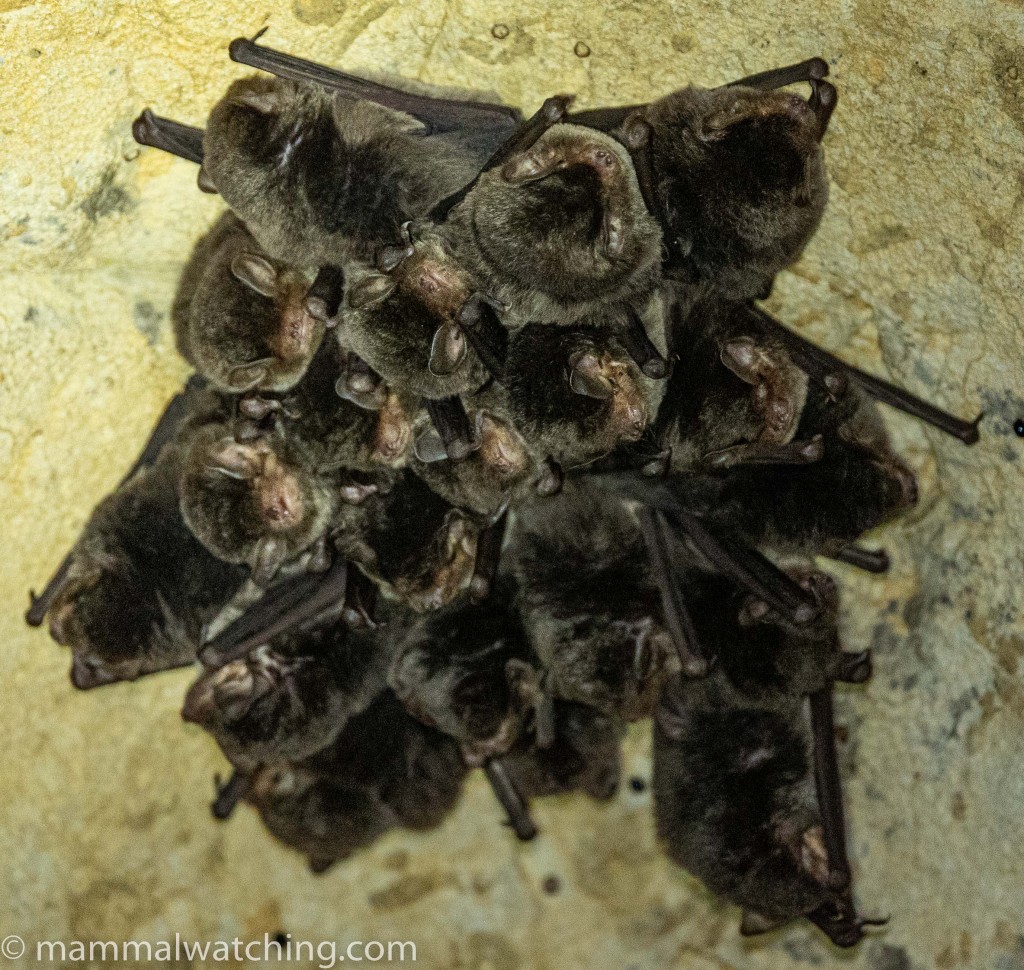
Bentwing bat roost. Possibly Aellen’s Bentwings.
The smaller bentwings we measured all appeared to be Aellen’s Long-fingered Bat, but this much larger bat – with a forearm of 49mm – is Glenn’s Bentwing.
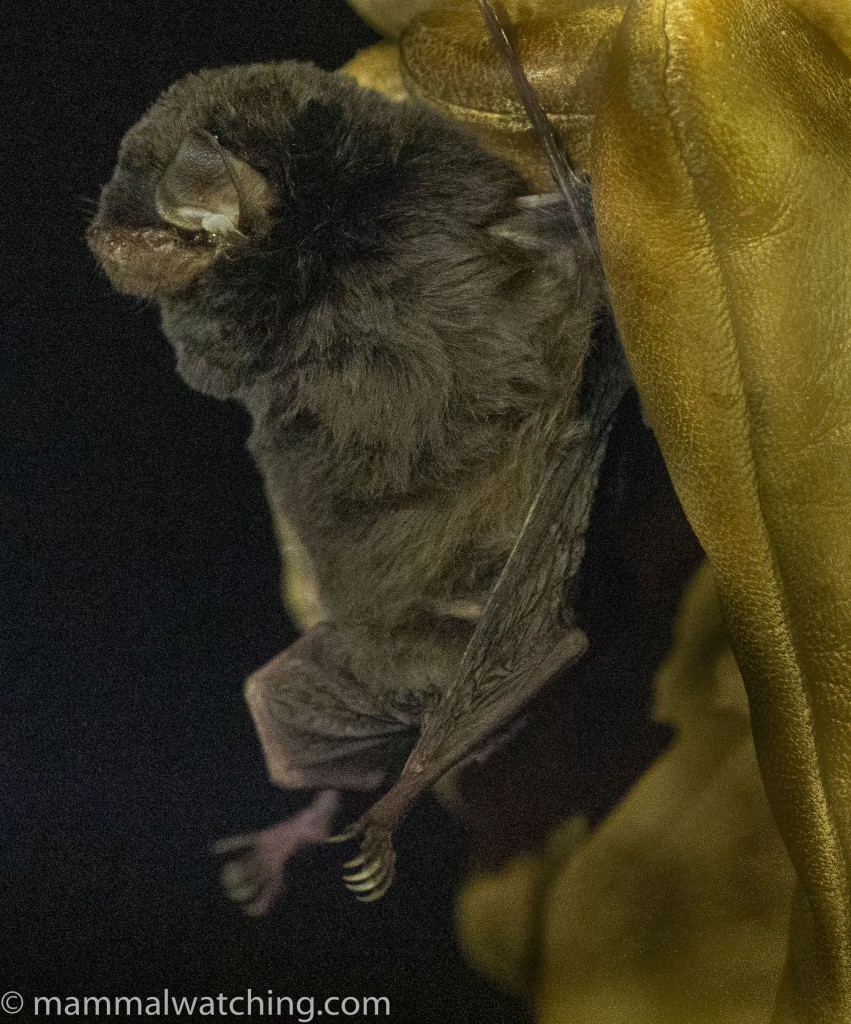
Glen’s Long-fingered Bat (Miniopterus gleni)
There were some decent stalactites and stalagmites too.
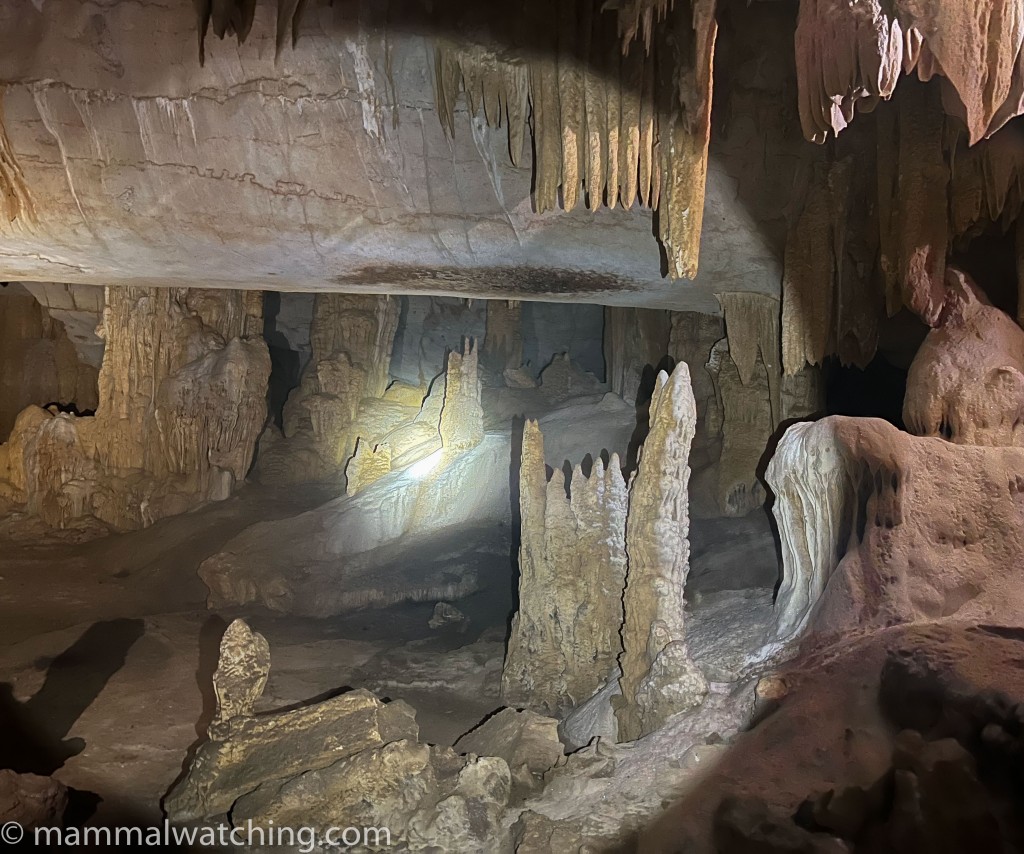
There were several Ankarana Sportive Lemurs in the forest on the way to the caves.
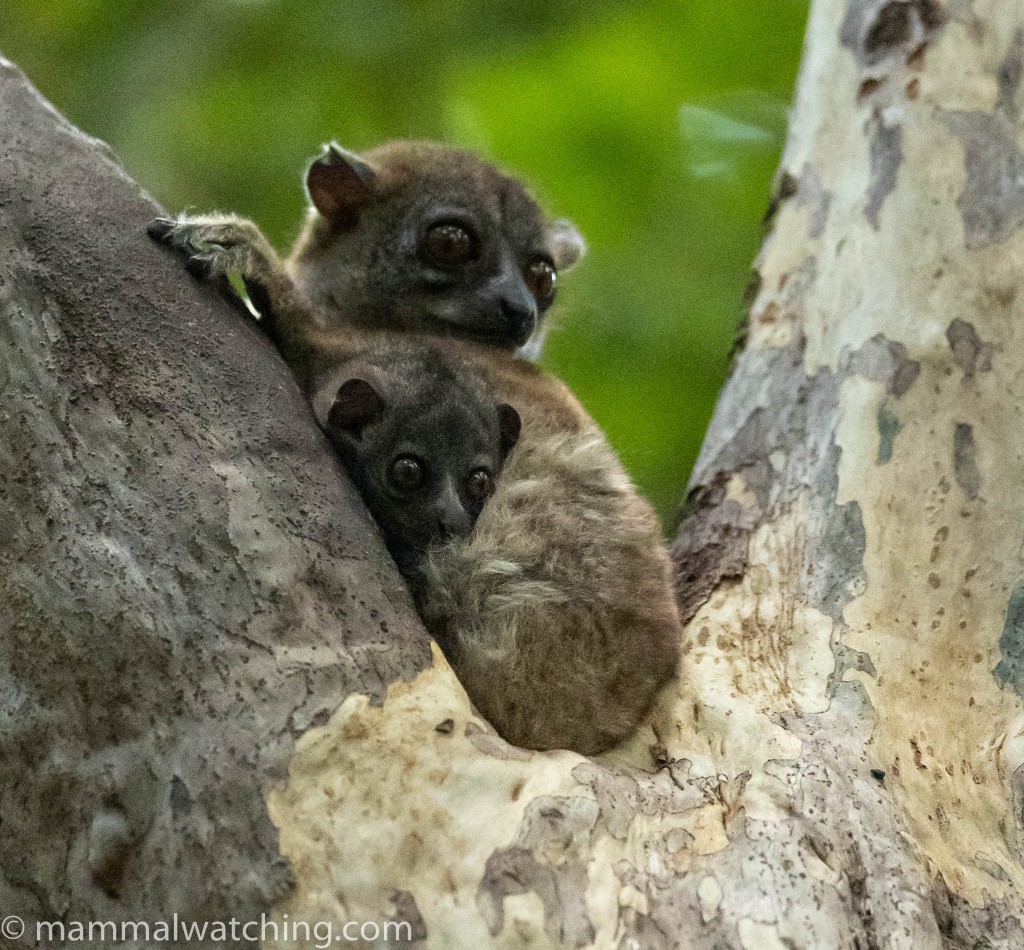
Ankarana Sportive Lemur (Lepilemur ankaranensis)
And some Crowned Lemurs by the cave entrance and in the campsite.
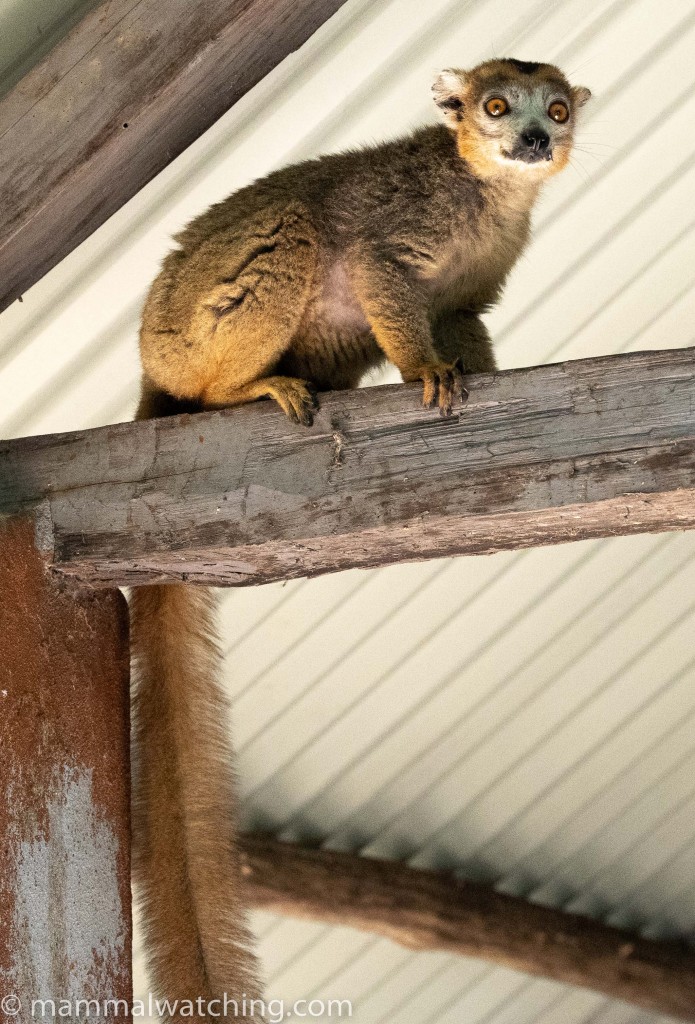
Crowned Lemur (Eulermur coronatus)
After a long lunch, followed by a brief rest, we returned to the park for a late afternoon into dusk walk.
I wanted to look for the recently described Ankarana Dwarf Lemur. Our guides – Oscar and Florin – knew the species but seemed not to have seen it often. Probably because they are not usually out after dark and had not been out very much at all during COVID. But as we walked to the tsingy lookout they did point to a tree in which they had once seen – with researchers – the dwarf lemur several years earlier.
We walked to the Tsingy lookout. And it was well worth looking out at. Incredible scenery.
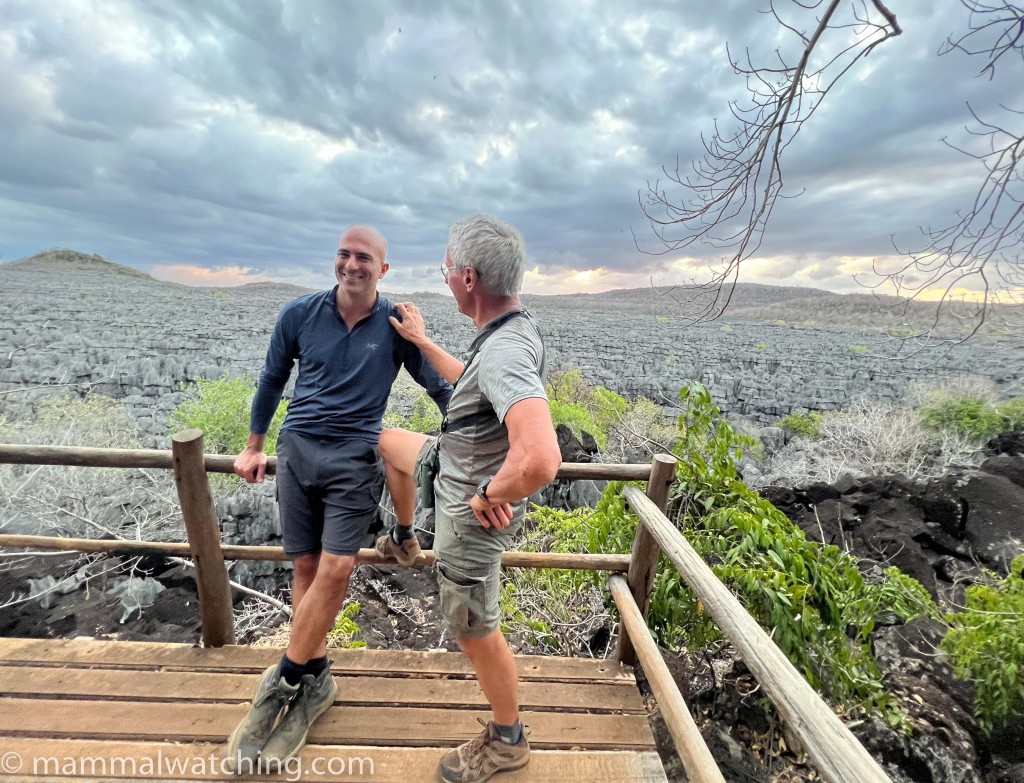
Jean-Michel and Luqman rekindle their bromance
At sunset we walked the three kms back to the edge of the park. The trees were alive with Ankarana Sportive Lemurs and Tavaratra Mouse Lemurs. But no Ankarana Dwarf Lemurs.
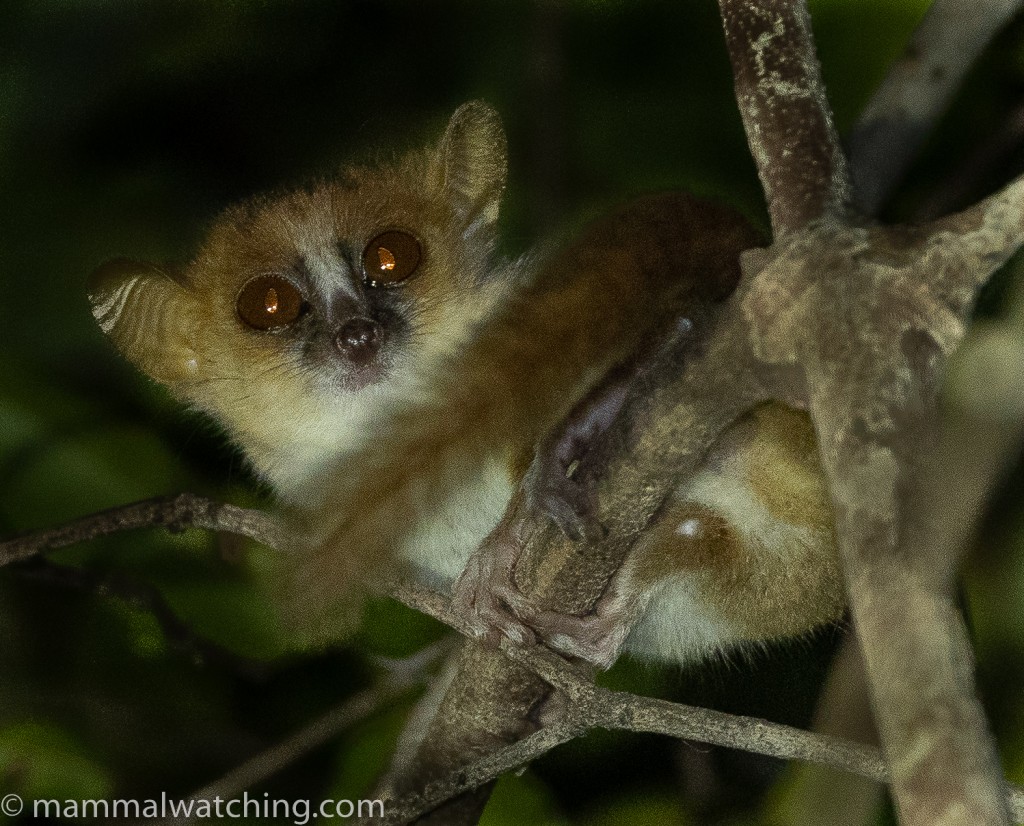
Tavaratra Mouse Lemur (Microcebus tavaratra)
And – no more than 20 metres from the tree the guides had pointed to on the way in – the tree in which they had seen their Ankarana Dwarf Lemur, we saw one.
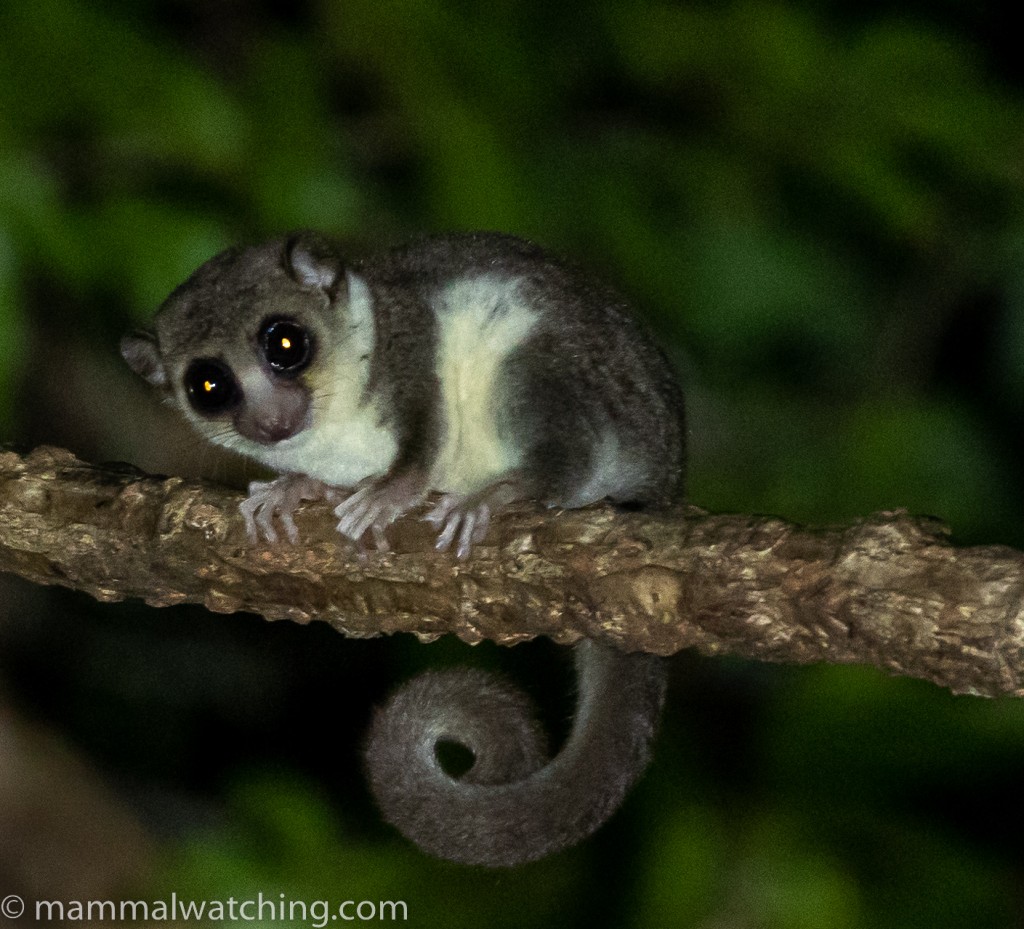
Ankarana Dwarf Lemur (Cheirogaleus shethi)
We had a prolonged and perfect view of this very calm animal. This particular bit of forest looked no different to any of the other bits so the proximity of the two sightings may be just a coincidence, albeit a strange coincidence (though I guess all coincidences are strange). At the very least it shows the importance of detailed trip reports! Having said that I did not get a precise GPS location for this sighting! Sorry. But it was close to here.
For the third site in a row we had found all our key targets. This was getting to be a bit too easy.
Daraina Reserve
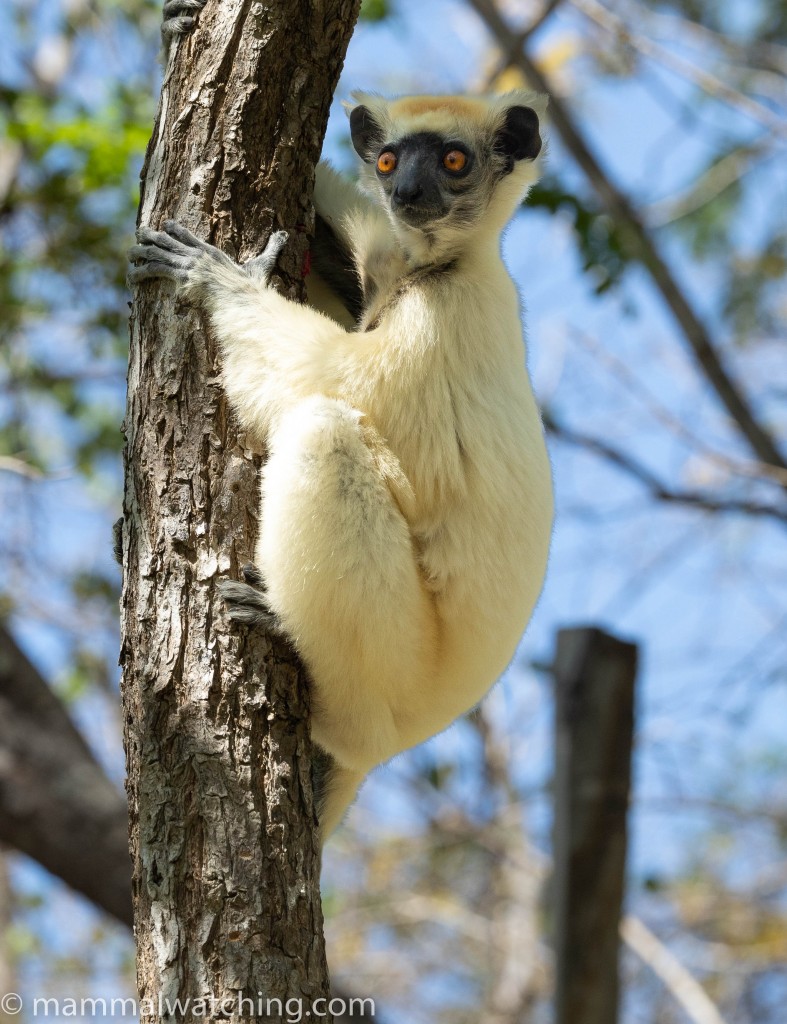
Golden-crowned Sifaka (Propithecus tattersalli)
Key Targets: Golden-crowned Sifaka; Daraina Sportive Lemur; Daraina Fork-marked Lemur; Aye-aye,
Daraina Reserve, also called Loky Manambato – is only a 2 hour drive from Ankarana, along what is now a very good road. I think it was my favourite place of the trip. A small, community run tented-camp – Camp Tattersall came with wonderful staff, good guides and some excellent mammals.
Within 10 minutes of sitting down for lunch we saw our first Golden-crowned (Tattersall’s) Sifakas. Beautiful animals and habituated.
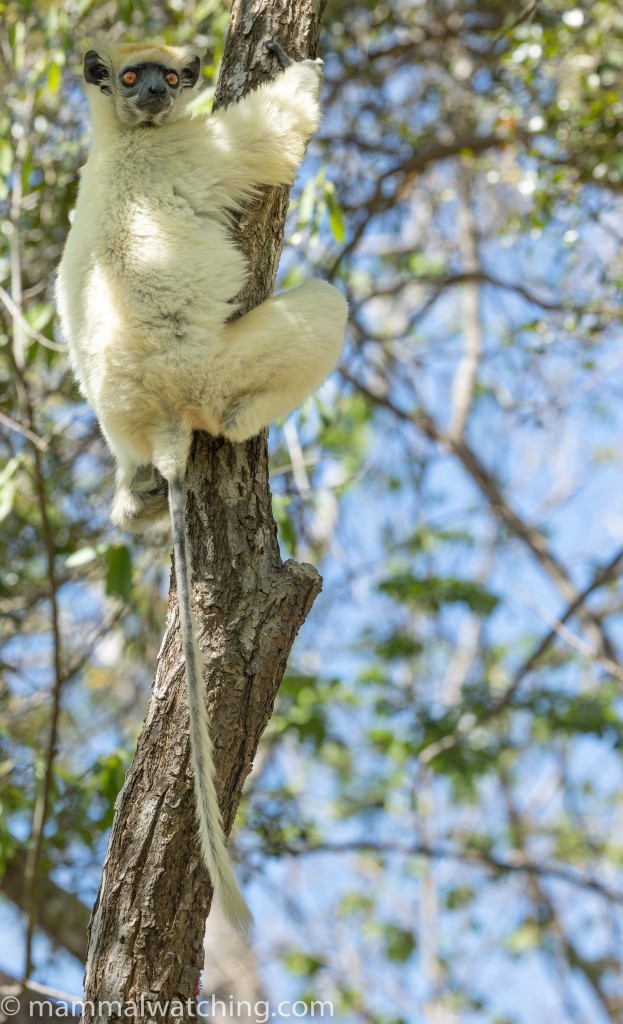
Golden-crowned Sifaka (Propithecus tattersalli)
After lunch the guides took us for a stroll to show us a Daraina Sportive Lemur.
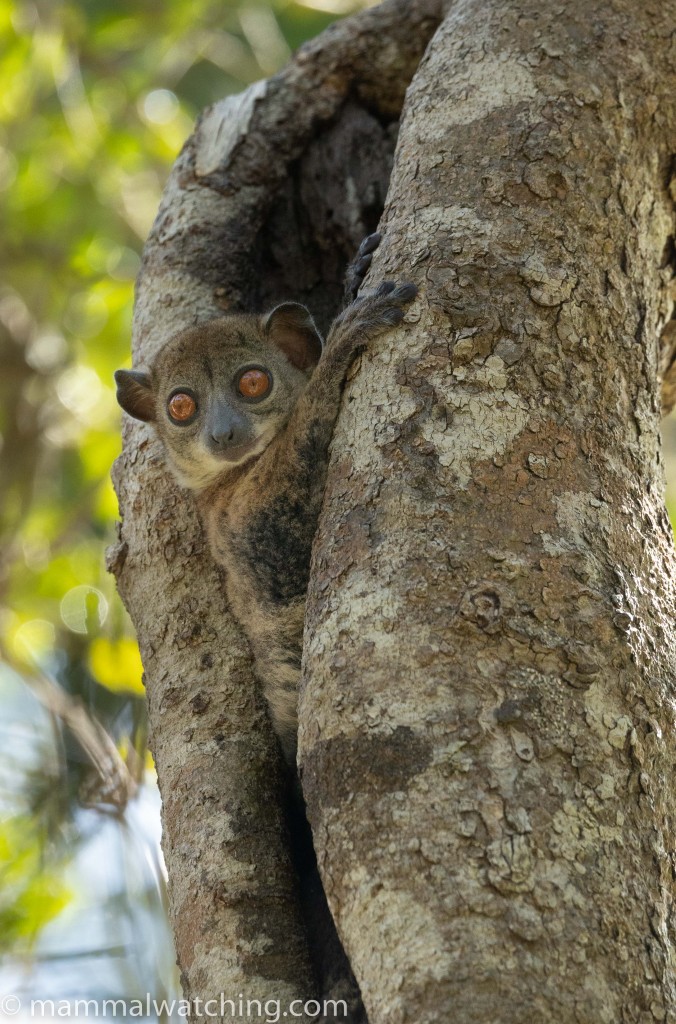
Daraina Sportive Lemur (Lepilemur milanoii)
We saw more Crowned Lemurs too.
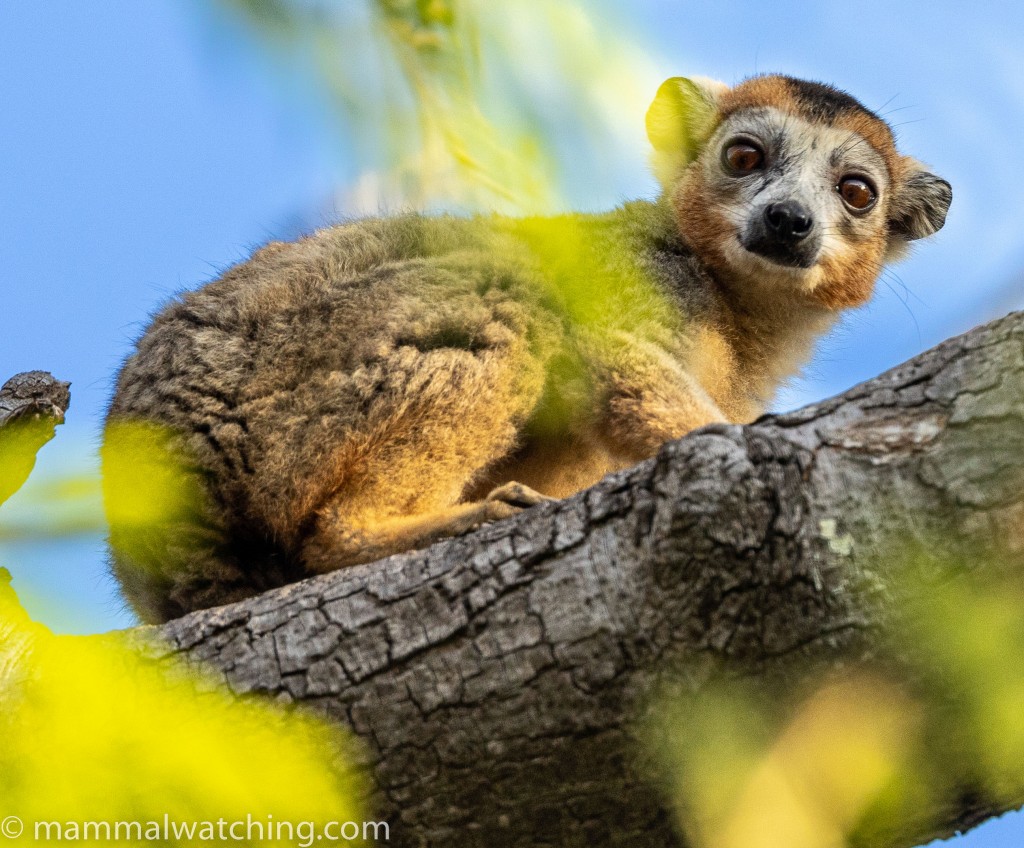
Crowned Lemur (Eulemur coronatus)
But the best was still to come. Daraina is now one of the very best places to see an Aye-aye and we had phoned ahead to order one.
Our guides – Antonio and Zia – had spent the morning checking out areas that Aye-Ayes frequented until they found an active nest. All we needed to do, they said, was get to the nest at sunset, wait and hope for the best.
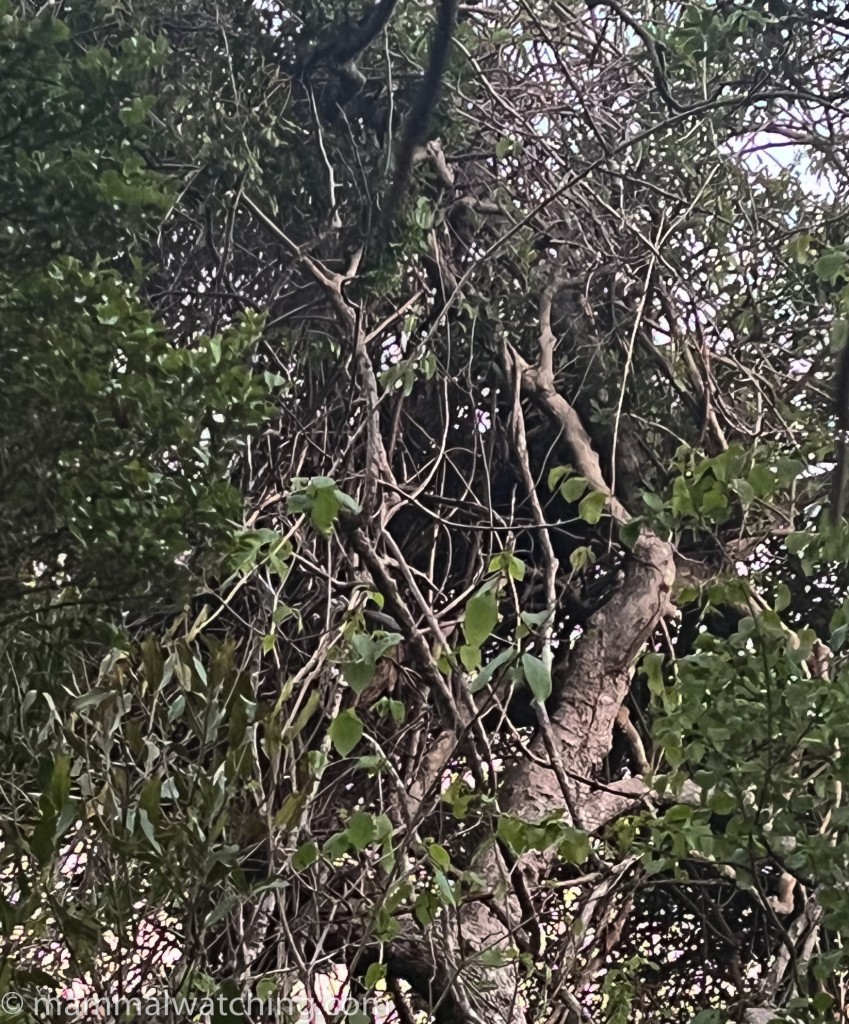
An Aye-aye nest
The stress of waiting, without knowing whether the Aye-aye was home, would probably have killed me. I we my survival to my thermal scope, which showed an optimistic amount of heat within the nest. Even so we were all on edge but we did not have to wait for long.
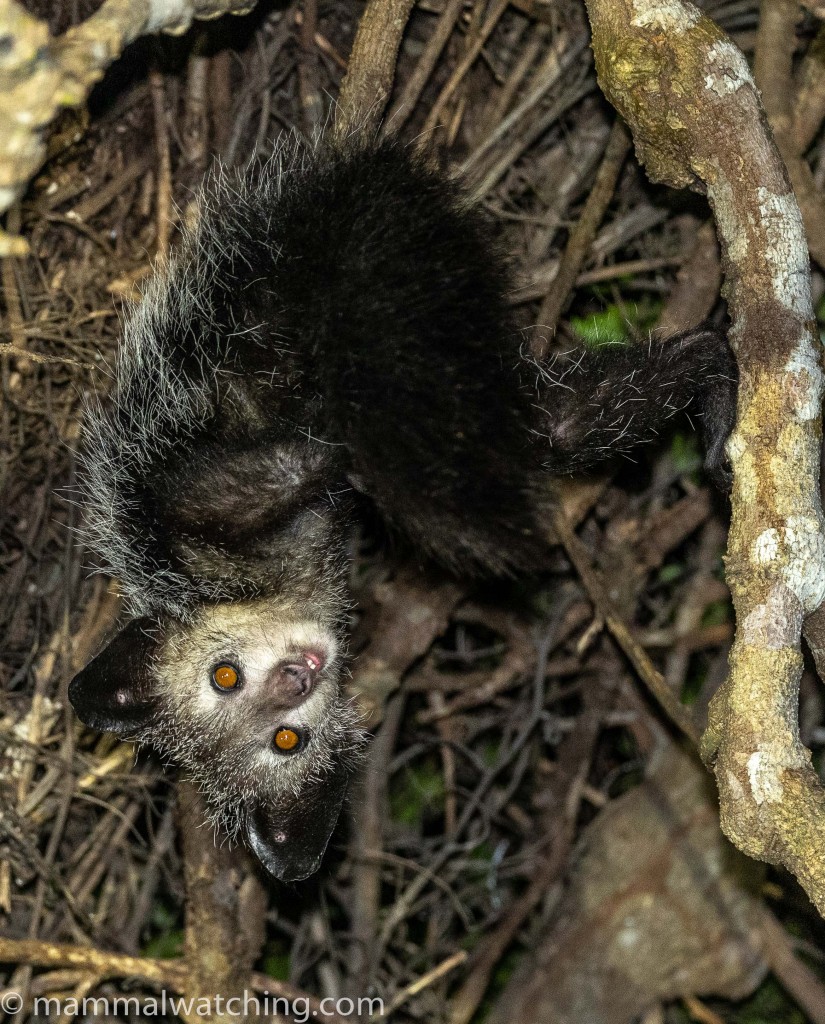
Aye-aye (Daubentonia madagascariensis)
The next hour will be etched in my memory forever and is now my official all time favourite mammalwatching experience. Move over Narwhals, Chimpanzees and Snow Leopards.
Thinking about it, that must means it was my favourite experience ever.
The animal itself is of course spectacular: Dobby the House Elf in drag.
But their behaviour is also fascinating to watch. When Aye-ayes emerge from their nest they do nothing until they have meticulously and slowly groomed every inch of themselves. Spellbound, we watched our guy for over an hour, as he scratched and combed every fur follicle, all the while looking down at us and apparently oblivious to the lights and camera flashes. I swear he seemed to like the attention.
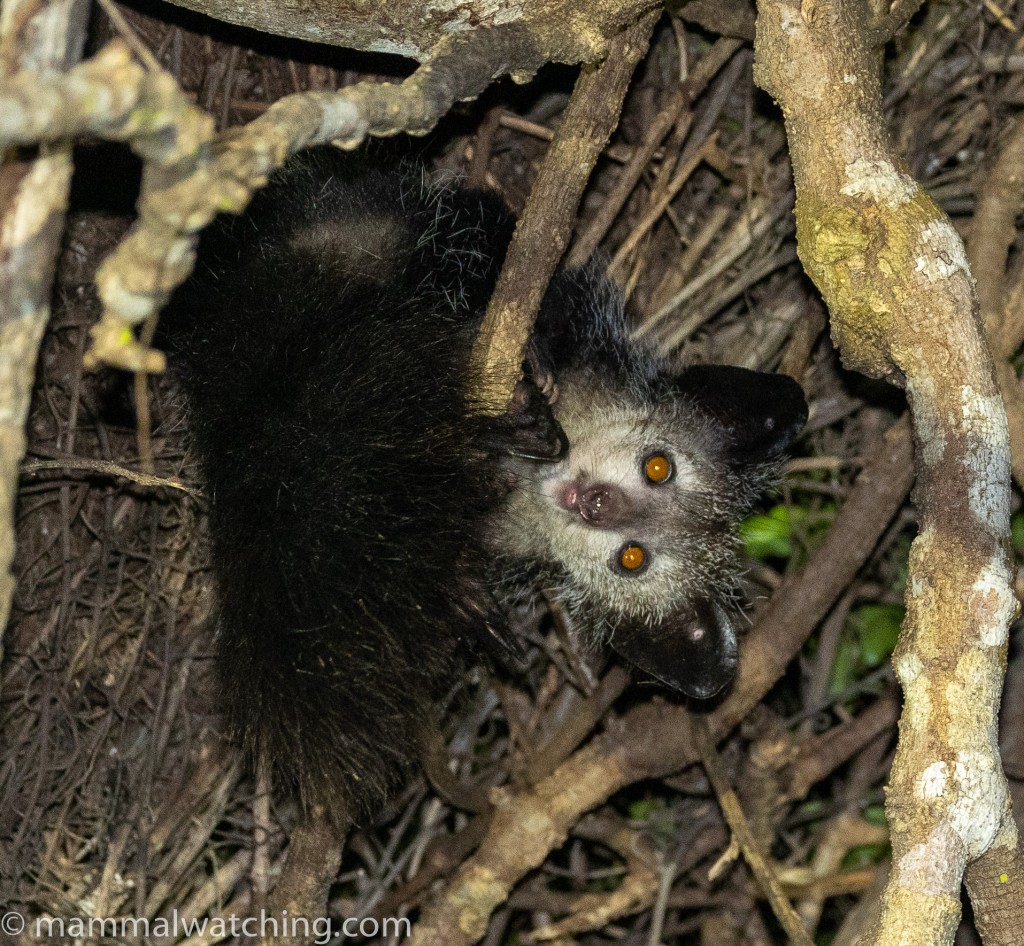
Absolutely magic. And all of this within earshot of an illegal gold mining camp in the forest.
Aye-ayes have the unfortunate honour to be on the 2021 IUCN’s Primates in Peril Top 25 most endangered list. Like so much in Madagascar they are threatened by habitat loss and poaching, but they face the added hardship of prejudice and superstition: many locals see them as a bad omen and kill them on site. Here is some video.
Back at camp we ate and took a shortish spotlight walk through the forest. We found our target easily: the (as yet undescribed) Daraina Fork-marked Lemur. It seems that this is destined for species status but for the moment we recorded it as a Montagne D’Ambre Fork-marked Lemur until the taxonomists finish their work.
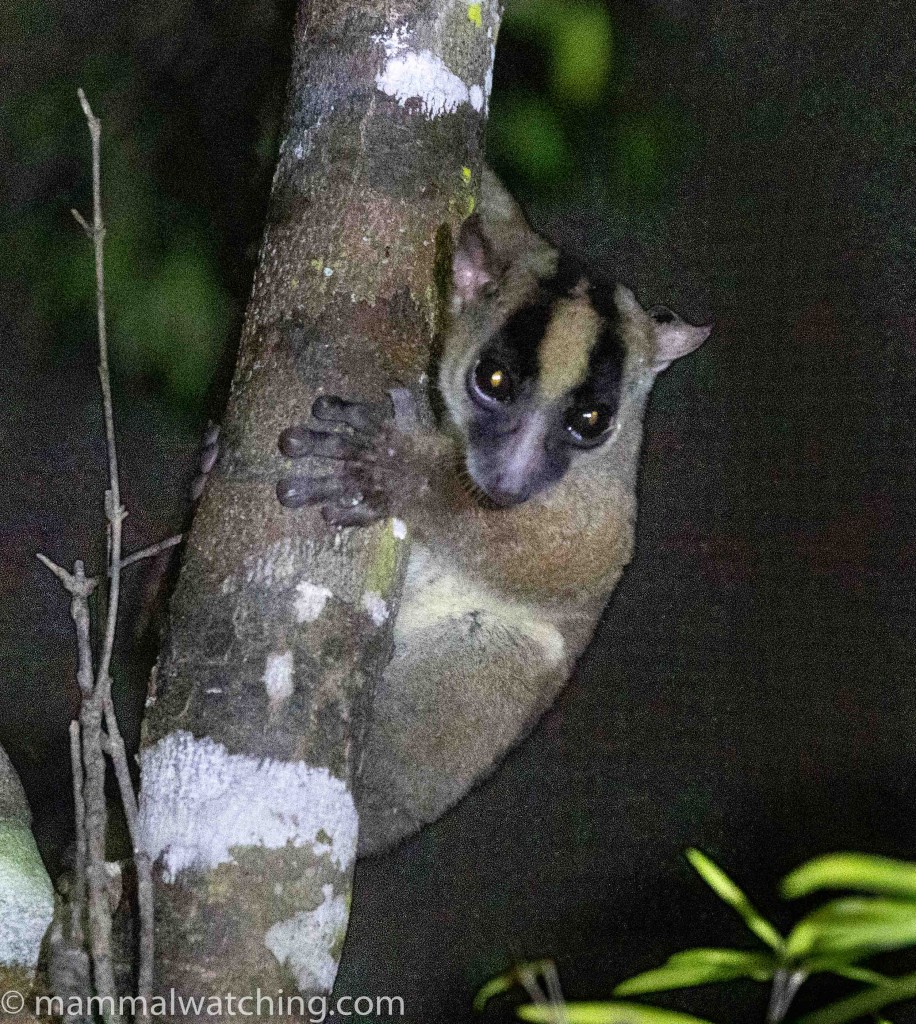
Daraina (Montagne D’ Ambre) Fork-marked Lemur (Phaner cf. electromontis)
We also saw a dwarf lemur, which I think must be another Ankarana Dwarf Lemur.
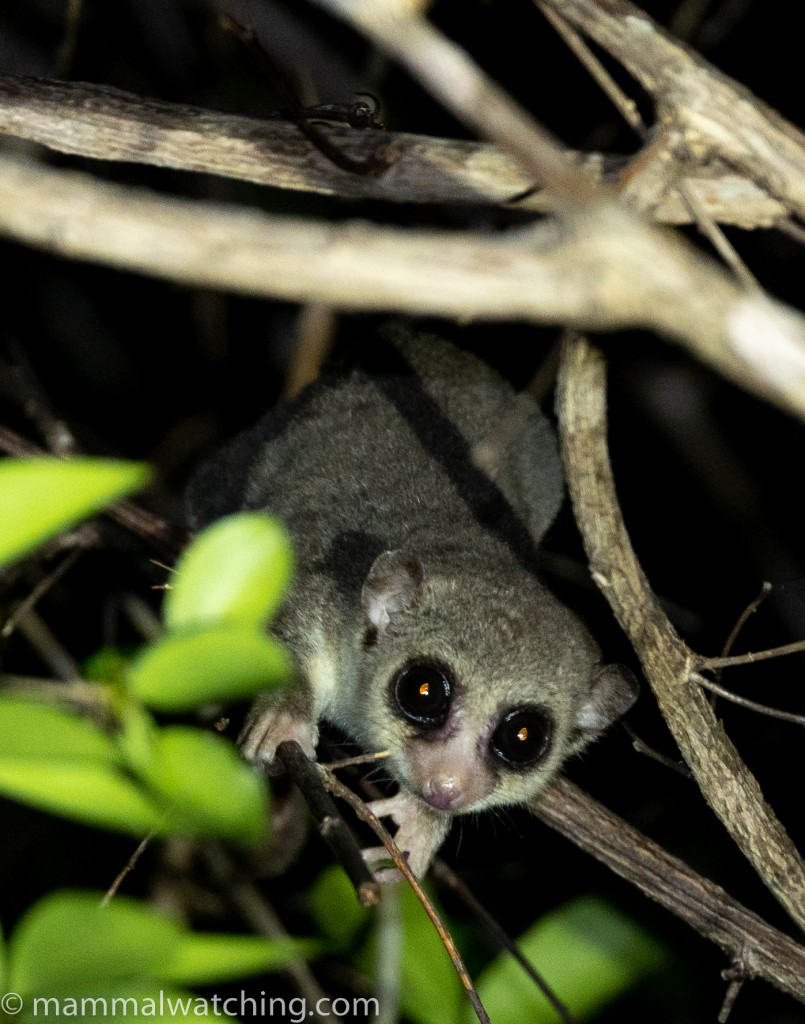
Ankarana Dwarf Lemur (Cheirogaleus shethi)
And another Tavaratra Mouse Lemur.
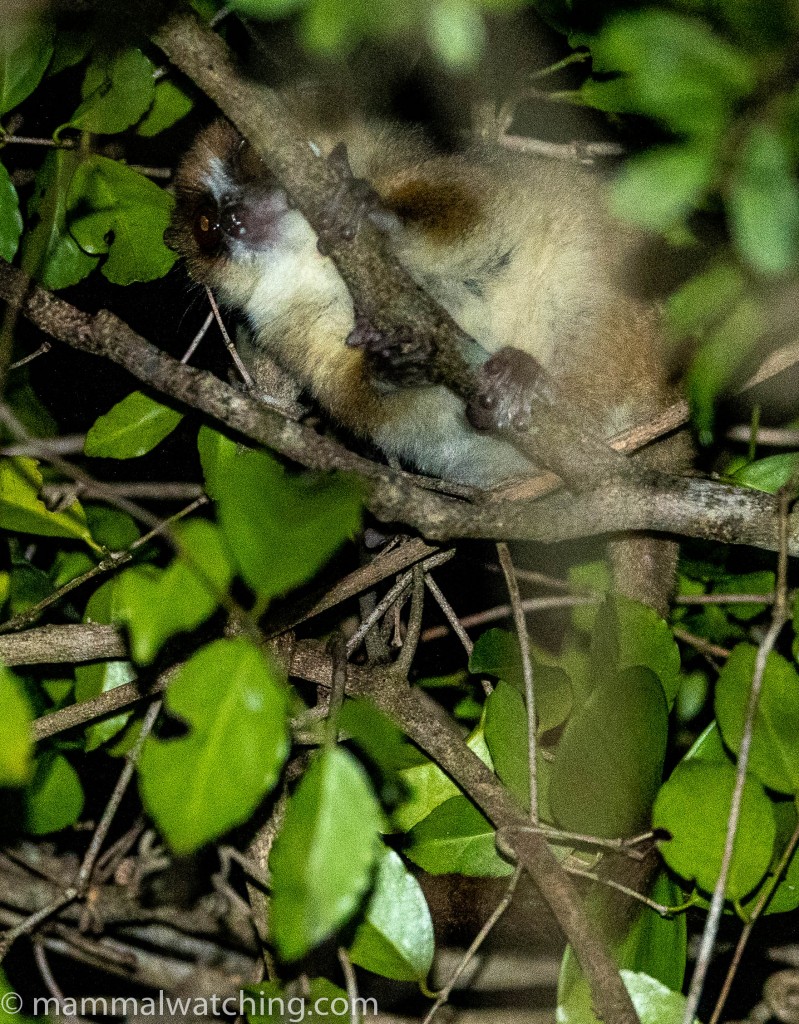
Tavaratra Mouse Lemur (Microcebus tavaratra)
The next morning we set off for a full day’s drive to the town of Ambilobe. But first we stopped at a bridge on the main road very close to the Daraina turn off.
We found a few more Griveaud’s Long-fingered Bats.
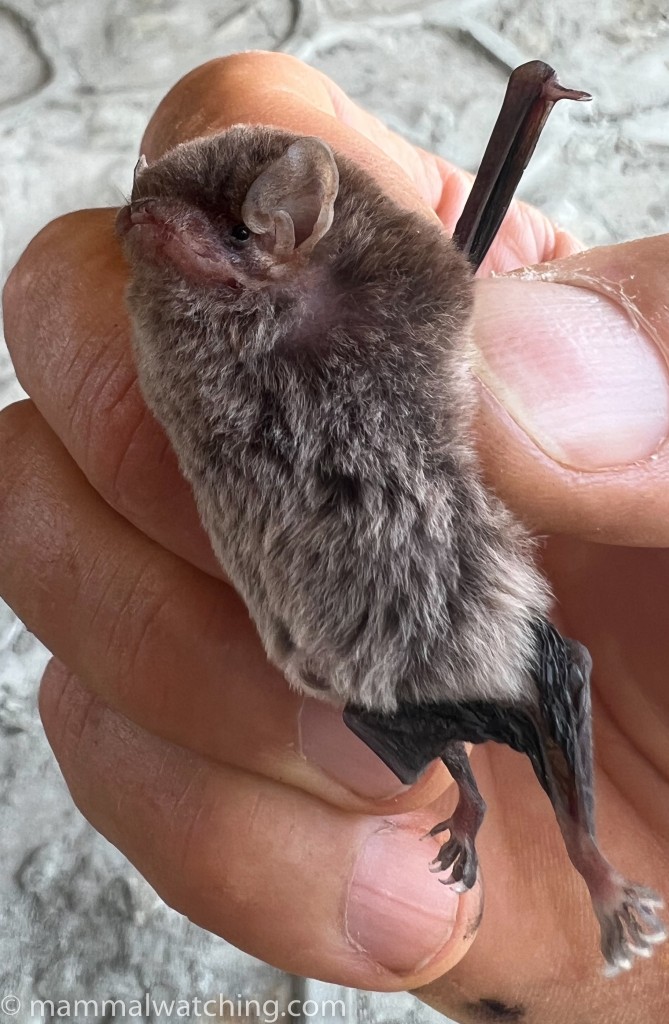
Griveaud’s long-fingered bat (Miniopterus griveaudi)
And our first Western Sheathtailed Bats.
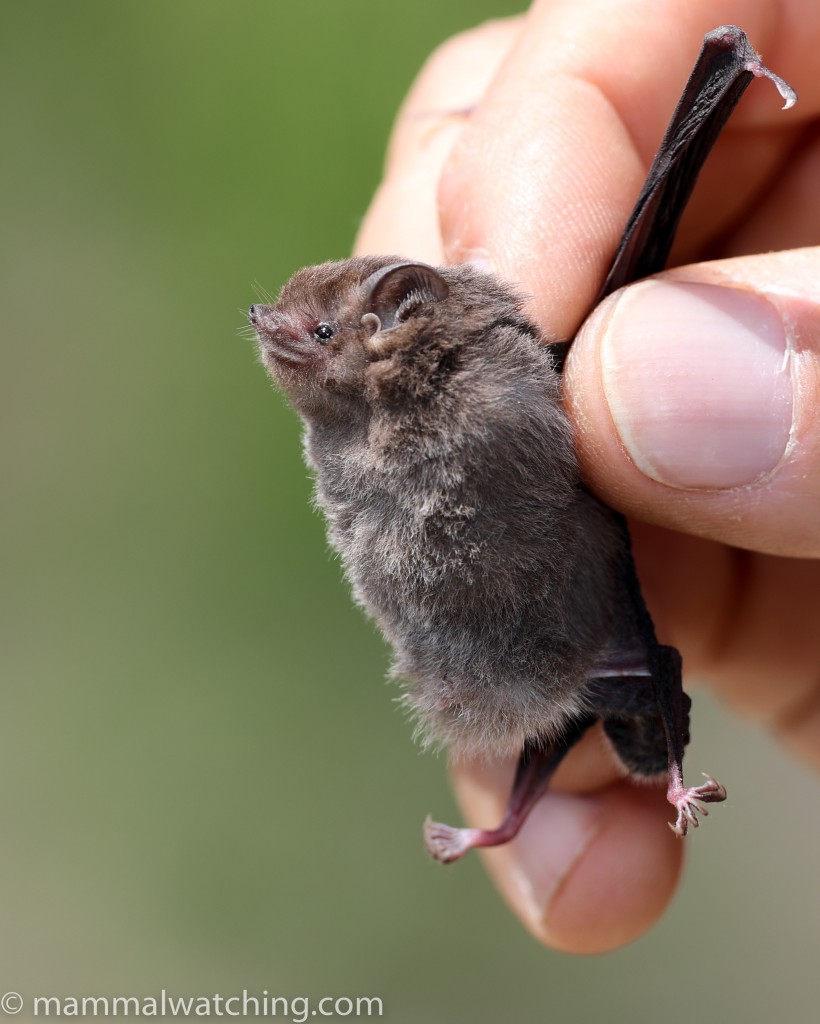
Western Sheath-tailed Bat (Paremballonura tiavato)
There were 20 or so roosting underneath the bridge, tucked up in the spaces above the pillars at either end.
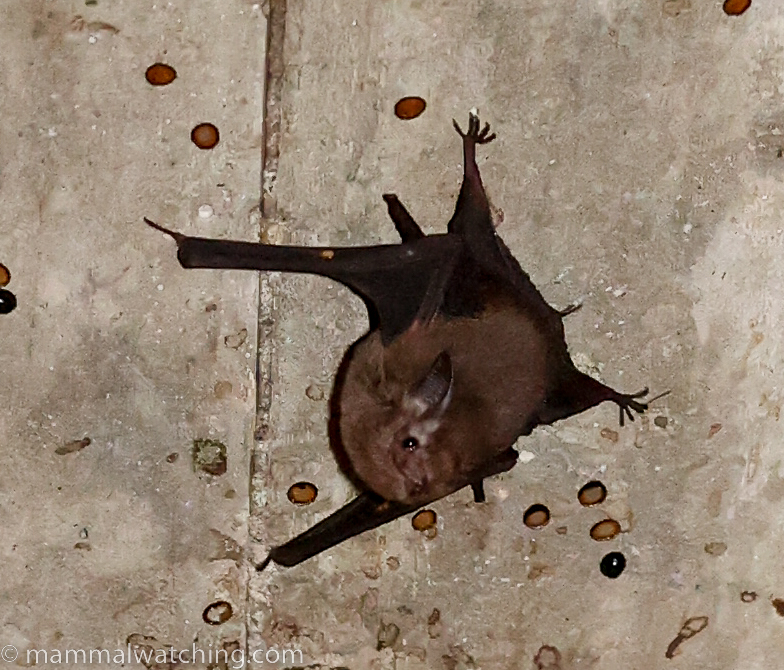
Western Sheath-tailed Bat (Paremballonura tiavato)
We spent most of the day driving to the town Sambava, the jumping off point for Marojejy National Park.
Marojejy National Park
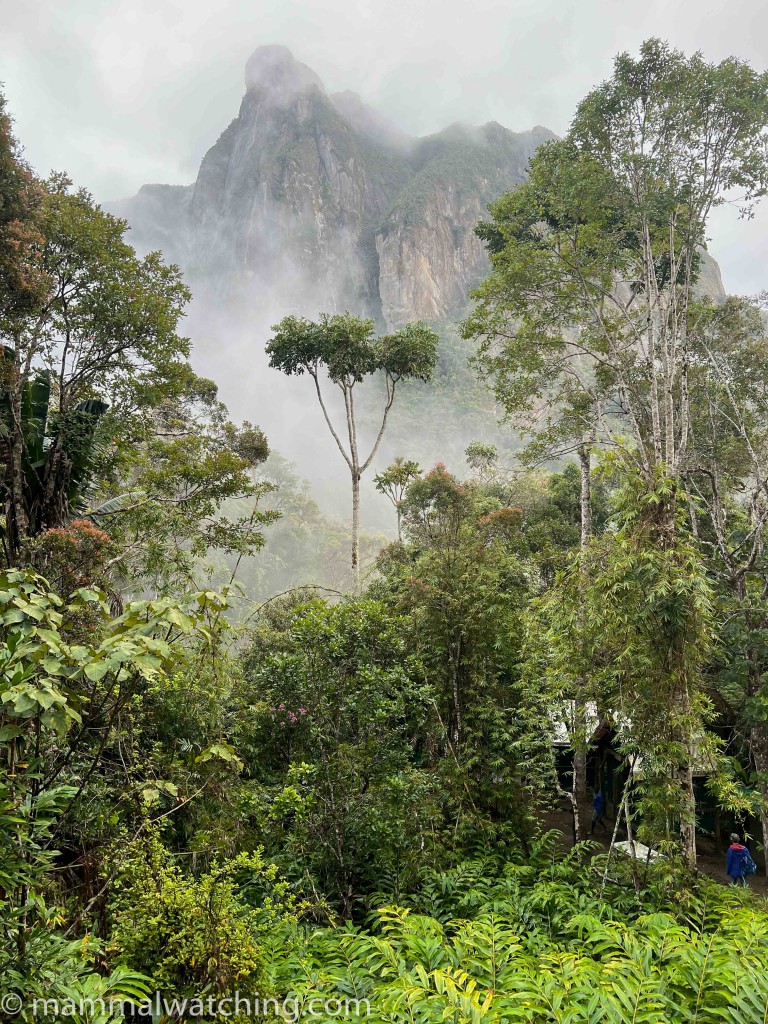
Key species: Silky Sifaka; Mittermeier’s Mouse Lemur; White-fronted Brown Lemur; Northern Bamboo Lemur; Ring-tailed Vontsira.
Marojejy National Park, which protects the Marojejy Massif, has been a protected area since the 1950s. A first a nature reserve, it became a national park in 1998. You need to walk into the park from a nearby village. The park entrance is less than 400 metres above sea level. A trail takes you onwards and upwards through three campsites and then, eventually, to the 2100 m high summit.
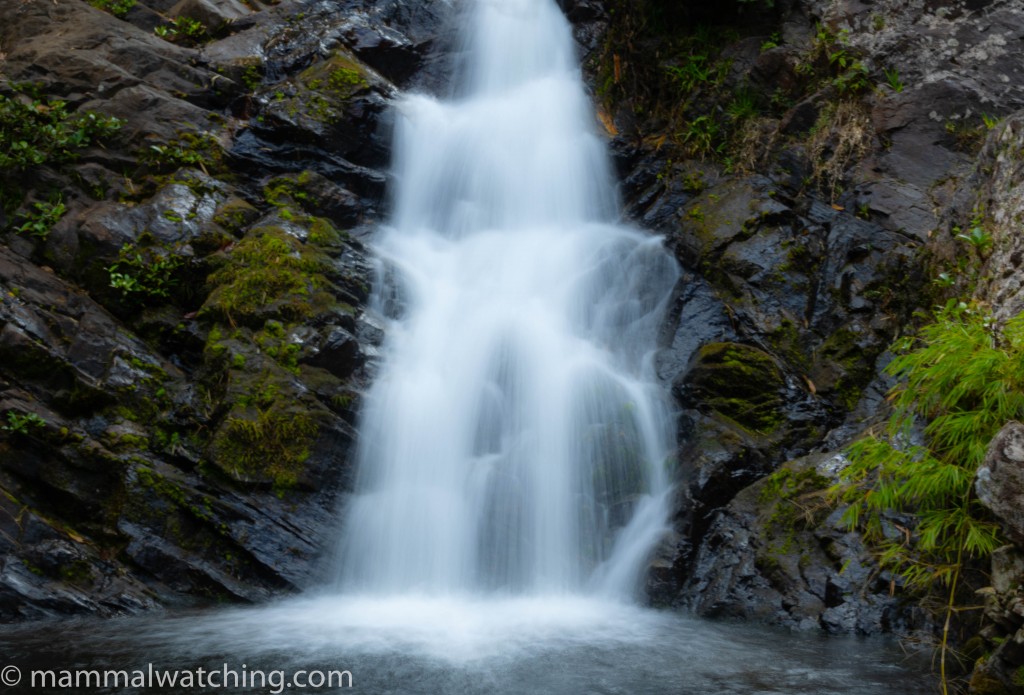
We would spend two nights here The first at Camp Mantella (450m asl) and the second at Camp Marojejia (775m asl). The critically endangered Silky Sifakas – the park’s flagship species – are usually found close to Camp 2. White-fronted Brown Lemurs, Northern Bamboo Lemurs and Mittermeier’s Mouse Lemur are often seen close to Camp 1.
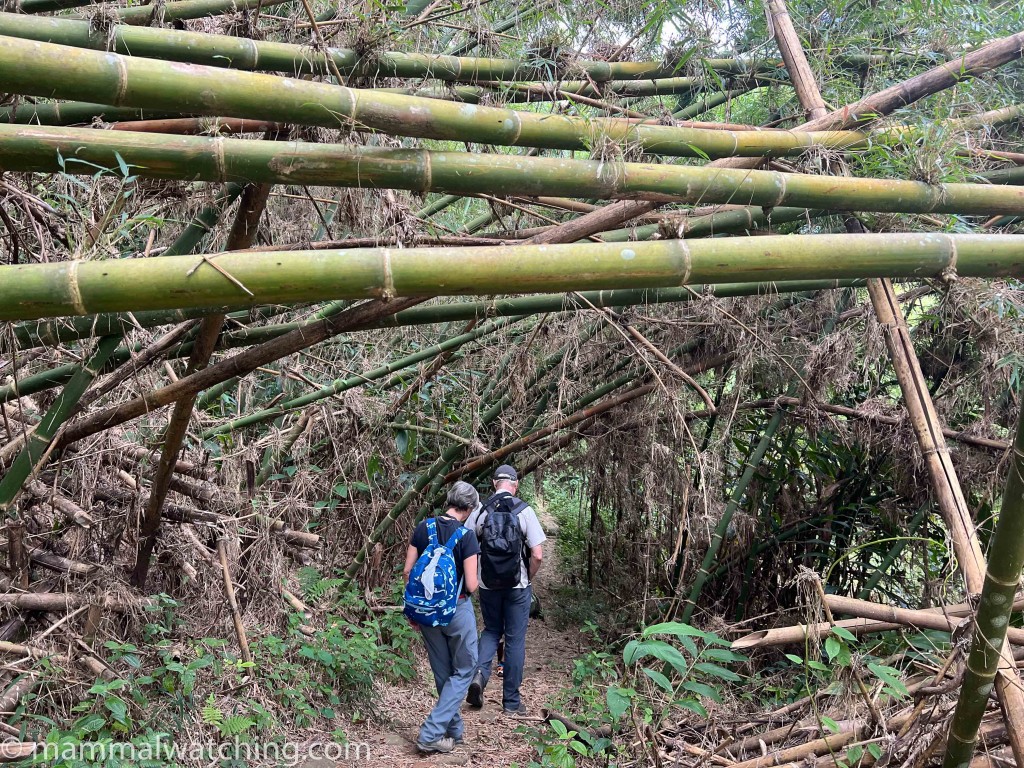
Bamboo forest at Camp 1
It takes about an hour and a half to reach the park HQ from Sambava. We arrived at 10:30. But by the time Patrick had organized a gang of porters, and we had repacked our luggage to leave as much luggage as we could in the park office, it was past midday.
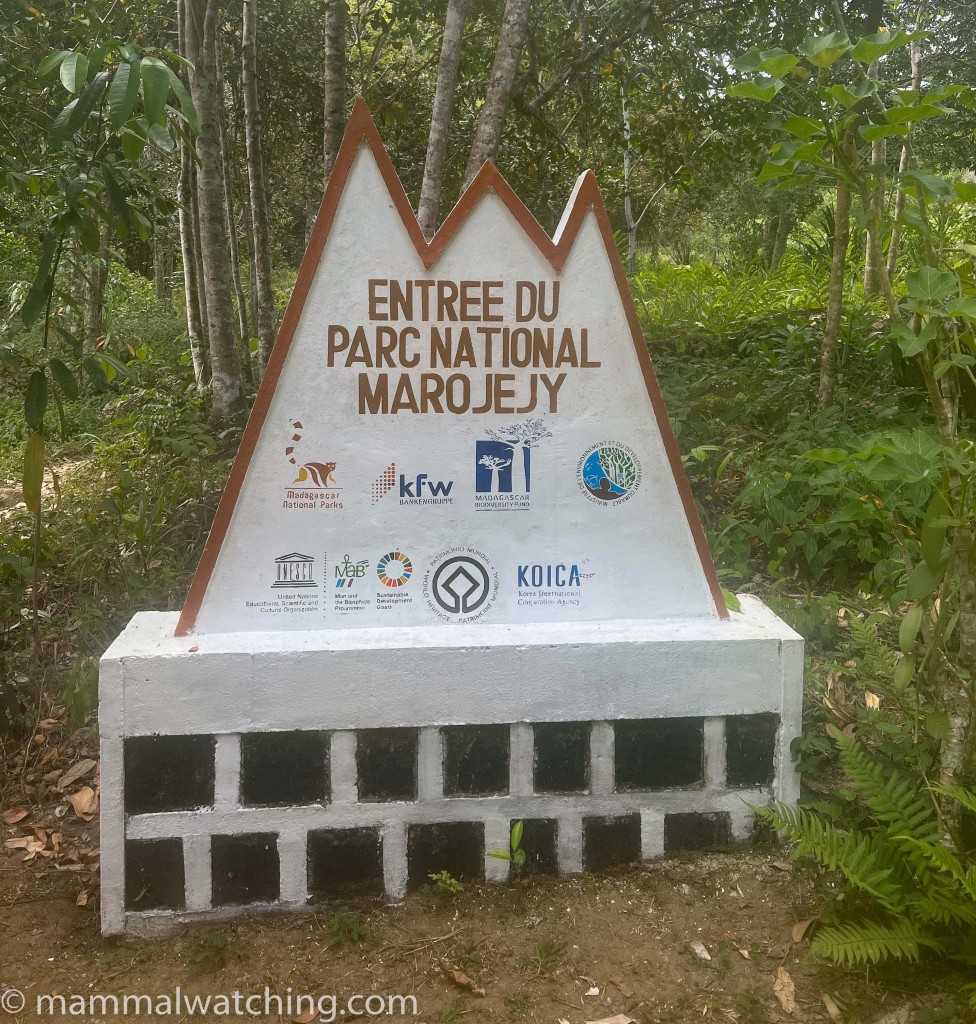
The four hour hike to the first campsite is gentle. It takes an hour about an hour to reach the park entrance, and then another 2.5 hours to reach camp. But that schedule included stops to see various mammals and even a bird.
Our two guides – Franco and Desiree – were good and Desiree in particular was clearly very knowledgeable about the park’s mammals and how to find them.
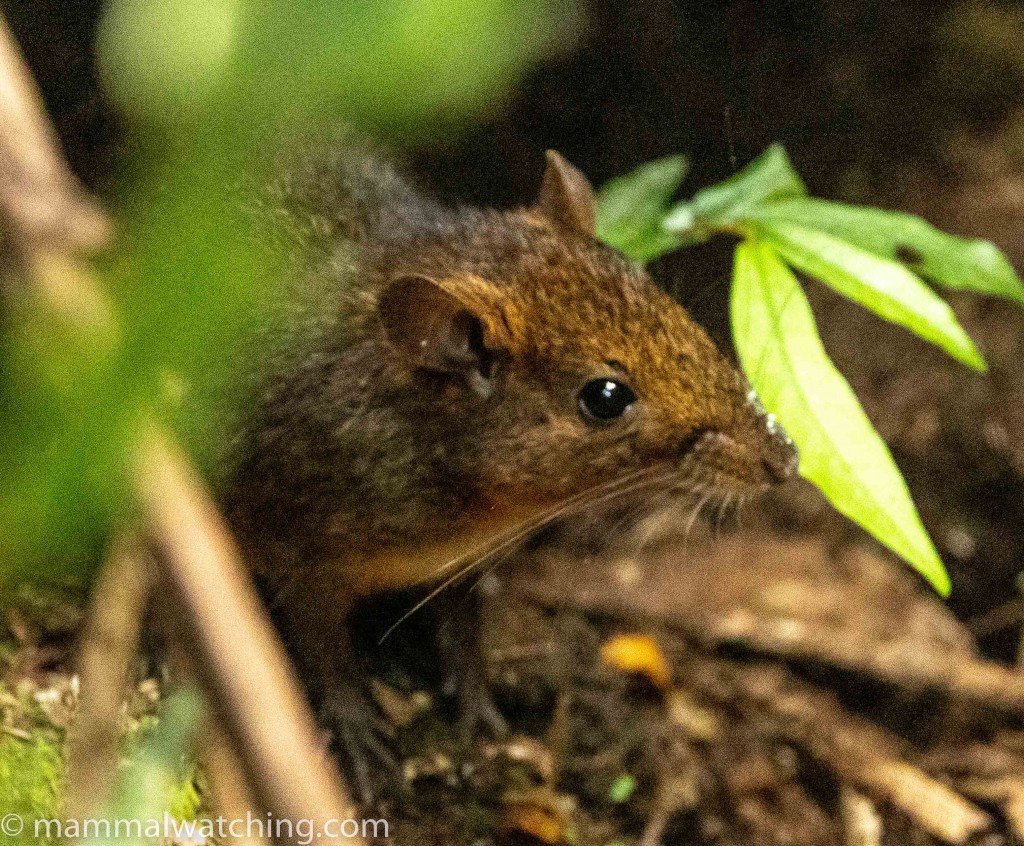
Lowland Red Forest Rat (Nesomys audeberti)
We got a decent look at this red forest rat about half way between the park entrance and the campsite. There are two species of Nesomys in the park: Eastern (Nesomys rufus) and Lowland (N. audbertii). According to Steve Goodman’s book Les petits mammiferes de Madagascar, Nesomys rufus is found at altitudes over 900m, while N. audebertii lives below 1100m. This animal was below 400m and – according to Steve – also looks like a juvenile Lowland Forest Rat (the two species have different tails and in the amount of white on the venter).
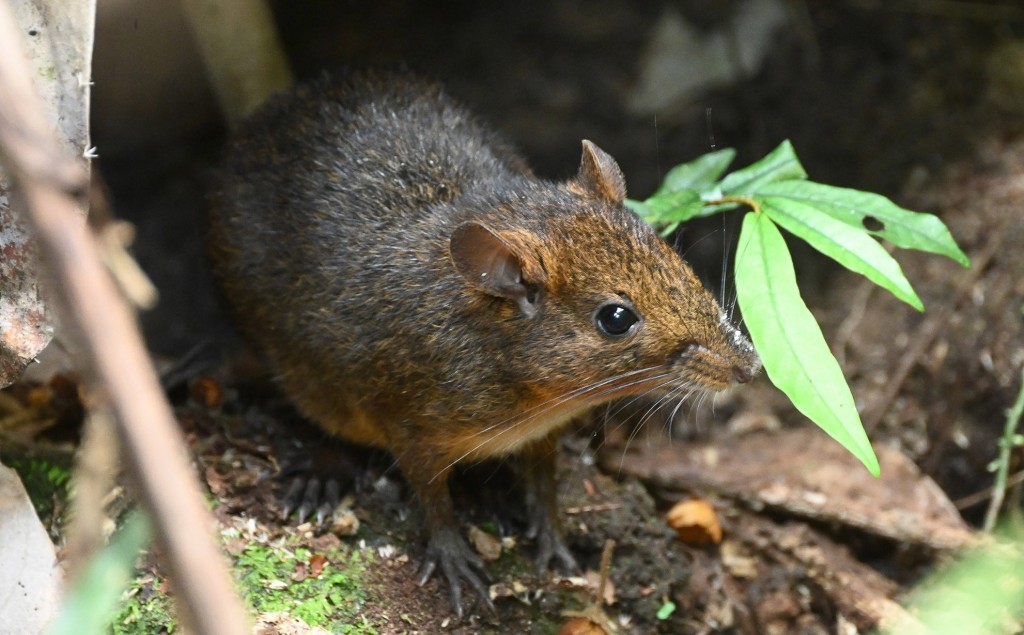
Lowland Red Forest Rat (Nesomys audeberti). Photo Jean-Michel Bompar.
A little further on we had a 15 minute encounter with a troop of White-fronted Brown Lemurs.
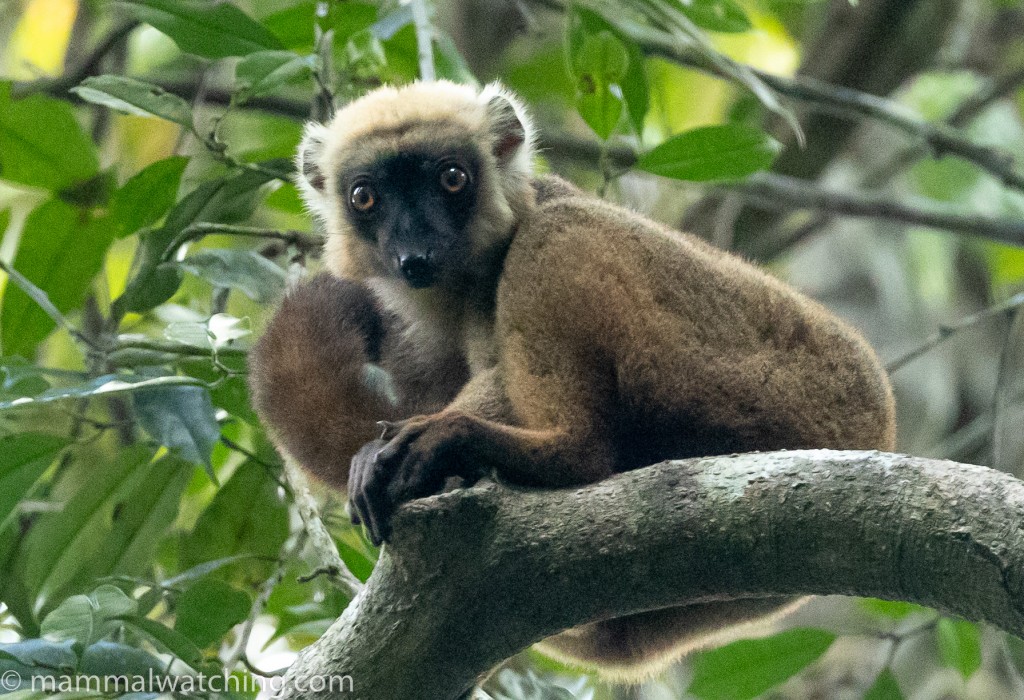
White-fronted Lemur (Eulemur albifrons)
And this bird was worth a stop.
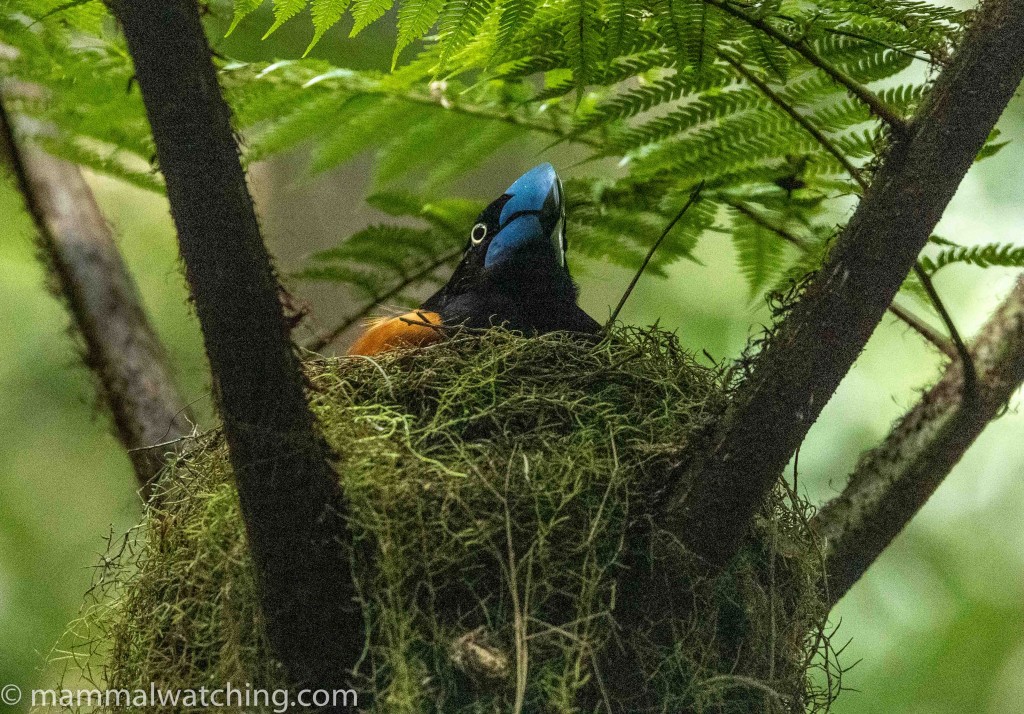
Helmet Vanga
Bamboo forest begins just below Camp 1. Patrick seemed certain we would find Northern Bamboo Lemurs here and sure enough there were animals next to camp in the late afternoon and again in the early morning. The thick, humid, forest made photography tricky.
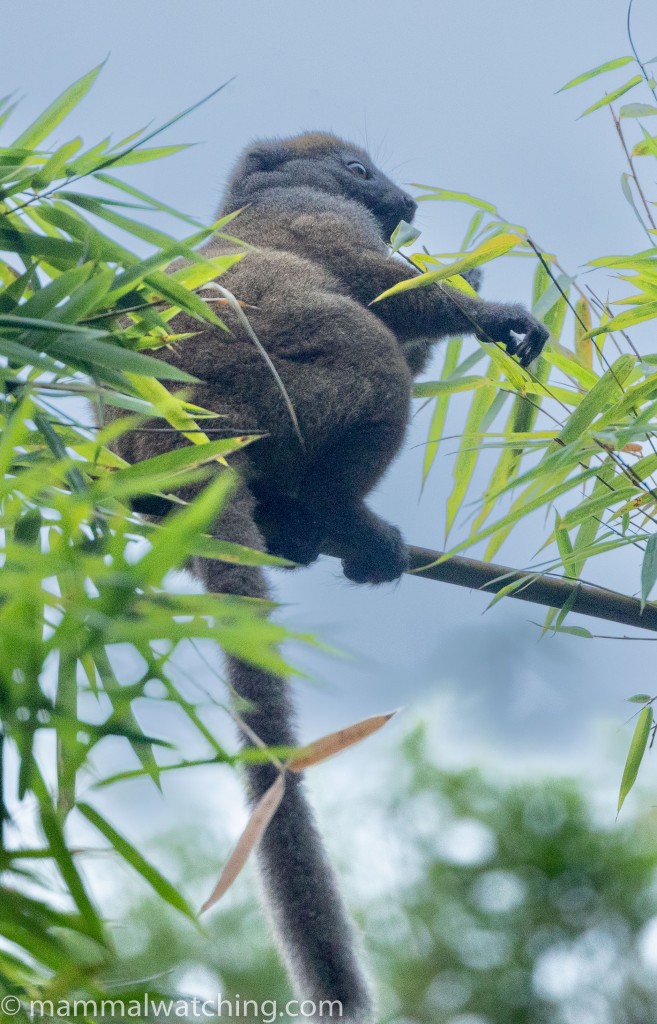
Northern Bamboo Lemur (Hapalemur occidentalis)
The dense forest did not make for a great night walk either, but we did find one new nocturnal species for the trip: Mittermeier’s Mouse Lemur.
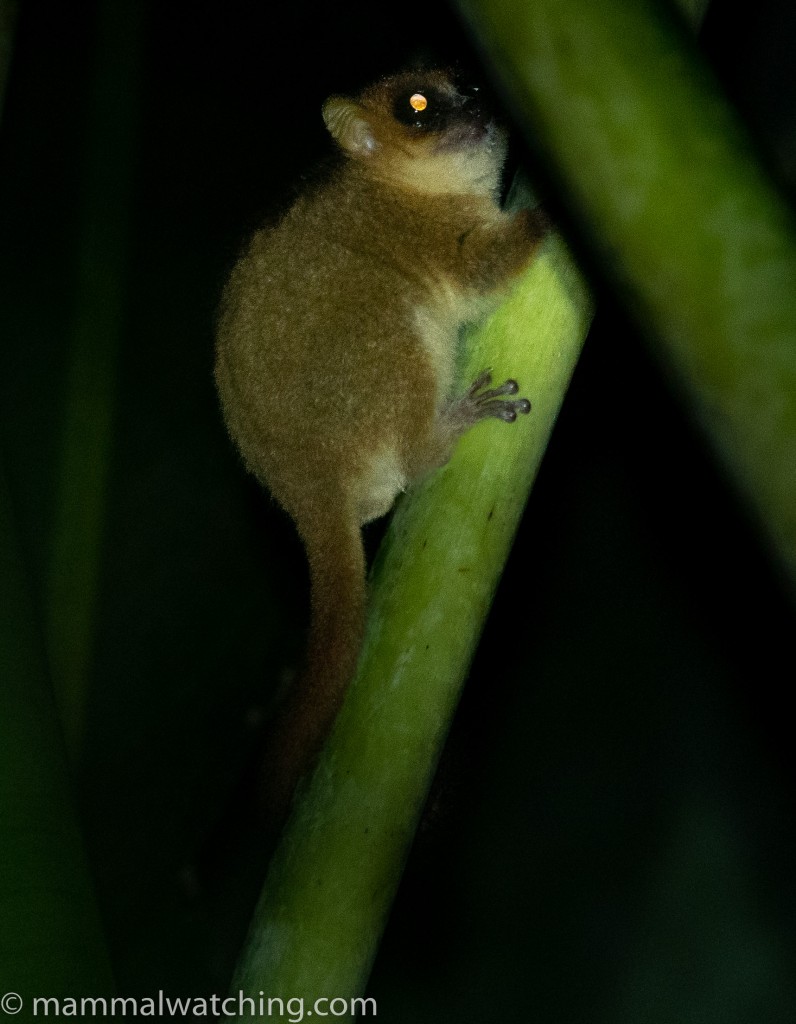
Mittermeier’s Mouse Lemur (Microcebus mittermeieri)
The next morning it took two hours to reach the second camp. The last half an hour of the climb was steep and slippery.
After a coffee we headed further up the mountain to see the Silky Sifakas. The guides find them every day. The lemurs were only a few hundred metres up the trail, but the very steep climb still took me 30 breathless minutes.
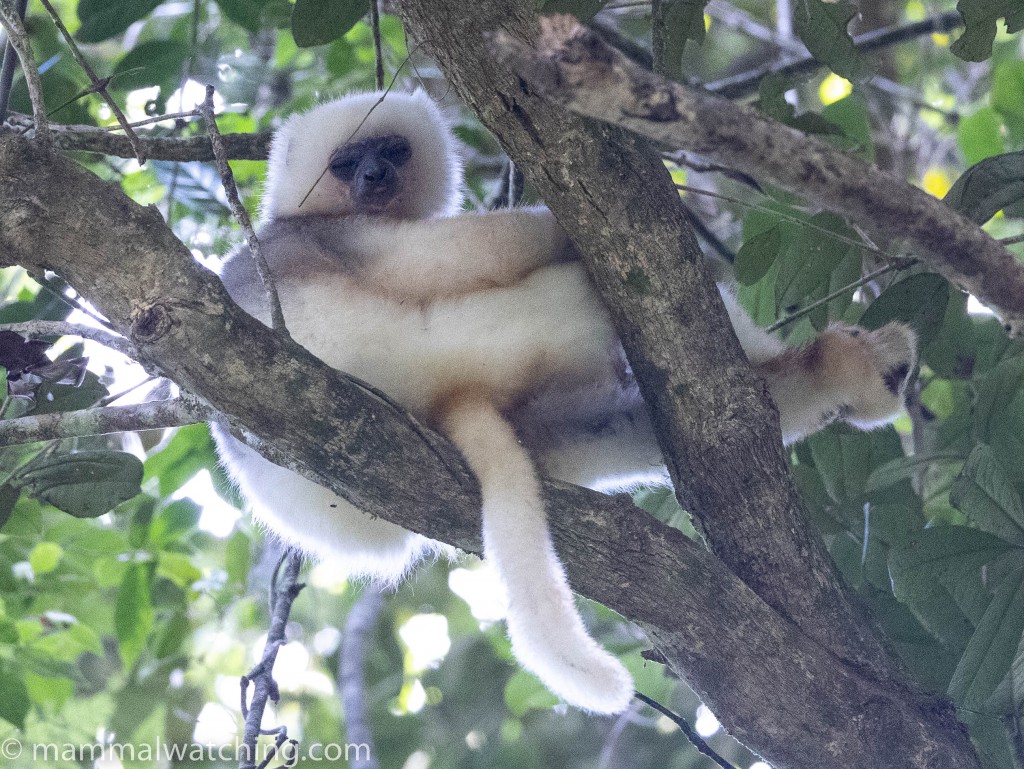
Silky Sifaka (Propithecus candidus)
The family group was relaxing. We had an entertaining hour watching the adults try to rest, while the baby of the family refused to. Parental patience seemed to be wearing thin as time progressed and playtime turned into “lets pretend to be asleep and maybe junior will get bored.”
Admittedly, this was one of my preferred parenting strategies so it is possible I am projecting.
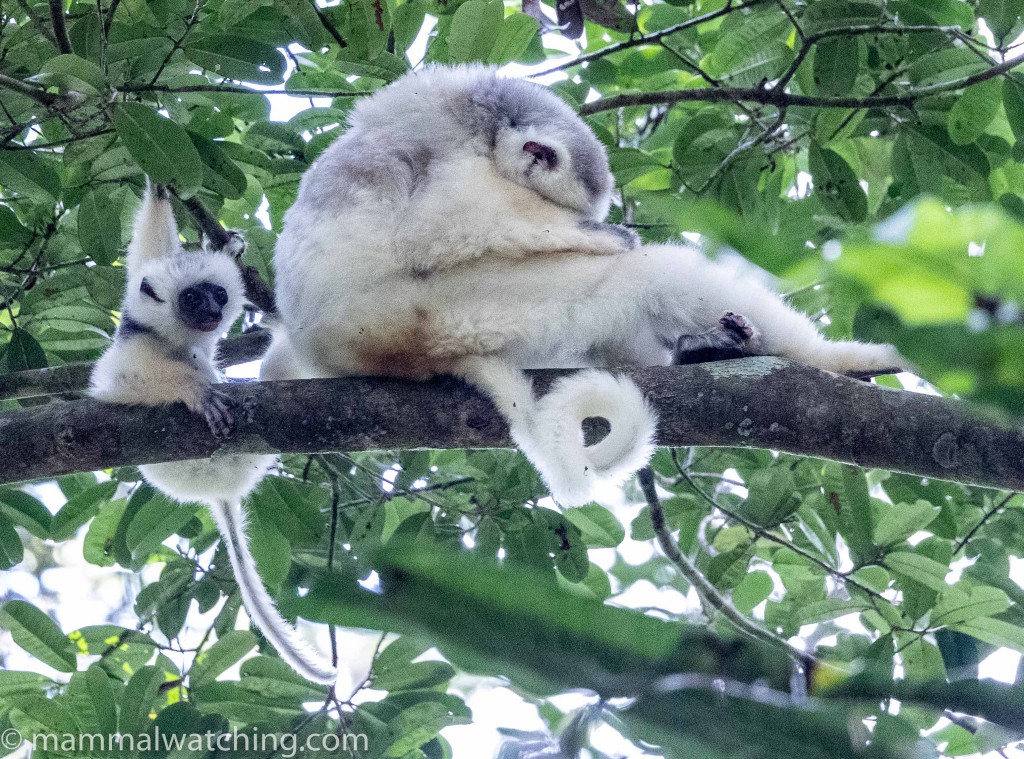
Silky Sifaka (Propithecus candidus)
Back at camp there was some discussion about returning to watch them sifakas in the afternoon but there was little enthusiasm about climbing back up the trail.
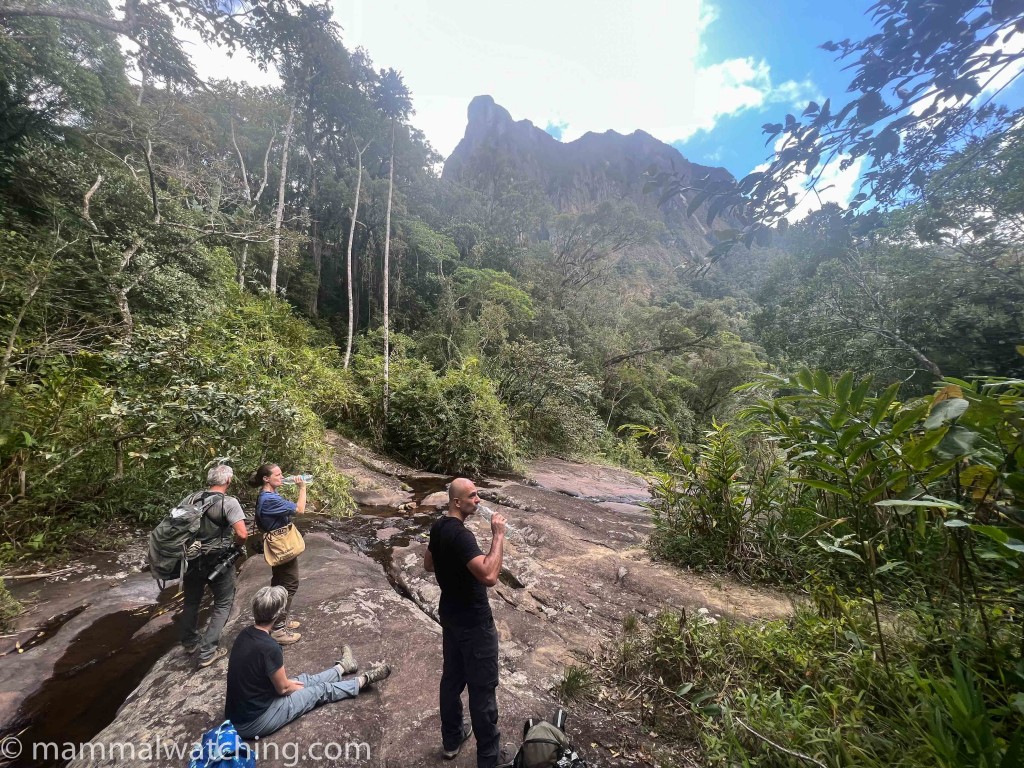
It rained for most of the afternoon but between showers a Ring-tailed Vontsira, apparently regular here, appeared to steal food from the kitchen. Some great photo opportunities despite the poor lite.
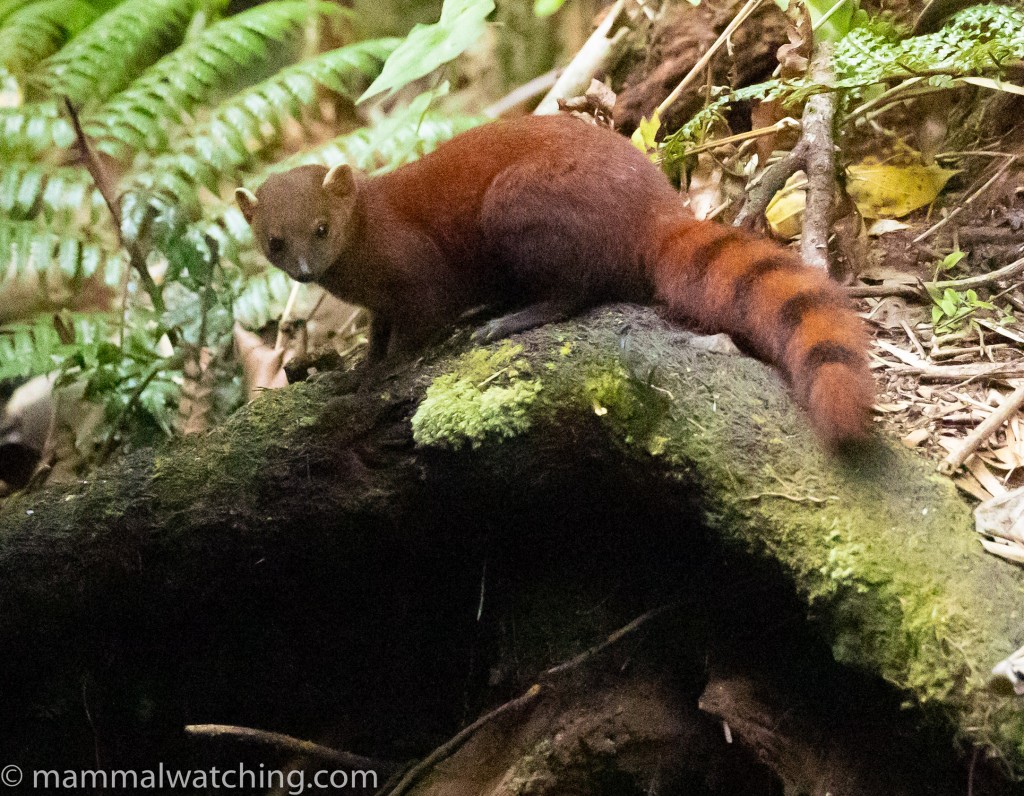
Ring-tailed Vontsira (Galidia elegans)
Heave rain continued after dark and the very steep an slippery trail – in both directions- meant a night walk was going to be a challenge. Some of our group ventured out briefly but saw nothing. I found a Greater Dwarf Lemur next to camp.
Other mammals recorded here include Hairy-eared Dwarf Lemur and Eastern Woolly Lemur, but these animals are generally found at higher altitudes (around Camp 2 and above if I understood Desiree correctly). They are not easy to find with a spotlight given the thickness of the forest and the steepness of the trails.
We left the second campsite at 6 a.m. and were back at the minibus by 10 a.m., ready for a full day’s drive north to Ambilobe town and the sterile – and alcohol free – Mouna Hotel, our stop for the night.
Ambanja
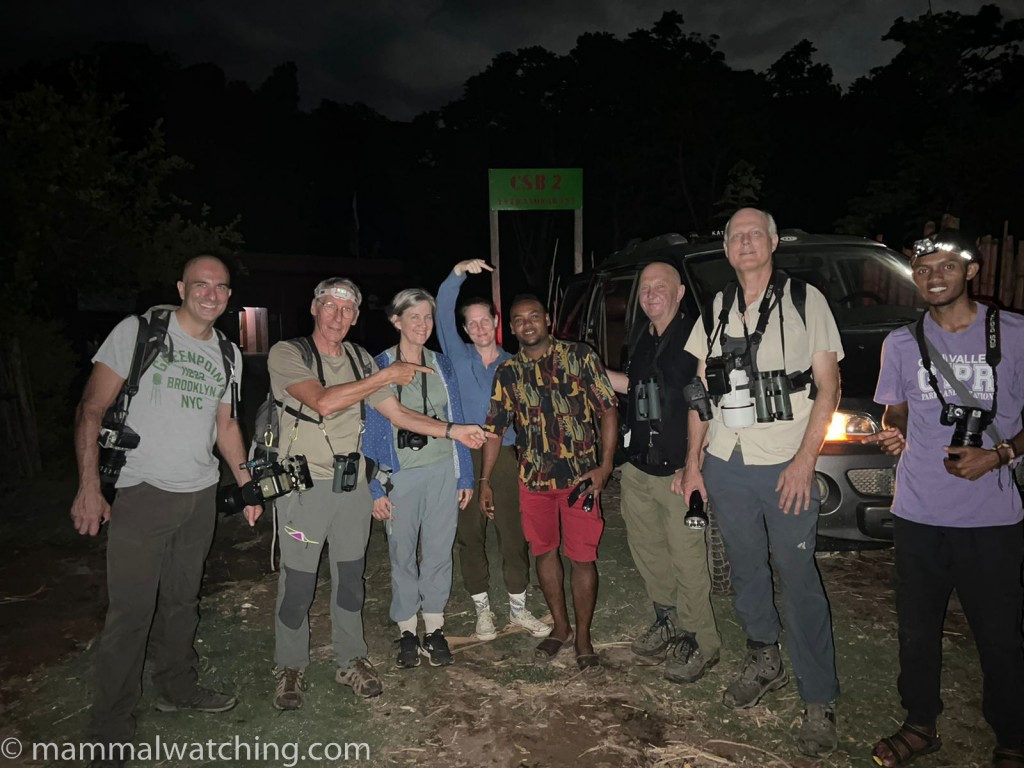
Key species: Sambirano Fork-marked Lemur; Grey’s Sportive Lemur; Northern Giant Mouse Lemur; Sambirano Mouse Lemur.
Today was very nearly a rest day. Can you imagine? Yikes!
You see until late in the planning stages I hadn’t fully appreciated that Ambanja was only a 3 hour drive from our overnight stop at Ambilobe. Patrick explained his reasoning: it would almost certainly require driving for several hours after dark to reach Ambanja the same day we left our Marojejy campsite. And driving after dark in some areas, Patrick felt, would be a security risk.
Yet our next destination – a trip to the Blue-eyed Black Lemurs in the forest fragments close to the village of Andamoty – was also too far for a day. Simply driving from Ambilobe > Andamoty>Ambanja would take a minimum of 11 hours even if the road was good. And we would also need time to find the lemurs.
So Patrick planned for us to travel to Ambanja and continue from there the next day to look for the Blue-eyed Black Lemurs and then get to Ankify, where we could catch a boat to Nosy Be for our last day.
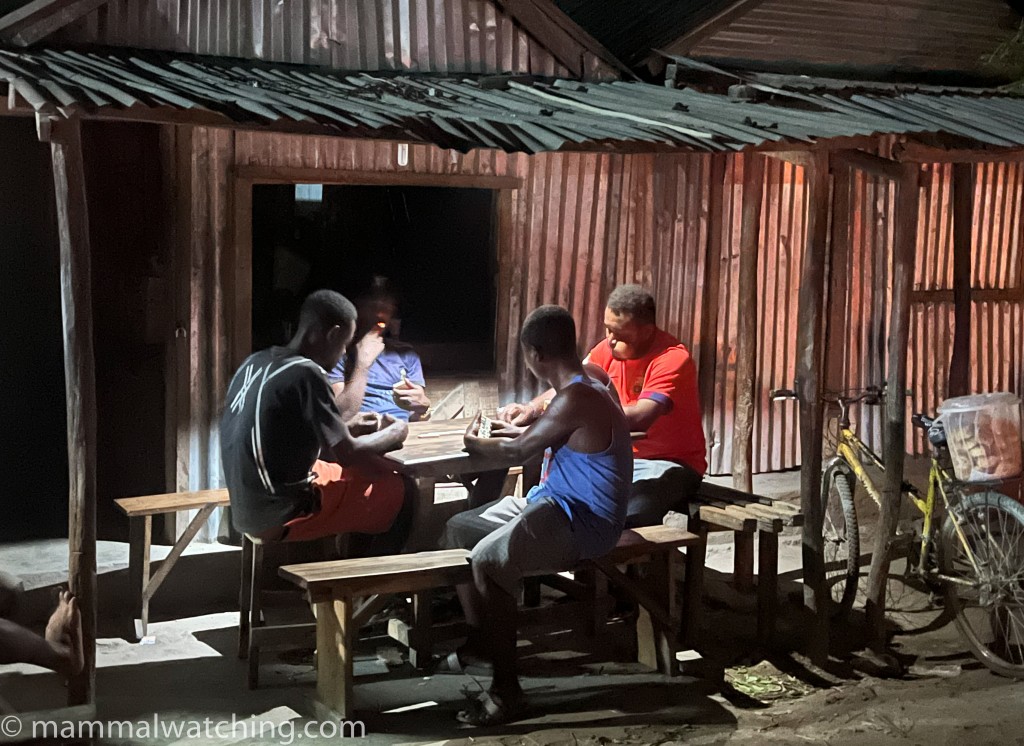
Edward Hopper meets Ambanja ….
But while the logic behind our itinerary was solid, it still meant we had a spare day without mammals to look for. Panic stricken, I was scrambling for alternatives. I found salvation in the Appendix C of the Lemurs of Madagascar book, whose the “key lemur-watching sites” opens with an entry for Ambanja. There might not be a national park near here, but secondary forests and abandoned cashew orchards were good for Northern Giant Mouse Lemurs, and Sambirano Fork-marked Lemur could be seen “sometimes even along main roads at night.” Rest day? Paaa!
I asked Patrick to find out more and – thanks to his network of biologist buddies – he arranged for us to visit a plantation and forest fragments a few miles south west of Ambanja.
We comprised on a “rest” morning in Ambilobe, which meant a late breakfast, a brief trip to the market, and me getting my head shaved by accident. After a late lunch in Ambanja, we met our guide Kenny here just before sunset.
I suspect Kenny has never guided people before, but he seemed to know the various species we were looking for and I think he had helped out with biological surveys.
He led us into a patch of forest and asked us to remove our shoes. Patrick looked a little surprised but seemed to think it might be because the forest was a sacred sight. We were too polite to ask too many questions. With hindsight we should have been less polite and should have explored our options to circumvent the requirement, or at least the bit of the forest that was “sacred”. Some of us were stung by rather nasty ants, and as we were leaving the “sacred” site we almost trod on a heap of used syringes. Maybe not so sacred after all.
But the mammals were worth it. There was not a high densite of mammals but there was great diversity. We found six species. Four of them new for the trip. Another possibly new to science. And the last one destined to be split.
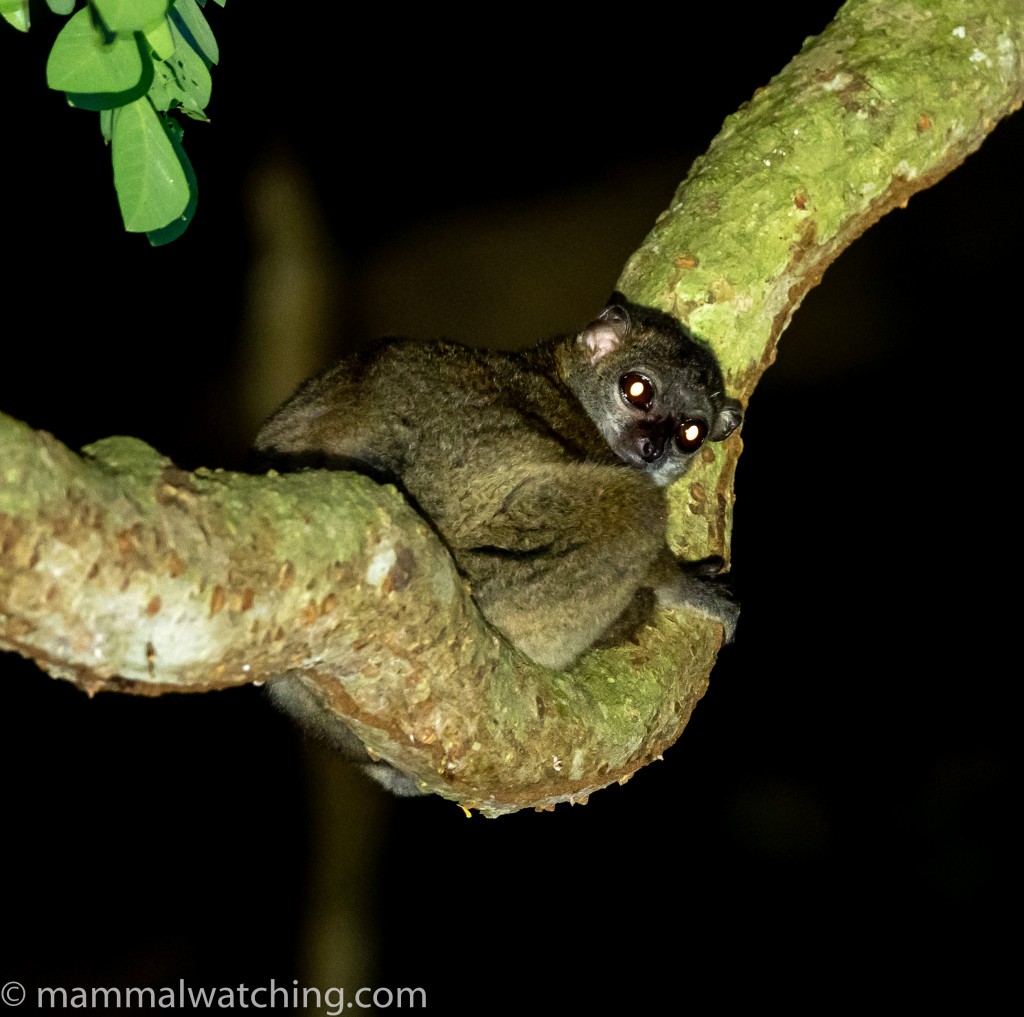
Gray’s Sportive Lemur (Lepilemur dorsalis)
Gray’s Sportive Lemur was the first species we encountered.
This dwarf lemur is part of the Fat-tailed Dwarf Lemur complex but will likely be split when the taxonomists get around to it.
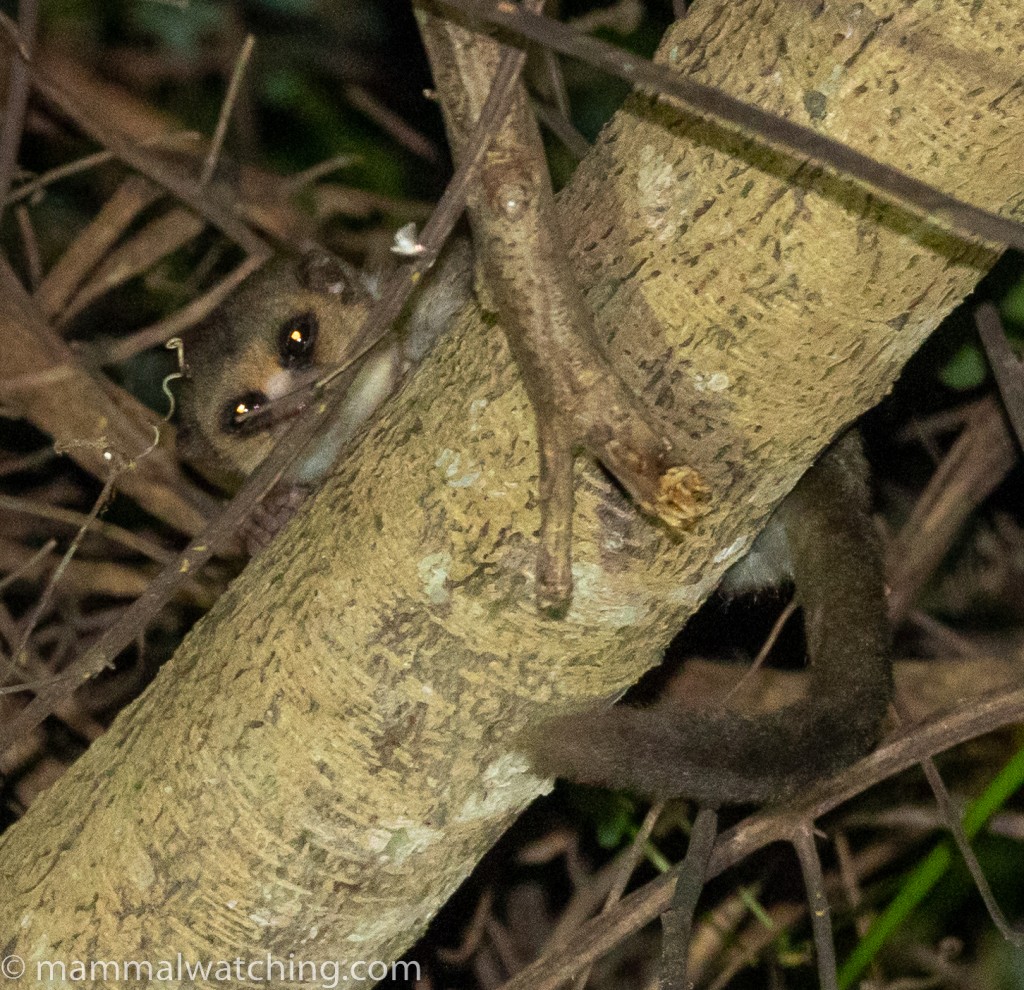
Fat-tailed Dwarf Lemur sp (Cheirogalues cf. medius)
A fairly distant and fast moving mouse lemur remained unphotographed. A rare event on this trip but it must have been a Sambirano Mouse Lemur.
We heard our fourth final lemur calling. I got a glimpse and distant photos of a Sambirano Fork-marked Lemur while – simultaneously – Jean-Michel got onto another animal that posed well for photographs.
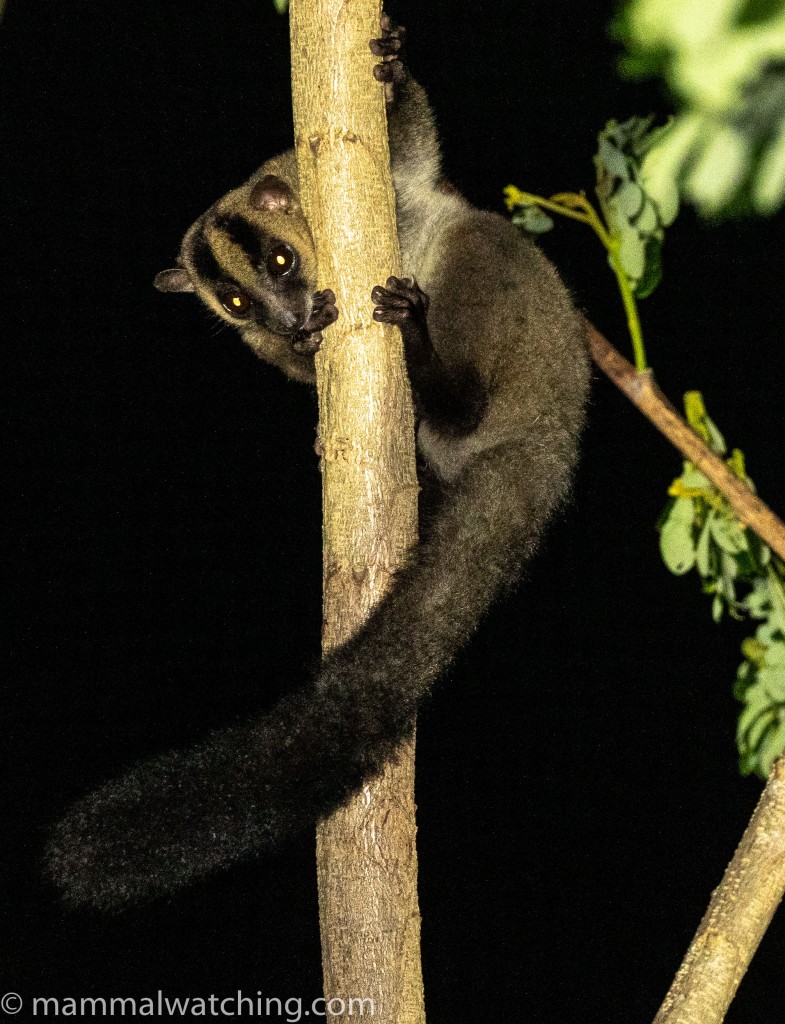
Sambirano Fork-marked Lemur (Phaner parienti)
Our fifth and final lemur took some time to track down.
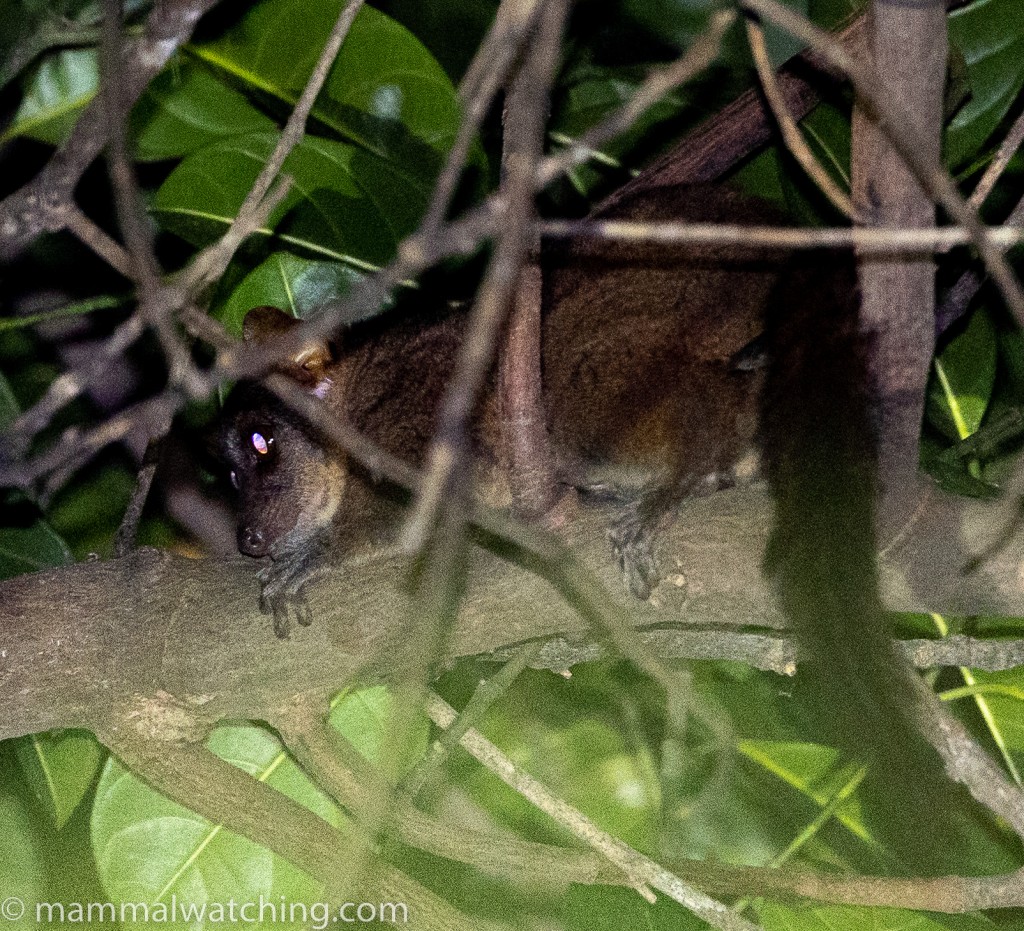
Northern Giant Mouse Lemur (Mirza zaza)
A Northern Giant Mouse Lemur, which reminded me more of a Northern Quoll – minus the spots – than a lemur.
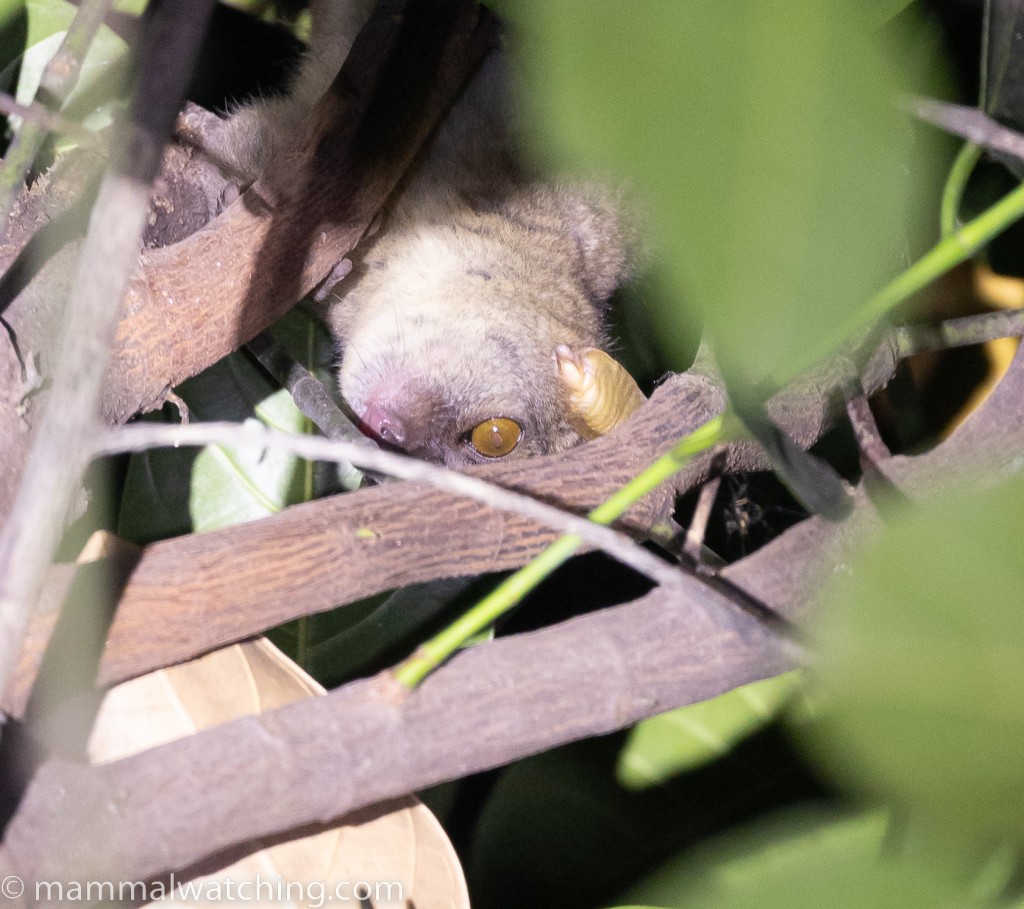
Northern Giant Mouse Lemur (Mirza zaza)
But the evening wasn’t over. We were happily reunited with our shoes and, on the walk out, my thermal scope picked up a medium sized rat feeding on a breadfruit.
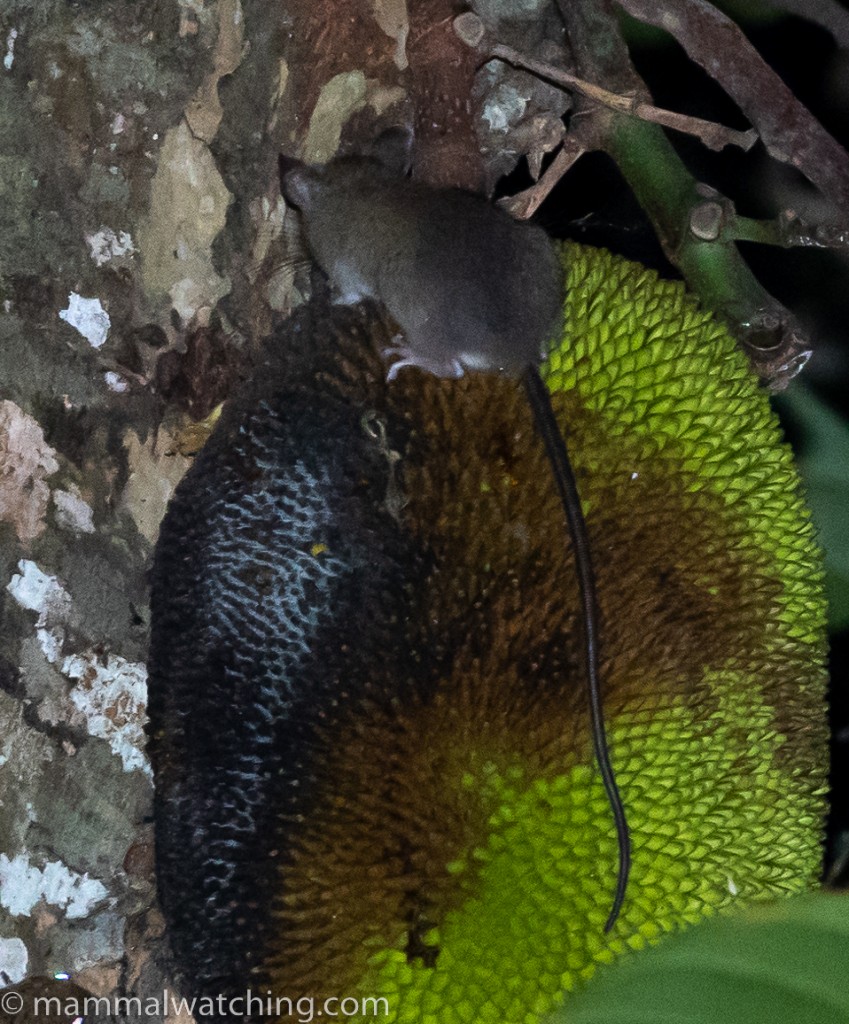
Mystery long-tailed rat
We have no idea what species it is. It was not huge – the head body might have been 15 or 20cm long. As you can see from the pictures the tail is at least twice as long as the head-body length. The closest species we could find in our field guides was a Long-tailed big-footed mouse (Macrotarsomys ingens). The size and tail length matches that species. The trouble is they had a well defined tuft on the end of their tail which this animal does not.
Steve Goodman suggested that a juvenile Rattus rattus was a possibility. True this animal might look more like a House Rat than anything else in the field guide, but no one else I have spoken to thinks this looks much like Rattus rattus. If anyone has any ideas please do let me know.
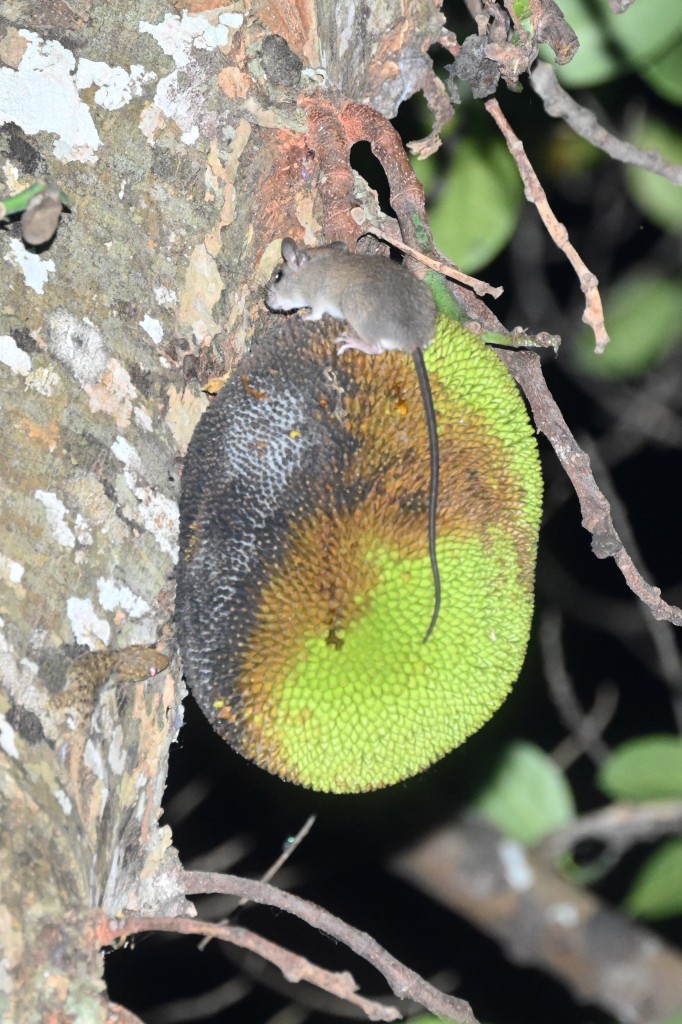
Mystery long-tailed rat. Photo Jean-Michel Bompar.
Blue-Eyed Black Lemur Site
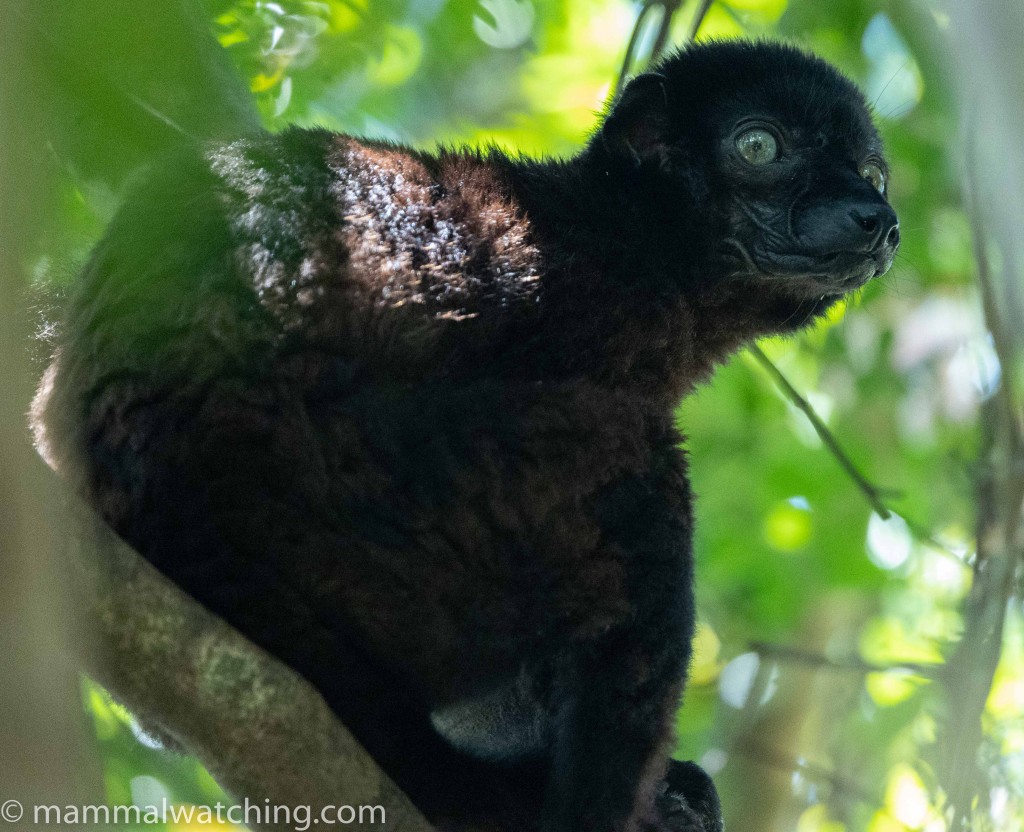
Blue-eyed Black Lemur (Eulemur flavifrons)
We spent our penultimate day visiting forest fragments alongside Route nationale (RN) 6 and the village of Andamoty to see Blue-eyed Black Lemurs.
This beautiful species, split from the Black Lemur in 2008, is found in Sahamalaza National Park. Access to that park is famously difficult along what has been described as “one of the worst roads in Madagascar.” This is a tough competition to rank in.
Mogens Trolle’s excellent report from a trip not long before ours, accounts his aborted attempt to reach the national park and his successful recovery to see the species in forest fragments in the Antanambao–Antontorona area along RN6.
This was the area we had been planning – on Patrick’s advice – to visit in any case. We were there in mid November. The rains were starting and so the road to the national park would likely have been even worse.
The main RN6 road we took from Ambanja was bad enough. It took us 4 hours to reach the lemur site here, near the village of Andamoty, where we met a friend of Patrick’s dad. He led us up a steep trail into a private patch of forest. Half an hour later we were looking at a family of Blue-eyed Black Lemurs.
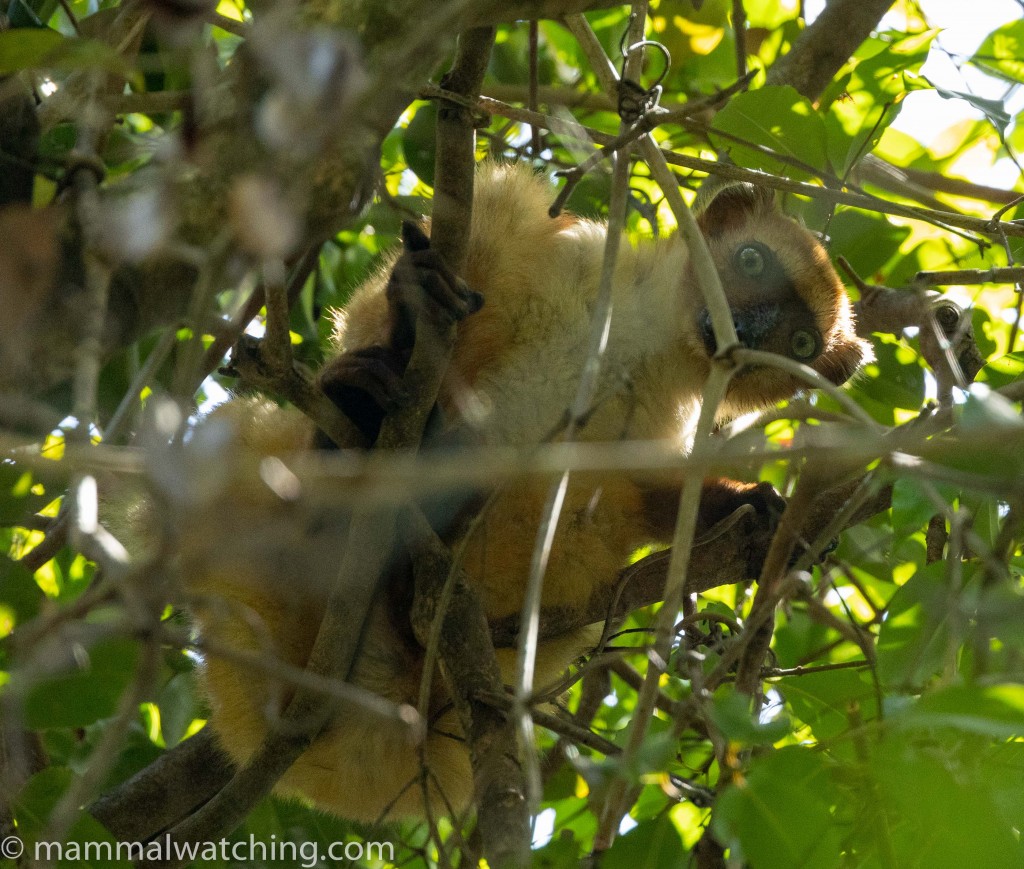
Female Blue-eyed Black Lemur (Eulemur flavifrons)
This was not anyone’s favourite mammalwatch of the trip. A long hot and bumpy drive was followed by a very hot, steep climb though the forest. The lemurs themselves were fairly skittish plus there were few trails in the forest: photography was a challenge.
With hindsight, and a little more time, it might have been better to have met up with Mogens’s guy – Tsivery Victor – and spent a night in the village like Mogens did.
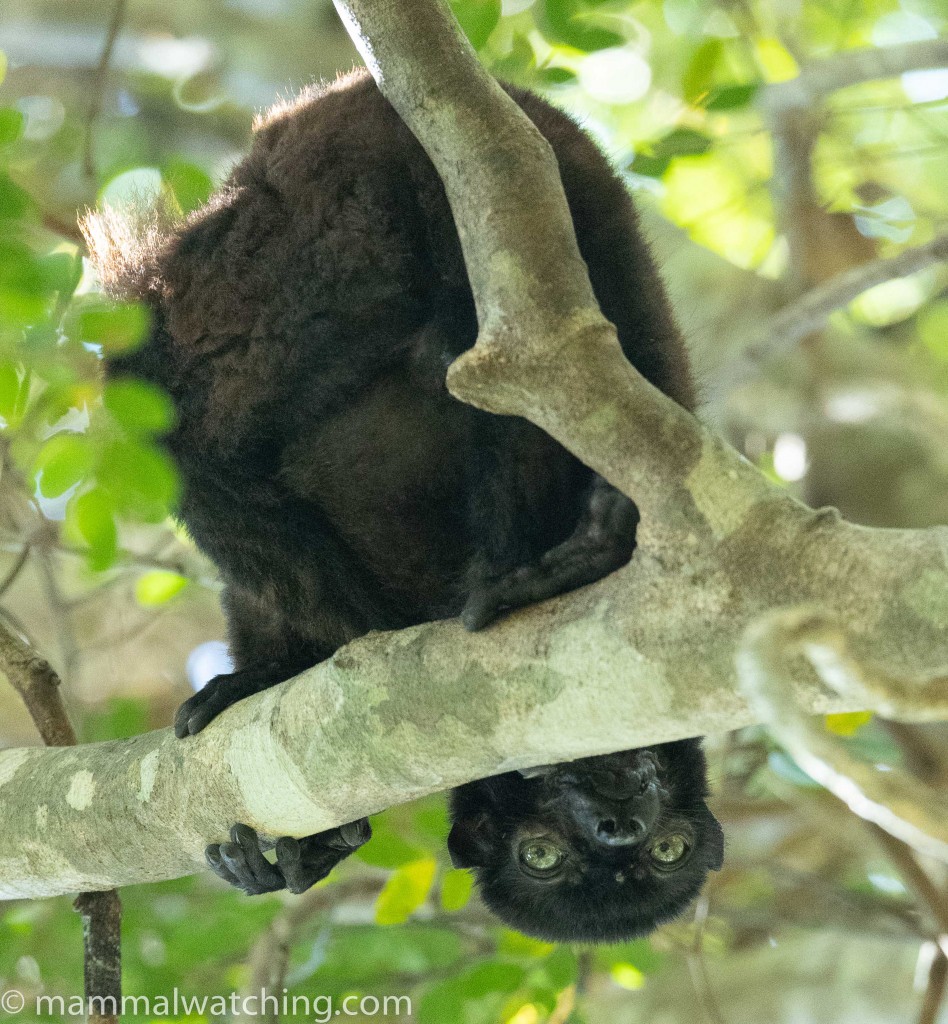
Male Blue-eyed Black Lemur (Eulemur flavifrons)
After two hours with the lemurs we returned to Ambanja, collected our bags (which we had left at the hotel to help our bus cope with the potholed roads) and drove an hour and a half to the port of Ankify, arriving well after dark.
Our hotel – the Panoramic Lodge – may not have had running water, but it did have Black Lemurs in the garden (which surprisingly were active well after dark) and good food.
Nosy Be
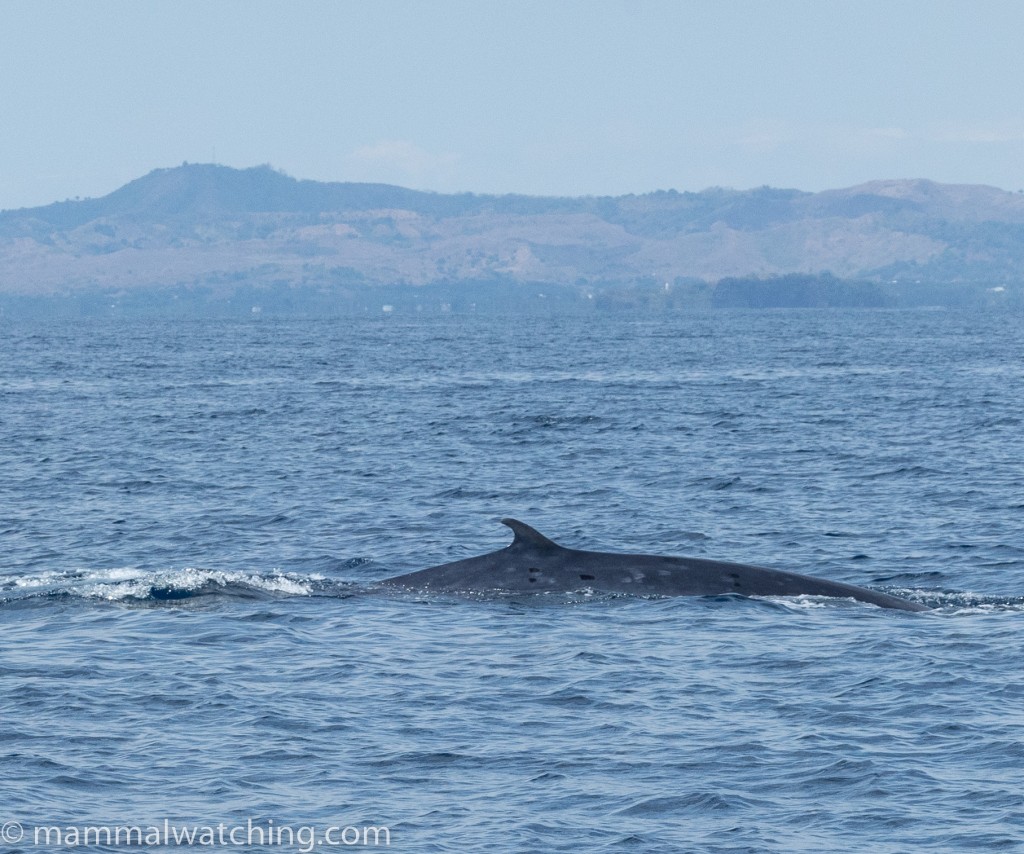
Omura’s Whale (Balaenoptera omurai)
It takes less than half an hour to reach Nosy Be by speedboat from Ankify and early mornings are usually the calmest time to make the crossing. We arrivedat the main port just after 7 a.m. and took a 45 minute taxi to our very comfortable hotel – Le Moya Beach – half way up the island’s west coast.
We planned to visit the Lokobe Reserve in the afternoon to look for Nosy Be Sportive Lemurs, Nosy Be Mouse Lemurs and Black Lemurs. But the rest of the day was free.
I had read in Reef & Rainforest’s very helpful report that we had a chance to see Omura’s Whale this time of year. The sea was calm so we asked Patrick to find us a fast boat and thought we would give it a shot.
Our local guide – who did not seem to know very much at all about Nosy Be’s wildlife – claimed that there were no whales off of the island this time of year. So Jean-Michel called a Nosy Be whale watching company who, after some skillful cross-questioning from JM, confirmed the whales were present and could usually be found in the bay right in front of the hotel.
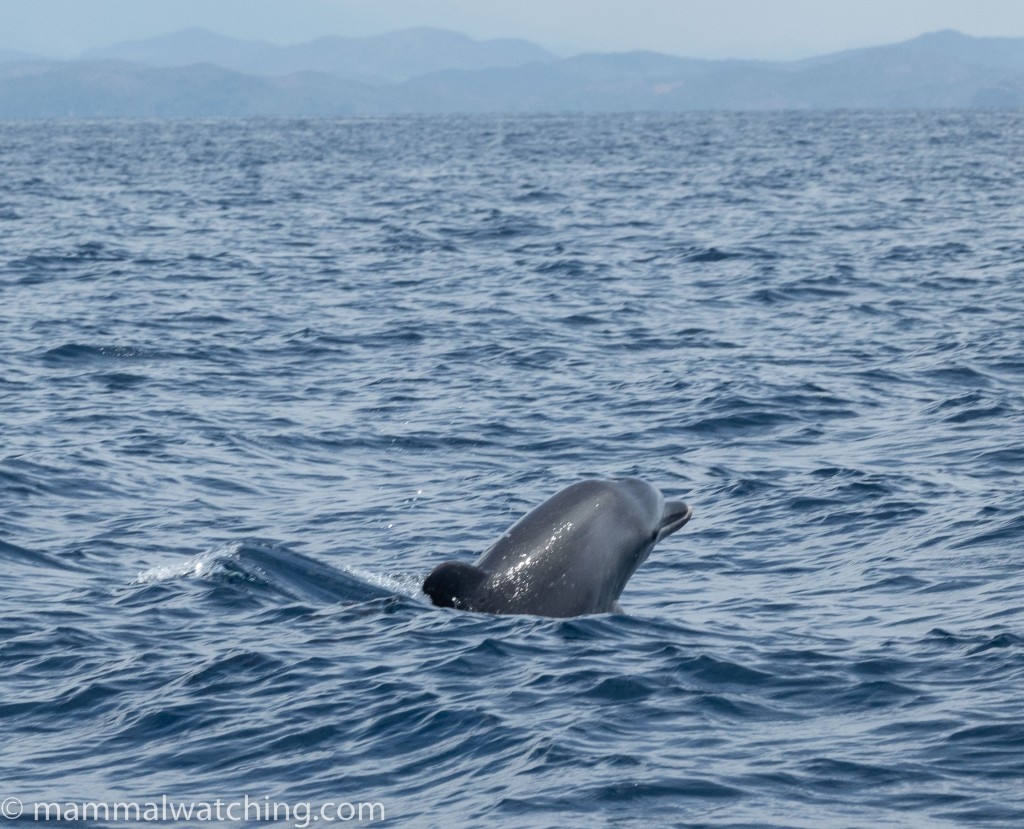
Indo-pacific Bottlenose Dolphin (Tursiops aduncus)
Patrick found us a nice boat, that we could charter for 300 euros for the day, and we zoomed out to see heading for a flotilla of tourist boats that were looking for Whale Sharks. Snorkelling with Whale Sharks would not be too shabby a way to spend the day if we couldn’t see the Omura’s Whales. And in any case, both whales and Whale Sharks might be feeding on the same plankton.
Half an hour into the trip a pod of Indo-Pacific Bottlenose Dolphins came into the bow and then Jean-Michel noticed a distant blow. Ten minutes later I spotted an Omura’s Whale surface feeding only a few hundred metres in front of us.

Omura’s Whale (Balaenoptera omurai)
There appeared to be at least three whales and we followed them for half an hour, getting crippling views.
It has been more than 5 years since I saw a new rorqual whale and even longer for Jean- Michel who has spent a lot more time at sea than me, including guiding on whale watching boats in France when he isn’t doing one of his other many jobs. We were delighted to get such a good look at such a little-known species. Only described in 2003, Omura’s Whale was originally thought to be dwarf form of Bryde’s Whale but is now recognised as being more closely related to the Blue Whale.
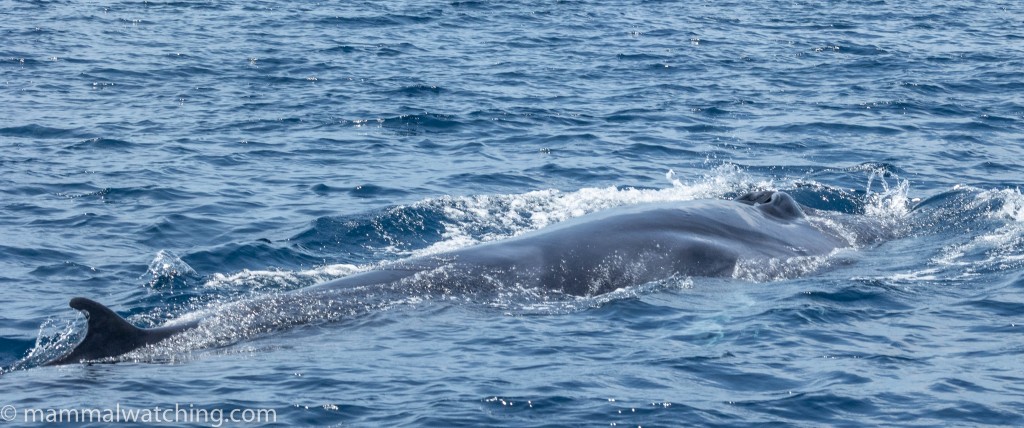
Omura’s Whale (Balaenoptera omurai)
We lost the whales and though we couldn’t find a whale shark we satisfied ourselves with lunch on the beach and a brief snorkel with some sizeable sea turtles.
My hunch is that the whales should be pretty easy to find if you have flat seas and a quick boat dedicated to searching for them. Or perhaps we got lucky … From what I could tell they are resident in the bay year round.
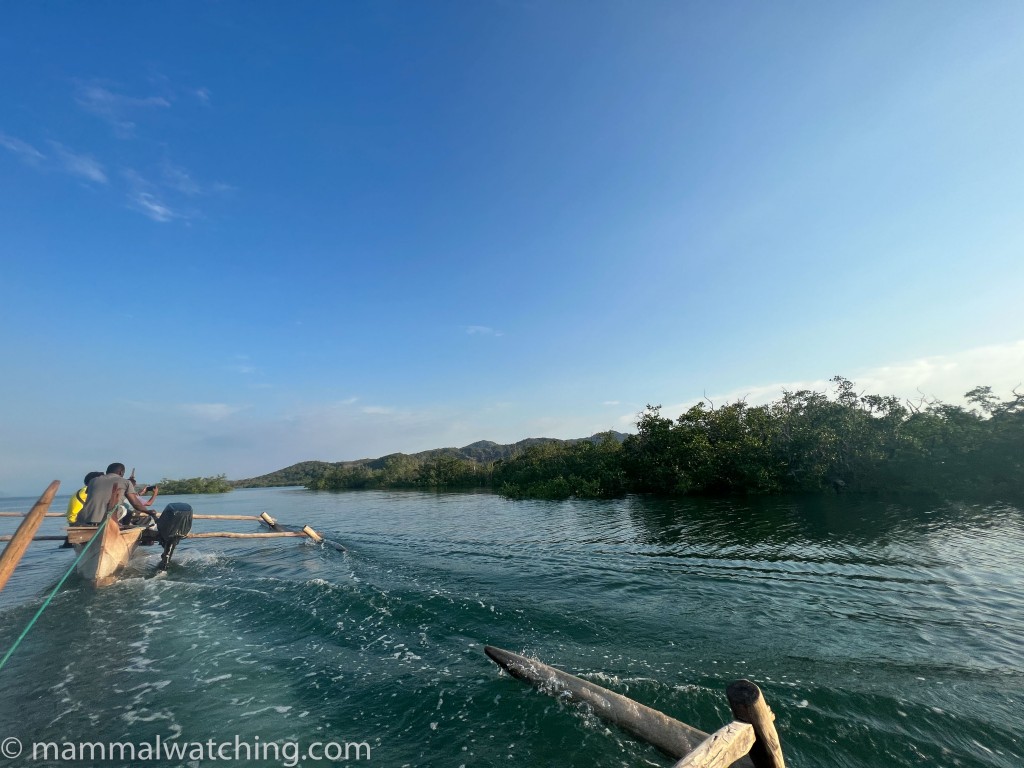
On the way to Lokobe
We arrived at the Lokobe Reserve an hour later than I had hoped. It took a while to get to their from the west coast of the island. An hour in a taxi followed by 30 minutes being towed in outrigger canoes and then a short walk along the beach, plus extra time for stoppages and general faffing around en route.
Although the sun was starting to set I was able to get some decent photos of the abundant Black Lemurs, which I had seen but not photographed the night before in Ankify.
There were dozens very close the park entrance.
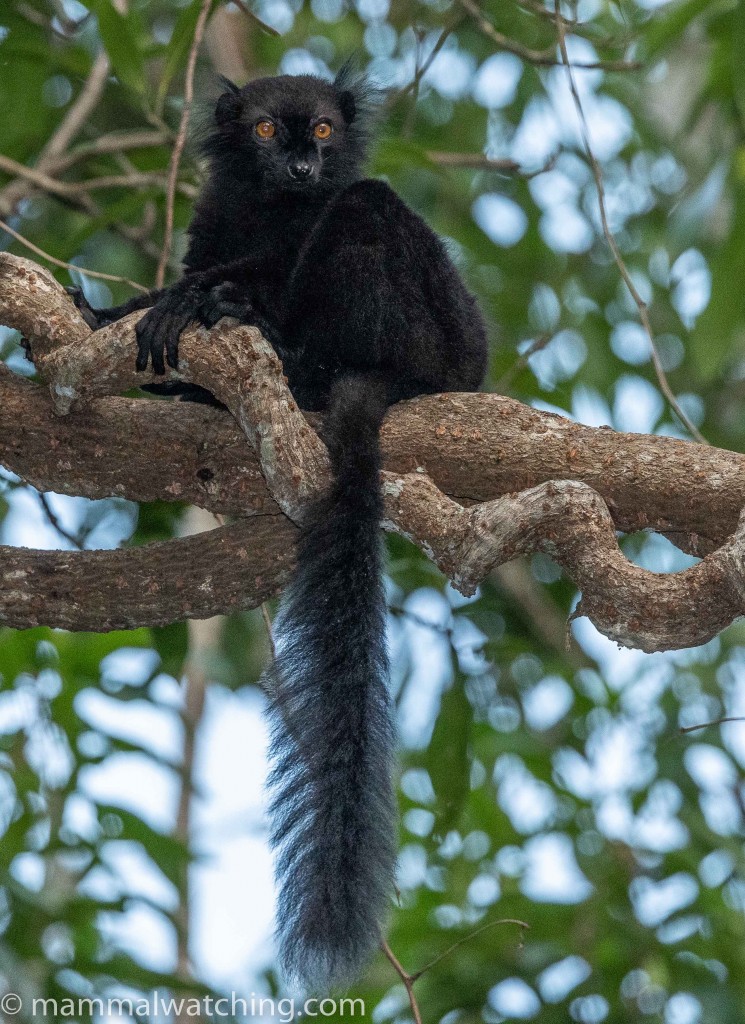
Black Lemur (Eulemur macaco)
The guides showed us a pair of Nosy Be Sportive Lemurs in a day roost right by the trail. We went on to see dozens more after dark while we walked the trails looking for a Nosy Be Mouse Lemur, our final target.
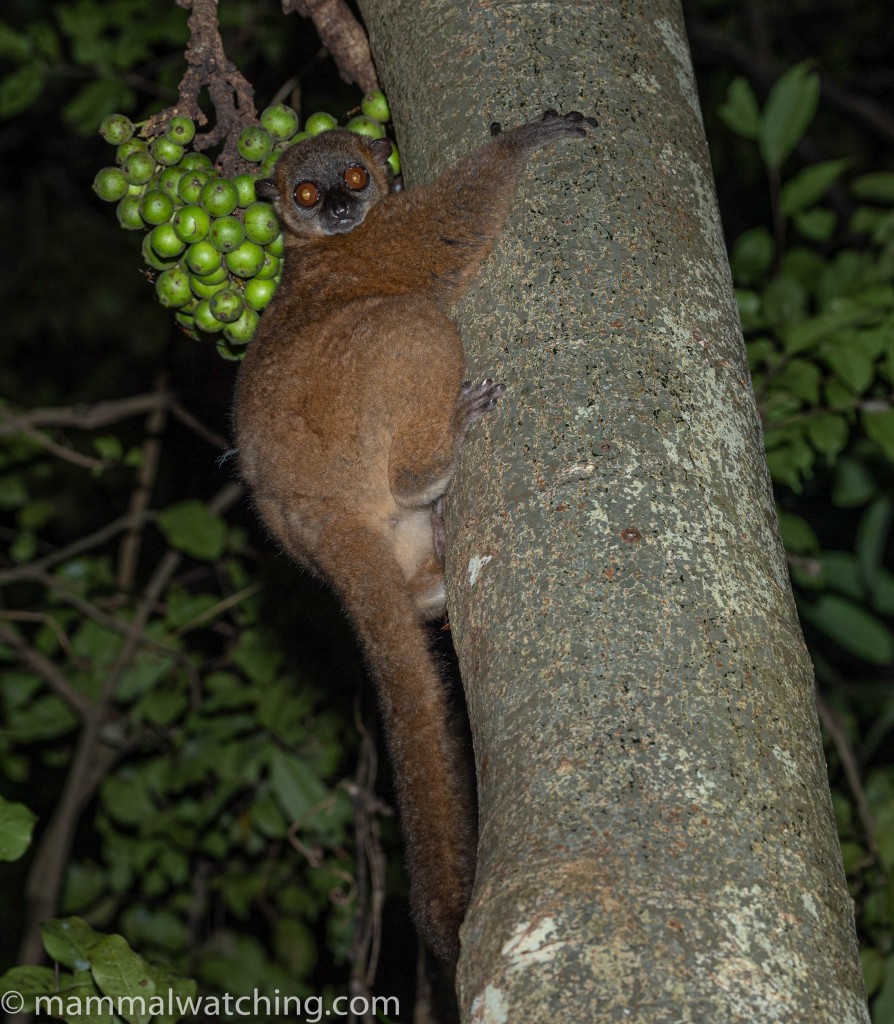
Nosy Be Sportive Lemur (Lepilemur tymerlachsoni)
After almost two weeks of mosquito-free forest we had been lulled into a false sense of security. None of us had bought insect repellent. And I was wearing flip flops. Big mistake. In a significant plot twist, Nosy Be is where Madagascar’s mosquitoes spend the pre Christmas season. They were merciless and I was cursing every sportive lemur we stopped to look at before – after over an hour – we finally found a gorgeous little Nosy Be Mouse Lemur.
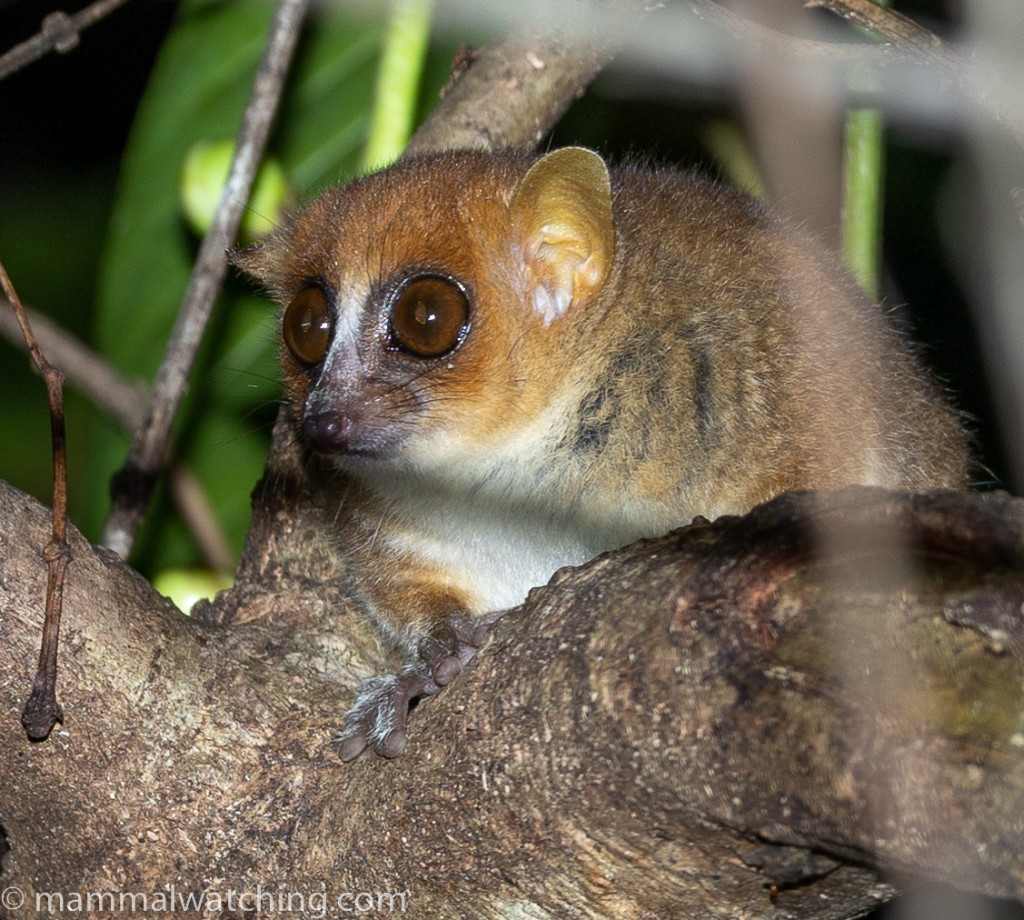
Nosy Be Mouse Lemur (Microcebus mamiratra)
And with that, our 40th – more or less – species, we walked back to the beach and the waiting canoes to return to the hotel for a very late dinner. We flew back to Tana the following morning to continue on – alone – for a few more days around Kirindy, Ranomafana and Kianjavato in the middle of the country.
Final thoughts and stuff we missed

Madagascar is extraordinary. As you can see from this map we covered just a fragment of the island and yet we still managed to see around 40 species, nearly all of them new for all of us.
Tomer Ben-Yehuda, who has an annoying habit of remembering everything I have ever written, reminded me that I should be less pessimistic about my mammalwatching future. When I was last in Madagascar, in 2010, I was – he alleges – feeling sorry for myself, bemoaning that I would never again take a trip with as many lifers.
This has the ring of truth. But what do I know! I am already thinking about a third trip in 2024, likely to the south and the Masaola Peninsula, where I suspect I might get almost as many lifers again. Crazy.
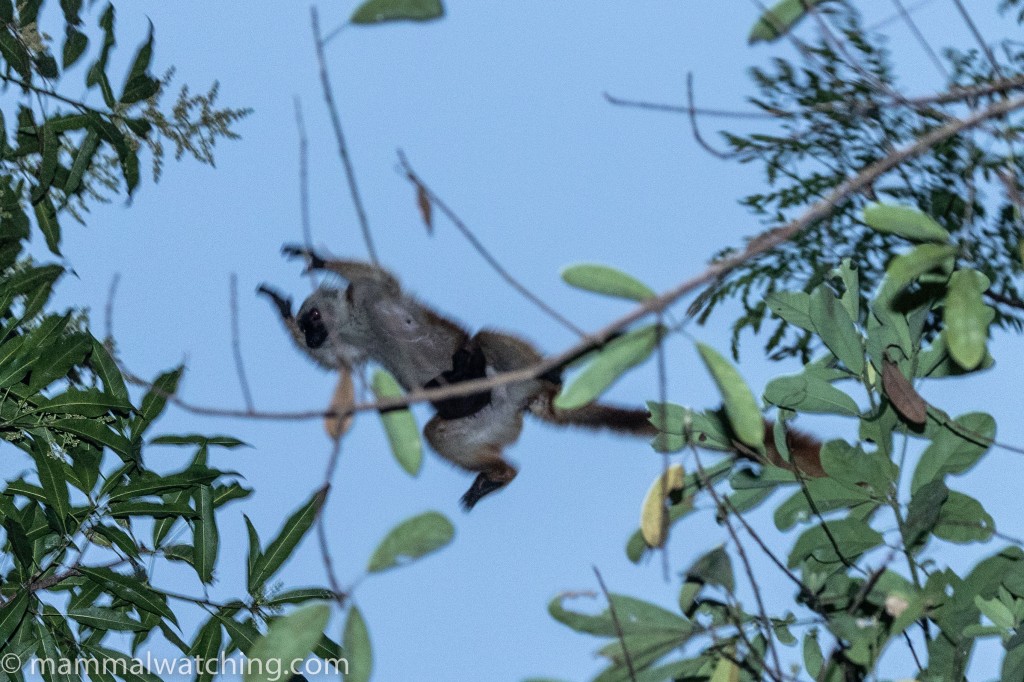
Black Lemur (Eulemur macaco)
We missed very little. And we missed none of our key targets. Madagascar is good like that. I had hoped we might see an extra bat species or two in the Ankarana caves, perhaps a Flying Fox on Nosy Be, and there was a chance for a couple of interesting rodents in Marojejy. Maybe a White-tailed Tree Rat or a Voalavo Mouse. But these were not really targets per se and we did not dedicate time to them especially.
I would love to have seen a Hairy-eared Dwarf Lemur in Marojejy but, even if it had not been raining, the species seems difficult to find here and is probably easier in other parks further south.
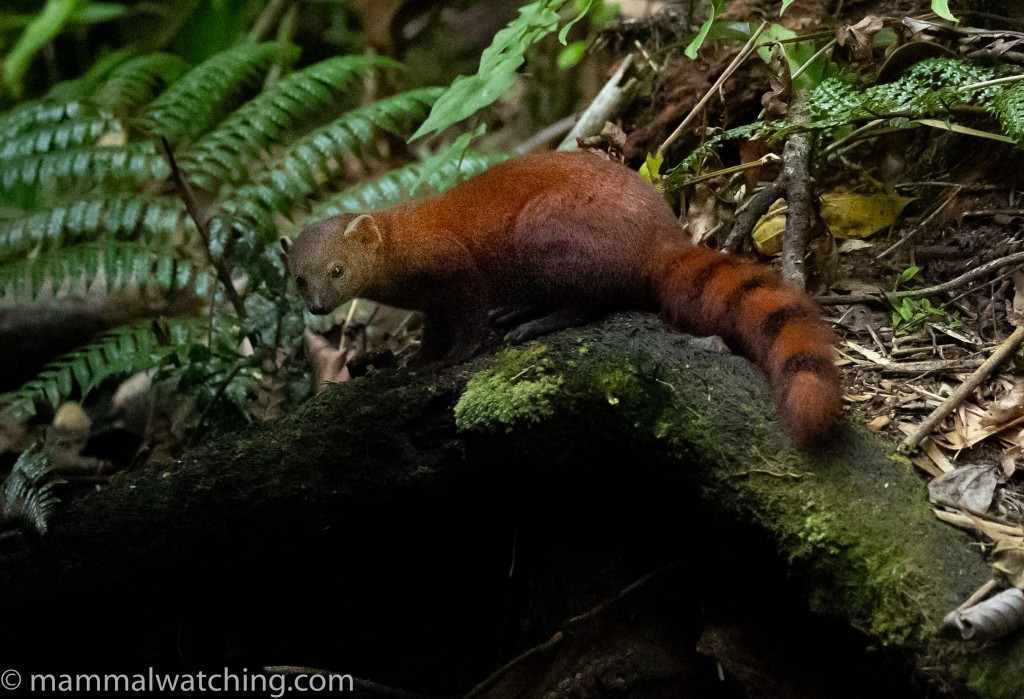
Ring-tailed Vontsira (Galidia elegans)
Thank you to the rest of my group who remained dedicated, smiling and considerate to the very end, even when the french fries ran out and the ants attacked. Thanks to several people for sending me intel in real time when I was there, including Martin Royle and Brett Hartl.
Thank you to Mogens Trolle for detailed information on several sights, and for introducing us to our great guide and trip mastermind, Patrick. I am sure we were not the easiest group Patrick has ever had to guide but he was smiling, patient and tres diplomatique until the very end.
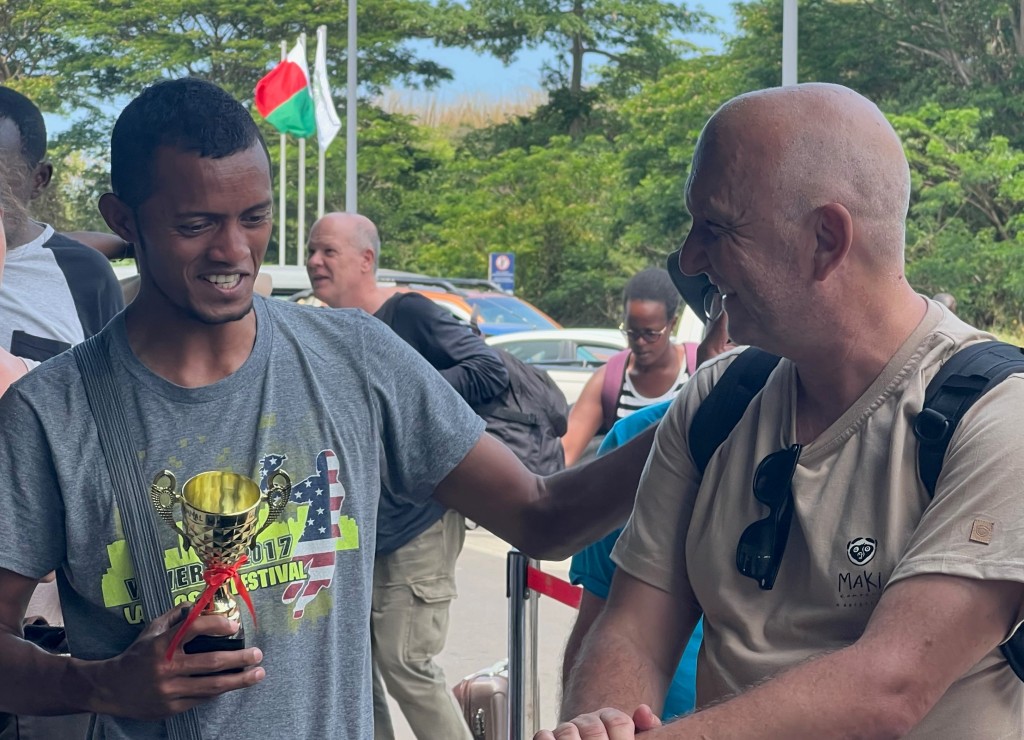
Patrick gives his acceptance speech after he is awarded mammalwatching cup. Photo Luqman Patel
Trip List
Key: Ank – Ankarana; Amb – Ambanja; Anda – Andamoty; Andr – Andrafiamena; Anki – Ankify; Dar – Daraina; Mar – Marojejy; MdA – Monagne d’Ambre; NB – Nosy Be.
Lowland Red Forest Rat (Nesomys audeberti) – Mar
House Rat (Rattus rattus) – Andr; NB
long-tailed rat species** – Amb
Arnhold’s Mouse Lemur (Microcebus arnholdi)- MdA
Nosy Be Mouse Lemur (M.mamiratra) -NB
Mittermeier’s Mouse Lemur (M.mittermeieri) – Mar
Sambirano Mouse Lemur (M.sambiranensis) – Amb
Tavaratra Mouse Lemur (M.tavaratra) – Andr; Ank; Dar
Northern Giant Mouse Lemur (Mirza zaza) – Amb
Montagne d’Ambre Dwarf Lemur (Cheirogaleus andysabini) – MdA
Geoffroy’s Dwarf Lemur (C.major) – Mar
Western “Sambirano” Fat-tailed Dwarf Lemur (C. cf. medius)* – Amb
Ankarana Dwarf Lemur (C.shethi) – Ank; Dar
Daraina Fork-marked Lemur (Phaner cf. electromontis)* – Dar
Montagne d’Ambre Fork-marked Lemur (Phaner electromontis) – MdA
Sambirano Fork-marked Lemur (P.parienti) – Amb
Ankarana Sportive Lemur (Lepilemur ankaranensis) – Ank; Dar
Gray’s Sportive Lemur (L.dorsalis) – Amb
Daraina Sportive Lemur (L.milanoii) – Dar
Nosy Be Sportive Lemur (L.tymerlachsoni) – NB
Northern Bamboo Lemur (H.occidentalis) – Mar
White-fronted Lemur (Eulemur albifrons) – Mar
Crowned Lemur (E.coronatus) – MdA; Ank; Andr; Dar
Blue-eyed Black Lemur (E.flavifrons) – Anda
Black Lemur (E.macaco) – Anki; NB
Sanford’s Brown Lemur (E.sanfordi) – MdA; Ank; Andr
Silky Sifaka (Propithecus candidus) – Mar
Perrier’s Sifaka (P.perrieri) – Andr
Golden-crowned Sifaka (P.tattersalli) – Dar
Aye-aye (Daubentonia madagascariensis) – Dar
Madagascan Rousette (Rousettus madagascariensis) – Ank
Madagascan Fruit Bat (Eidolon dupreanum) – Ank
Western Sheath-tailed Bat (P.tiavato) – Dar
Aellen’s Long-fingered Bat (Miniopterus aelleni) – Andr; Ank(?)
Madagascan Long-fingered Bat (M.brachytragos) (possible) – Andr
Glen’s Long-fingered Bat (M.gleni) – Ank
Griveaud’s long-fingered bat (M.griveaudi) – And; Dar
Malagasy Mouse-eared Bat (Myotis goudotii) – Andr
Malagasy Ring-tailed Mongoose (Galidia elegans) – MdA; Mar
Omura’s Whale (Balaenoptera omurai) – NB
Indo-pacific Bottlenose Dolphin (Tursiops aduncus) – NB
40 species including two taxonomically uncertain, yet almost certainly new, lemurs (*) and a mystery rat (**). Lifers in bold.
10 Comments
-
Vladimir Dinets
Juvenile black rats have shorter tails than adults, not longer. A tail tuft can go missing for a lot of reasons. That said, and undescribed species is always a possibility there.
But why didn’t you trap for tenrecs? Your list could be much longer, all you need is some dried fish.-
Jon Hall
Thanks. Yes that is true though you can usually notice when the tip of the tail has been lost because the tail doesn’t taper at the end, whereas this one does … The other Big-footed mice have long hairs on the distal third of the tail too so I am not sure… We didn’t have any traps. Good to know they are trappable though.
-
-
-
tomeslice
Hey Jon, I just got around to reading yours and Ian Thompson’s reports.
Both excellent and with great info, maps, details and pictures!I’m so jealous that I’m going to go there myself in 2023 with Alex Meyer and Jonas Livet 😀
I also agree with your mention of my superpower (otherwise known as an annoying habit, lol) to remember everything I ever read about mammal watching! Haha it’s both a curse and a blessing. I think it should cheer you up, as you are always likely to see >30 new lifers in places where the infrastructure, guiding services and accessibility is now better than it was when you visited in the past. That is until you run out of mammal species, of course ;-PGreat stuff!
Cheers!
Tomer -
Samuel
Great report as usual Jon and thanks for giving so much details and guide name for the Northern part of Madagascar that we did not visited yet and would allow us to see the last 3 sifakas of the country you mention here. I would concur with what Lynee says: I’m always impressed that you see so many mammals in all the places you visit and I don’t see as much in the same places 🙂
Leave a Reply
You must be logged in to post a comment.


Lynne Venart
Amazing trip report! Your guides must have been fabulous because I’ve been to some of these places and was not able to see many of the species you saw!